
Timeline of Russian inventions and technology records
Encyclopedia
Timeline of Russian inventions and technology records encompasses the key events in the history of technology in Russia
, starting from the Early East Slavs and up to the modern Russian Federation.
The entries in this timeline are mass products, technologies and single objects, mostly falling into the two categories:
This timeline includes products and technologies introduced by any citizens and peoples of Russia and her predecessor states, regardless of ethnicity, and including inventions of naturalized immigrant citizens.
Certain innovations, achieved by a multinational cooperation, also may be included into this timeline, in case Russian side played a major role in such projects. The inventions made abroad by Russian émigrés are not reflected here, but may be found on the list of Russian inventors.
For the plain list of Russian inventions, see the :Category:Russian inventions.
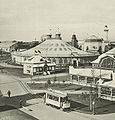

/ Ryazhenka
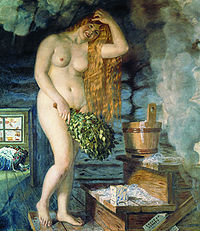 Banya
Banya
Blini
 Gusli
Gusli
Izba
Kosovorotka
Lapti
Shchi
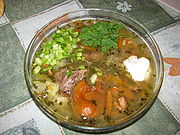 Smetana
Smetana
989 Kvass
/ Okroshka
989 Multidomed church
 997 Kissel
997 Kissel
 Birch bark document
Birch bark document
Koch
/ Icebreaker
 Gudok
Gudok
Medovukha
 1048 Russian fist fighting
1048 Russian fist fighting
Shashka
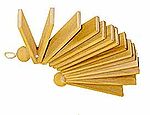 Treshchotka
Treshchotka
1149 Bear spear
Pelmeni
Onion dome
Zvonnitsa
1376 Sarafan
Boyar hat
Gulyay-gorod
Ukha
Russian oven

Rassolnik
c. 1430 Russian vodka
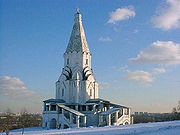 1510s Tented roof masonry
1510s Tented roof masonry
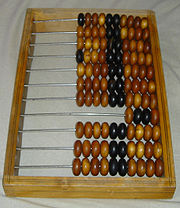 Russian abacus
Russian abacus
1552 Battery-tower
.jpg) 1561 Saint Basil's Cathedral
1561 Saint Basil's Cathedral
1566 Great Abatis Line
 1586 Tsar Cannon
1586 Tsar Cannon
 Bochka roof
Bochka roof
 Gorodki
Gorodki
Russian Mountains
Bird of Happiness
Dymkovo toy
 Troika
Troika
1659 Khokhloma
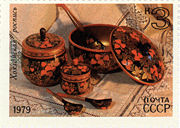
1685 Tula gingerbread
1688 Balalaika
 Table-glass
Table-glass
c. 1700 Water-based central heating
1704 Decimal currency
1717 Mechanic slide rest
1718 Yacht club

cupola
/ Lightning rod
1733 Peter and Paul Cathedral
1735 Tsar Bell
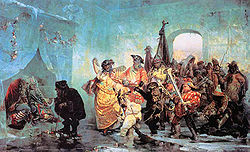 1739 Ice palace
1739 Ice palace
1741 Quick-firing battery
1754 Coaxial rotor
/ Model helicopter
1757 Licorne
1766 Two-cylinder engine
 1770 Amber Room
1770 Amber Room
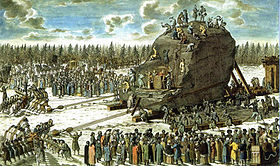 1770 Thunder Stone
1770 Thunder Stone
1776 Orenburg shawl
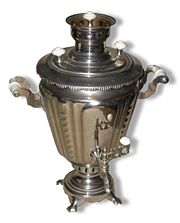 1778 Russian samovar
1778 Russian samovar
1779 Searchlight
 Russian guitar
Russian guitar
Valenki
1793 Screw drive elevator
1794 Searchlight optical telegraph
1795 Fedoskino miniature
/ Russian lacquer art
1796 Peaked cap
 1802 Electric arc
1802 Electric arc
1803 Arc welding
1812 Electric mine
 1814 Beehive frame
1814 Beehive frame
1825 Zhostovo painting
1828 Electromagnetic telegraph
1829 Three bolt equipment
 1832 Unit record equipment
1832 Unit record equipment
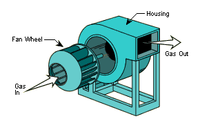 1835 Centrifugal fan
1835 Centrifugal fan
1837 Electroplating
1838 Electrotyping
1839 Electric boat
1839 Galvanoplastic sculpture
1847 Field anesthesia
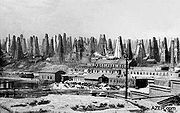 1848 Modern oil well
1848 Modern oil well
1851 Struve Geodetic Arc
1854 Modern field surgery
 1857 Radiator
1857 Radiator
 1858 Saint Isaac's Cathedral
1858 Saint Isaac's Cathedral
1859 Aluminothermy
 1860s Russian salad
1860s Russian salad
1861 Beef Stroganoff
1864 Modern icebreaker
1869 Periodic table
 1873 Odhner Arithmometer
1873 Odhner Arithmometer
1873 Armored cruiser
1875 Railway electrification system
 1876 Yablochkov candle
1876 Yablochkov candle
1877 Torpedo boat tender
1877 Tracked wagon
1878 Cylindric oil depot
1879 Modern oil tanker
 1880 Electric tram
1880 Electric tram
1881 Carbon arc welding
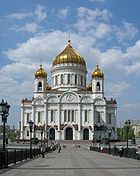 1883 Cathedral of Christ the Saviour
1883 Cathedral of Christ the Saviour
1888 Caterpillar farm tractor
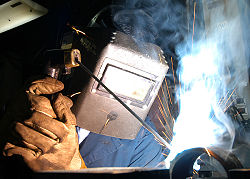 1888 Shielded metal arc welding
1888 Shielded metal arc welding
1888 Photoelectric cell
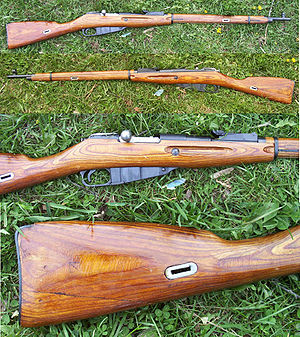 1889 Three-Line Rifle
1889 Three-Line Rifle
 1890 Matryoshka doll
1890 Matryoshka doll
1891 Thermal cracking
1894 Nephoscope
1895 Lightning detector
/ Radio receiver
1896 Thin-shell structure
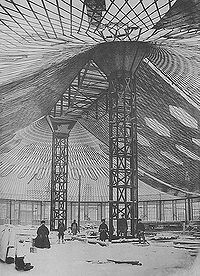 1896 Tensile structure
1896 Tensile structure
 1896 Hyperboloid structure
1896 Hyperboloid structure
1897 Gridshell
1898 Polar icebreaker
1902 Fire fighting foam
1903 Motor ship
1904 Foam extinguisher
1904 Modern mortar
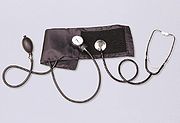 1905 Auscultatory blood pressure measurement
1905 Auscultatory blood pressure measurement
1905 Insubmersibility
1906 Electric seismometer
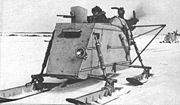 1907 Aerosan
1907 Aerosan
/ Snowmobile
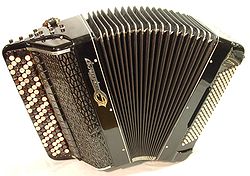 1907 Bayan
1907 Bayan
1907 Church of the Savior on Blood
1911 CRT television
1911 Knapsack parachute
1912 Drogue parachute
1913 Aerobatics
1913 Airliner
1913 Assault rifle
1913 Half-track
1914 Gyrocar
1914 Tachanka
1914 Strategic bomber
1914 Aerial ramming
1915 Activated charcoal gas mask
1915 Vezdekhod
 1915 Tsar Tank
1915 Tsar Tank
1916 Trans-Siberian Railway
1918 Budenovka
 1918 Ushanka
1918 Ushanka
 1919 Theremin
1919 Theremin
1922 Crystadine
1923 Palekh miniature
1924 Optophonic Piano
1926 Interlace
1927 Light-emitting diode
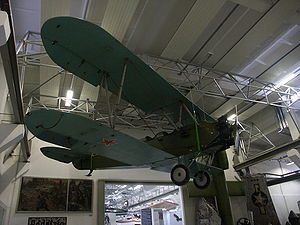 1927 Po-2
1927 Po-2
1928 Rabbage
1929 Cadaveric blood transfusion
1929 Pobedit
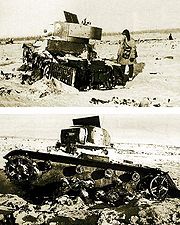 1929 Teletank
1929 Teletank
/ Military robot
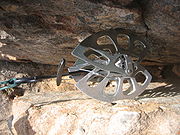 Spring-loaded camming device
Spring-loaded camming device
Abalakov thread
Electric propulsion
1930 Paratrooping
1930 Radiosonde
1931 Pressure suit
1931 Hypergolic propellant
1931 Rhythmicon
/ Drum machine
1932 Children's railway
1932 Terpsitone
 1932 Underwater welding
1932 Underwater welding
 1934 Tupolev ANT-20
1934 Tupolev ANT-20
1934 Cherenkov detector
1935 Kirza
1935 Moscow Metro
1935 Kremlin stars
1937 Drag chute
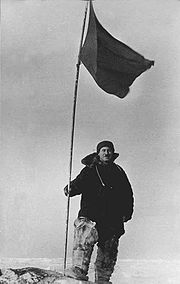 1937 Manned drifting ice station
1937 Manned drifting ice station
1937 Welded sculpture
1937 Fire-fighting sport
1938 Deep column station
 1938 Sambo
1938 Sambo
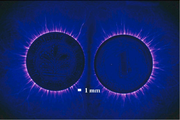 1939 Kirlian photography
1939 Kirlian photography
1939 Ilyushin Il-2
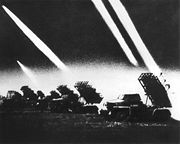 1939 Self-propelled multiple rocket launcher
1939 Self-propelled multiple rocket launcher
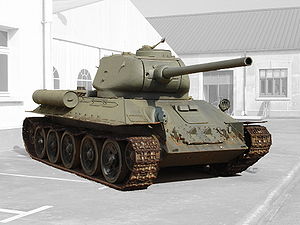 1940 T-34
1940 T-34
1941 Competitive rhythmic gymnastics
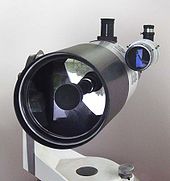 1941 Maksutov telescope
1941 Maksutov telescope
1941 Degaussing
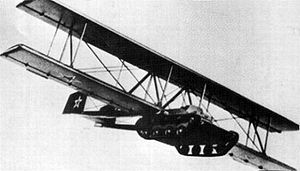 1942 Winged tank
1942 Winged tank
1942 Gramicidin S
1942 Rocket-powered fighter
1944 EPR spectroscopy
1945 T-54/55
1945 Passive resonant cavity bug
 1947 MiG-15
1947 MiG-15
1947 AK-47
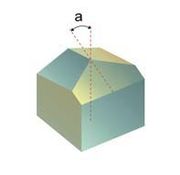 1950 Berkovich tip
1950 Berkovich tip
1951 Explosively pumped flux compression generator
1952 Vysotka
 1952 Carbon nanotubes
1952 Carbon nanotubes
 1952 Ilizarov apparatus
1952 Ilizarov apparatus
1954 Nuclear power plant
1955 MiG-21
1955 Ballistic missile submarine
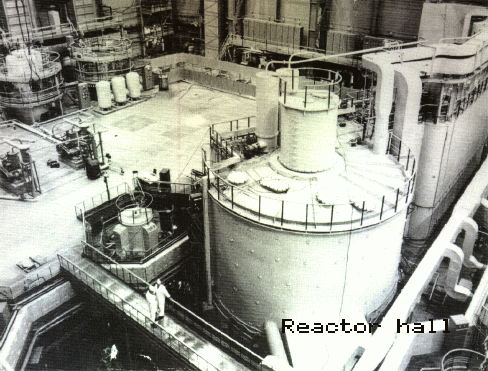 1955 Fast-neutron reactor
1955 Fast-neutron reactor
1955 Leningrad Metro
 1955 Tokamak
1955 Tokamak
1957 ANS synthesizer
1957 Synchrophasotron
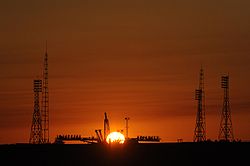 1957 Spaceport
1957 Spaceport
 1957 Intercontinental ballistic missile
1957 Intercontinental ballistic missile
1957 Orbital space rocket
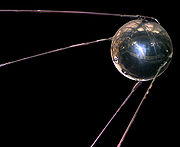 1957 Satellite
1957 Satellite
1957 Space capsule
 1957 Raketa hydrofoil
1957 Raketa hydrofoil
1957 Portable mobile phone
1958 Pocket phone
1958 Modern ternary computer
1959 Nuclear icebreaker
1959 Space probe
 1959 Missile boat
1959 Missile boat
 1959 Staged combustion cycle
1959 Staged combustion cycle
1960 Reentry capsule
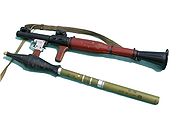 1961 RPG-7
1961 RPG-7
1961 Anti-ballistic missile
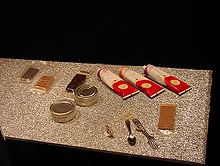 1961 Space food
1961 Space food
1961 Space suit
 1961 Human spaceflight
1961 Human spaceflight
1961 Platform screen doors
1961 Ekranoplan
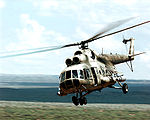 1961 Mil Mi-8
1961 Mil Mi-8
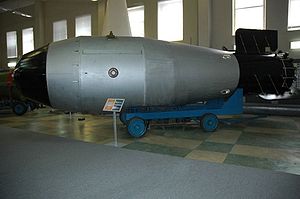 1961 Tsar Bomb
1961 Tsar Bomb
1962 3D holography
1964 Druzhba pipeline
1964 Plasma propulsion engine
1965 Extra-vehicular activity
 1965 Molniya orbit satellite
1965 Molniya orbit satellite
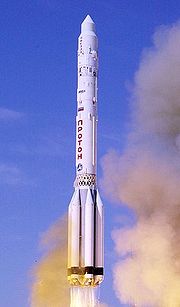 1965 Proton rocket
1965 Proton rocket
1965 Air-augmented rocket
1966 Lander spacecraft
1966 Orbiter
1966 Caspian Sea Monster
1966 Regional jet
1966 Soyuz rocket
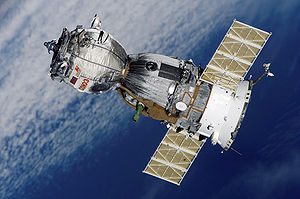 1966 Orbital module
1966 Orbital module
1967 Space toilet
1967 Ostankino Tower
1967 The Motherland Calls
1967 Automated space docking
1967 Venus lander
1968 Fractional Orbital Bombardment System
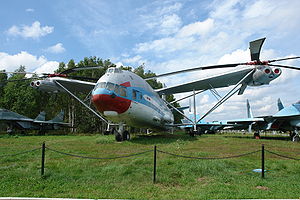 1968 Mil Mi-12
1968 Mil Mi-12
 1968 Trijet
1968 Trijet
1968 Supersonic transport
1969 Intercontinental submarine-launched ballistic missile
 1970s Radial keratotomy
1970s Radial keratotomy
1970 Turbojet train
1970 Robotic sample return
1970 Space rover
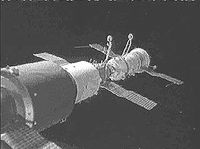 1971 Space station
1971 Space station
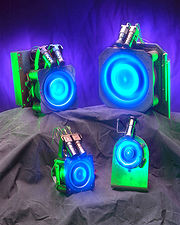 1972 Hall effect thruster
1972 Hall effect thruster
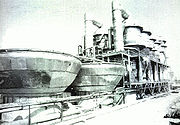 1972 Nuclear desalination
1972 Nuclear desalination
1973 Reflectron
1974 Electron cooling
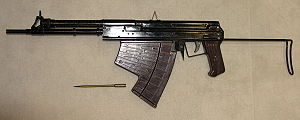 1975 Underwater assault rifle
1975 Underwater assault rifle
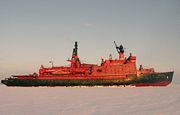 1975 Arktika class icebreaker
1975 Arktika class icebreaker
1975 Androgynous Peripheral Attach System
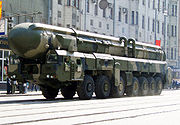 1976 Mobile ICBM
1976 Mobile ICBM
1976 Gas turbine tank
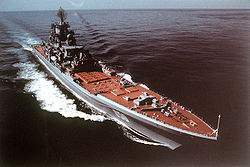 1977 Kirov class battlecruiser
1977 Kirov class battlecruiser
, assault ship or submarine
) currently in active operation in the world.
1978 Unmanned resupply spacecraft
1978 Active protection system
 1980 Typhoon class submarine
1980 Typhoon class submarine
1981 Tupolev Tu-160
1982 Helicopter ejection seat
 1984 Tetris
1984 Tetris
 1986 Modular space station
1986 Modular space station
1986 Beriev A-40
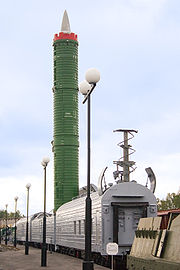 1987 Railcar-launched ICBM
1987 Railcar-launched ICBM
1987 MIR submersible
1987 RD-170 rocket engine
1988 Buran
1988 An-225
1989 Kola Superdeep Borehole
 1989 Supermaneuverability
1989 Supermaneuverability
1992 Nuclotron
1993 RAR
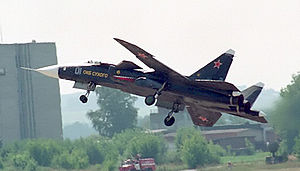 1996 3D thrust vectoring
1996 3D thrust vectoring
1997 Two-level single-vault transfer station
1998 Beriev Be-200
1998 Submarine-launched spacecraft
1999 Sea Launch
2001 Mirny Mine
2001 Superconducting nanowire single-photon detector
2003 Park Pobedy metro escalators
 2005 Orbitrap
2005 Orbitrap
 2007 NS 50 Let Pobedy
2007 NS 50 Let Pobedy
2007 Father of all bombs
2011 Nuclear power station barge
2011 Nord Stream
2012 Russky Island Bridge
Russia
Russia or , officially known as both Russia and the Russian Federation , is a country in northern Eurasia. It is a federal semi-presidential republic, comprising 83 federal subjects...
, starting from the Early East Slavs and up to the modern Russian Federation.
The entries in this timeline are mass products, technologies and single objects, mostly falling into the two categories:
- Indigenous inventions, either having worldwide importance (like arc weldingArc weldingArc welding is a type of welding that uses a welding power supply to create an electric arc between an electrode and the base material to melt the metals at the welding point. They can use either direct or alternating current, and consumable or non-consumable electrodes...
, assault rifleAssault rifleAn assault rifle is a selective fire rifle that uses an intermediate cartridge and a detachable magazine. Assault rifles are the standard infantry weapons in most modern armies...
, satelliteSatelliteIn the context of spaceflight, a satellite is an object which has been placed into orbit by human endeavour. Such objects are sometimes called artificial satellites to distinguish them from natural satellites such as the Moon....
) or more local significance (like onion domeOnion domeAn onion dome is a dome whose shape resembles the onion, after which they are named. Such domes are often larger in diameter than the drum upon which they are set, and their height usually exceeds their width...
, khokhlomaKhokhlomaKhokhloma or Khokhloma painting is the name of a Russian wood painting handicraft style, known for its vivid flower patterns, red and gold colors over a black background, and the distinctive effect it has when applied to cheap and light wooden tableware or furniture, making it look heavier,...
, ushankaUshankaAn ushanka , also known as a trooper, is a Russian fur cap with ear flaps that can be tied up to the crown of the cap, or tied at the chin to protect the ears, jaw and lower chin from the cold. The thick dense fur also offers some protection against blunt impacts to the head...
); - Products and objects with unique superlative characteristics and records associated with them (like Tsar CannonTsar CannonThe Tsar Cannon is a huge cannon on display on the grounds of the Moscow Kremlin. It was cast in 1586 in Moscow, by the Russian master bronze caster Andrey Chokhov. Mostly of symbolic impact, it was never fired in war...
, AK-47AK-47The AK-47 is a selective-fire, gas-operated 7.62×39mm assault rifle, first developed in the Soviet Union by Mikhail Kalashnikov. It is officially known as Avtomat Kalashnikova . It is also known as a Kalashnikov, an "AK", or in Russian slang, Kalash.Design work on the AK-47 began in the last year...
, Arktika class icebreakerArktika class icebreakerThe Arktika class is a Russian class of nuclear powered icebreakers. They are owned by the federal government, but were operated by the Murmansk Shipping Company until 2008, when they were transferred to the fully government-owned operator Atomflot. Of the ten civilian nuclear powered vessels...
).
This timeline includes products and technologies introduced by any citizens and peoples of Russia and her predecessor states, regardless of ethnicity, and including inventions of naturalized immigrant citizens.
Certain innovations, achieved by a multinational cooperation, also may be included into this timeline, in case Russian side played a major role in such projects. The inventions made abroad by Russian émigrés are not reflected here, but may be found on the list of Russian inventors.
For the plain list of Russian inventions, see the :Category:Russian inventions.


Early East Slavs
Baked milkBaked milk
Baked milk is a variety of boiled milk that has been particularly popular in Russia and Ukraine. It is made by simmering milk on low heat for eight hours or longer....
/ Ryazhenka
- Baked milk is made by simmeringSimmeringSimmering is a food preparation technique in which foods are cooked in hot liquids kept at or just below the boiling point of water , but higher than poaching temperature...
milk on low heat for eight hours or longer. The product has a light brown color, a specific taste and the ability to be stored safely at room temperature for up to forty hours, much longer than most other milk beverages. It has been produced since the ancient times, typically using a Russian ovenRussian oven.A Russian oven or Russian stove is a unique type of oven/furnace that first appeared in the 15th century. It is used both for cooking and domestic heating. The Russian oven burns firewood or wood manufacturing waste....
, and nowadays it is produced on an industrial scale. Of especial popularity in Russia is soured or fermented baked milk, traditionally known as ryazhenka.

Banya (sauna)
Banya in Russian can refer to any kind of steam bath, but usually to the Russian type of sauna. In Bulgarian, banya usually refers to a bath and bathing...
- Banya is a traditional Russian wet steam bath, where the bathing is performed inside special rooms or standalone wooden houses, with steam being produced by splashing water upon heated rocks. Historically, banya developed simultaneously with its closest relative, the Finnish saunaFinnish saunaThe Finnish sauna is a substantial part of Finnish culture. There are five million inhabitants and over two million saunas in Finland - an average of one per household. For Finnish people the sauna is a place to relax in with friends and family, and a place for physical and mental relaxation as...
, however modern saunas converted to dry steam, while banyas continue to use wet steam. Banya temperatures may exceed 110°C, and people often hit themselves or others with bunches of dried branches and leaves from white birchWhite BirchWhite Birch may refer to:* Betula papyrifera* Betula pendula* Shirakabaha, Japanese literary group* The White Birch , Norwegian recording artists...
, oakOakAn oak is a tree or shrub in the genus Quercus , of which about 600 species exist. "Oak" may also appear in the names of species in related genera, notably Lithocarpus...
or eucalyptusEucalyptusEucalyptus is a diverse genus of flowering trees in the myrtle family, Myrtaceae. Members of the genus dominate the tree flora of Australia...
in order to improve the circulation. It is customary to cool off in the breeze outdoors or splash around in cold water or in a lake or river. In the winter, people may roll in the snow or jump into the ice holes. After two or three sessions of sweat and cooling off, the ritual ends with drinking beverages or tea, playing games or relaxing in good company in an antechamber to the steam room. Banya provides a strong positive effect on health, reliefs a number of diseases and strengthens the immune systemImmune systemAn immune system is a system of biological structures and processes within an organism that protects against disease by identifying and killing pathogens and tumor cells. It detects a wide variety of agents, from viruses to parasitic worms, and needs to distinguish them from the organism's own...
.
Blini
- Blini are thin pancakePancakeA pancake is a thin, flat, round cake prepared from a batter, and cooked on a hot griddle or frying pan. Most pancakes are quick breads; some use a yeast-raised or fermented batter. Most pancakes are cooked one side on a griddle and flipped partway through to cook the other side...
s made with yeastYeastYeasts are eukaryotic micro-organisms classified in the kingdom Fungi, with 1,500 species currently described estimated to be only 1% of all fungal species. Most reproduce asexually by mitosis, and many do so by an asymmetric division process called budding...
. Blin comes from Old SlavicSlavic languagesThe Slavic languages , a group of closely related languages of the Slavic peoples and a subgroup of Indo-European languages, have speakers in most of Eastern Europe, in much of the Balkans, in parts of Central Europe, and in the northern part of Asia.-Branches:Scholars traditionally divide Slavic...
mlin, that means "to mill". Russian blini are made with yeasted batterBatter (cooking)Batter is a semi-liquid mixture of one or more flours combined with liquids such as water, milk or eggs used to prepare various foods. Often a leavening agent such as baking powder is included to aerate and fluff up the batter as it cooks, or the mixture may be naturally fermented for this purpose...
, which is left to rise and then diluted with cold or boiling water or milkMilkMilk is a white liquid produced by the mammary glands of mammals. It is the primary source of nutrition for young mammals before they are able to digest other types of food. Early-lactation milk contains colostrum, which carries the mother's antibodies to the baby and can reduce the risk of many...
. Blini may have originated in the time of the Slavic unity, and they had a somewhat ritual significance for the early Slavs in pre-ChristianChristianA Christian is a person who adheres to Christianity, an Abrahamic, monotheistic religion based on the life and teachings of Jesus of Nazareth as recorded in the Canonical gospels and the letters of the New Testament...
times, since they were a symbol of the sunSunThe Sun is the star at the center of the Solar System. It is almost perfectly spherical and consists of hot plasma interwoven with magnetic fields...
due to their round form. Blini were traditionally prepared at the end of the winter to honor the rebirth of the new sun (Butter Week, or MaslenitsaMaslenitsaMaslenitsa . Maslenitsa corresponds to the Western Christian Carnival, except that Orthodox Lent begins on a Monday instead of a Wednesday. The Orthodox date of Easter can differ greatly from the Western Christian date. In 2008, for example, Maslenitsa was celebrated from March 2 to March...
). This tradition was adopted by Orthodox church and is carried on to the present day.

- Gusli is the oldest Slavic and Russian multi-string plucked instrument. Preserved instruments discovered by archaeologists have between 5 and 9 strings with one example having 12 strings. Gusli may have derived from a ByzantineByzantiumByzantium was an ancient Greek city, founded by Greek colonists from Megara in 667 BC and named after their king Byzas . The name Byzantium is a Latinization of the original name Byzantion...
form of the Greek kythare and have a number of relative instruments, like Finnish kanteleKanteleA kantele or kannel is a traditional plucked string instrument of the zither family native to Finland, Estonia, and Karelia. It is related to the Russian gusli, the Latvian kokle and the Lithuanian kanklės. Together these instruments make up the family known as Baltic psalteries...
. The first mention of gusli dates back to 591AD to a treatise by the GreekGreeksThe Greeks, also known as the Hellenes , are a nation and ethnic group native to Greece, Cyprus and neighboring regions. They also form a significant diaspora, with Greek communities established around the world....
historian Theophylact SimocattaTheophylact SimocattaTheophylact Simocatta was an early seventh-century Byzantine historiographer, arguably ranking as the last historian of Late Antiquity, writing in the time of Heraclius about the late Emperor Maurice .-Life:His history of the reign of emperor Maurice is in eight books...
which describes the instrument being used by Slavs from the area of the later Kievan Rus'Kievan Rus'Kievan Rus was a medieval polity in Eastern Europe, from the late 9th to the mid 13th century, when it disintegrated under the pressure of the Mongol invasion of 1237–1240....
. The gusli are thought to have been the instrument used by the legendary BoyanBoyan (bard)Boyan is the name of a bard who was mentioned in the Rus' epic The Lay of Igor's Campaign as being active at the court of Yaroslav the Wise. He is apostrophized as Volos's grandson in the opening lines of The Lay...
(a singer of tales) and other heroes of Russian mythology. In the later times gusli were widely used by the wandering SkomorokhSkomorokhThe skomorokhs were medieval East Slavic harlequins, i.e. actors, who could also sing, dance, play musical instruments and compose most of the scores for their oral/musical and dramatic performances. The etymology of the word is not completely clear...
musicians and entertainers.
Izba
Izba
An izba is a traditional Russian countryside dwelling. A type of log house, it forms the living quarters of a conventional Russian farmstead. It is generally built close to the road and inside a yard, which also encloses a kitchen garden, hayshed, and barn within a simple woven stick fence...
- An izba is a traditional Russian countryside dwelling, a type of log house, suited to the colder climate of North-Eastern Europe and Siberia. Traditional, old-style izba construction involved the use of simple tools, such as ropes, axes, knives, and spades. Nails were not generally used, as metal was relatively expensive, and neither were saws a common construction tool. Both interior and exterior were of split tree trunks, the gap between was usually filled with river clay. From the 15th century on, the central element of the interior of izba was Russian ovenRussian oven.A Russian oven or Russian stove is a unique type of oven/furnace that first appeared in the 15th century. It is used both for cooking and domestic heating. The Russian oven burns firewood or wood manufacturing waste....
. Outside izbas were often embellished by various special architectural features, for example the rich wood carving decorations on windows. Such decorative elements and the use of the Russian oven are still commonly found in many modern Russian countryside houses.
Kosovorotka
Kosovorotka
A kosovorotka is a Russian, skewed-collared shirt. The word is derived from koso - askew, and vorot collar.-Description:A kosovorotka is a traditional Russian shirt, long sleeved and reaching down to the mid-thigh...
- A kosovorotka is a RussiaRussiaRussia or , officially known as both Russia and the Russian Federation , is a country in northern Eurasia. It is a federal semi-presidential republic, comprising 83 federal subjects...
n skewed-collared shirtShirtA shirt is a cloth garment for the upper body. Originally an undergarment worn exclusively by men, it has become, in American English, a catch-all term for almost any garment other than outerwear such as sweaters, coats, jackets, or undergarments such as bras, vests or base layers...
, long sleeved and reaching down to the mid-thigh, a traditional top garment from the ancient times. The name derived from koso (askew), and vorot (collar), since the collar of this shirt appears skewed when it is left unbuttoned. The collar and sleeves of kosovorotka were often decorated with a traditional Slavic ornament. It was worn by peasants and townsmen of various social categories into the early 20th century, until being displaced by less elaborate clothing. The garment is also known as a tolstovka, or the Tolstoy-shirt, because the writer Count Leo TolstoyLeo TolstoyLev Nikolayevich Tolstoy was a Russian writer who primarily wrote novels and short stories. Later in life, he also wrote plays and essays. His two most famous works, the novels War and Peace and Anna Karenina, are acknowledged as two of the greatest novels of all time and a pinnacle of realist...
customarily wore one in his later years. Now kosovorotkas appear mostly as souvenirs and as scenic garments of Russian folk artFolk artFolk art encompasses art produced from an indigenous culture or by peasants or other laboring tradespeople. In contrast to fine art, folk art is primarily utilitarian and decorative rather than purely aesthetic....
ensembles.
Lapti
- Lapti is an East Slavic variant of bast shoes. A kind of baskets fit to the shape of a foot, lapti were woven primarily from bast of the lindenTiliaTilia is a genus of about 30 species of trees native throughout most of the temperate Northern Hemisphere. The greatest species diversity is found in Asia, and the genus also occurs in Europe and eastern North America, but not western North America...
tree or from birchBirchBirch is a tree or shrub of the genus Betula , in the family Betulaceae, closely related to the beech/oak family, Fagaceae. The Betula genus contains 30–60 known taxa...
barkBarkBark is the outermost layers of stems and roots of woody plants. Plants with bark include trees, woody vines and shrubs. Bark refers to all the tissues outside of the vascular cambium and is a nontechnical term. It overlays the wood and consists of the inner bark and the outer bark. The inner...
. They were easy to manufacture, but not very durable. In Russia, lapti were worn until 1920s, or 1930s, as a cheap replacement for leather shoes, just like clogClog (shoe)A clog is a type of footwear made in part or completely from wood.The Oxford English Dictionary defines a clog as a "thick piece of wood", and later as a "wooden soled overshoe" and a "shoe with a thick wooden sole"....
s in the Western EuropeWestern EuropeWestern Europe is a loose term for the collection of countries in the western most region of the European continents, though this definition is context-dependent and carries cultural and political connotations. One definition describes Western Europe as a geographic entity—the region lying in the...
.
Shchi
Shchi
Shchi is a Russian soup with cabbage as the primary ingredient. Its primary distinction is its sour taste, which usually originates from cabbage. When sauerkraut is used instead, the soup is called sour shchi, and soups based on sorrel, spinach, nettle, and similar plants are called green shchi...
- Shchi is a Russian soupSoupSoup is a generally warm food that is made by combining ingredients such as meat and vegetables with stock, juice, water, or another liquid. Hot soups are additionally characterized by boiling solid ingredients in liquids in a pot until the flavors are extracted, forming a broth.Traditionally,...
with cabbageCabbageCabbage is a popular cultivar of the species Brassica oleracea Linne of the Family Brassicaceae and is a leafy green vegetable...
as the primary ingredient, which makes it possible for the prepared dish to be stored safely for rather a long time without losing its taste qualities. Generally it is made with either fresh cabbage or sauerkrautSauerkrautSauerkraut , directly translated from German: "sour cabbage", is finely shredded cabbage that has been fermented by various lactic acid bacteria, including Leuconostoc, Lactobacillus, and Pediococcus. It has a long shelf-life and a distinctive sour flavor, both of which result from the lactic acid...
and other winter vegetables, although meatMeatMeat is animal flesh that is used as food. Most often, this means the skeletal muscle and associated fat and other tissues, but it may also describe other edible tissues such as organs and offal...
can be added. Shchi made with sauerkraut has a sour taste and is called sour shchi. A summer sorrel soupSorrel soupSorrel soup is a soup made from water or broth, sorrel leaves, and salt. Other possible ingredients are egg yolks or eggs , potatoes, carrots, parsley root, rice . It can be served hot or cold, and usually with sour cream. It is known in Russian, Polish, Ukrainian, Lithuanian, and Eastern European...
, also popular in pre-RevolutionaryRussian Revolution of 1917The Russian Revolution is the collective term for a series of revolutions in Russia in 1917, which destroyed the Tsarist autocracy and led to the creation of the Soviet Union. The Tsar was deposed and replaced by a provisional government in the first revolution of February 1917...
and today's Russia, is known as green shchi. Usually smetana cream is added into shchi before serving.

- Smetana is thick, yellowish-white and slightly sour-tasting cream which contains about 40 % milk fat. It is made by curdling pasteurized cream. In Russian cooking, it is used virtually in everything from appetizers and main courses to desserts. It is somewhat close to a crème fraîcheCrème fraîcheCrème fraîche is a soured cream containing about 28% butterfat and with a pH of around 4.5. It is soured with bacterial culture, but is less sour than sour cream. It has a comparatively high viscosity and a higher fat content....
(28%), but much heavier and thicker with usually 36% to 42 % milkfat or even higher, and more sour in taste. Smetana is ideal to be used in dishes requiring a long cooking time in the oven, since it will not curdle when cooked or added to hot dishes.
10th century
KokoshnikKokoshnik
The kokoshnik is a traditional Russian head-dress worn by women and girls to accompany the sarafan. It is patterned to match the style of the sarafan and can be pointed or round. It is tied at the back of the head with long thick ribbons in a large bow. The forehead is sometimes decorated with...
- The kokoshnik is a traditional Russian women's head-dress. It is patterned to match the style of the sarafanSarafanA Sarafan is a traditional Russian long, shapeless jumper dress worn as Russian folk costume by women and girls.Chronicles first mention it under the year 1376, and since that time it was worn well until the 20th century. It is now worn as folk costume for performing Russian folk songs and folk...
and can be pointed or round. It is tied at the back of the head with long thick ribbons in a large bow. The forehead is sometimes decorated with pearls or other jewelry. The word kokoshnik appeared in the 16th century, however the earliest head dress pieces of the similar type were found in the 10th-12th cc. burials in Veliky NovgorodVeliky NovgorodVeliky Novgorod is one of Russia's most historic cities and the administrative center of Novgorod Oblast. It is situated on the M10 federal highway connecting Moscow and St. Petersburg. The city lies along the Volkhov River just below its outflow from Lake Ilmen...
. It was worn by girls and women on special occasions until the Russian Revolution, and subsequently was introduced into the Western fashionFashionFashion, a general term for a currently popular style or practice, especially in clothing, foot wear, or accessories. Fashion references to anything that is the current trend in look and dress up of a person...
by Russian émigréÉmigréÉmigré is a French term that literally refers to a person who has "migrated out", but often carries a connotation of politico-social self-exile....
s.
989 Kvass
Kvass
Kvass, kvas, quass or gira, gėra is a fermented beverage made from black...
/ Okroshka
Okroshka
Okróshka is a cold soup of Russian origin that is also found in Ukraine. The name probably originates from "kroshit'" , which means to crumble into small pieces....
- Kvass or kvas, sometimes called in English a bread drink, is a fermentedFermentation (food)Fermentation in food processing typically is the conversion of carbohydrates to alcohols and carbon dioxide or organic acids using yeasts, bacteria, or a combination thereof, under anaerobic conditions. Fermentation in simple terms is the chemical conversion of sugars into ethanol...
beverage made from black ryeRyeRye is a grass grown extensively as a grain and as a forage crop. It is a member of the wheat tribe and is closely related to barley and wheat. Rye grain is used for flour, rye bread, rye beer, some whiskeys, some vodkas, and animal fodder...
or rye breadBreadBread is a staple food prepared by cooking a dough of flour and water and often additional ingredients. Doughs are usually baked, but in some cuisines breads are steamed , fried , or baked on an unoiled frying pan . It may be leavened or unleavened...
(which contributes to its light or dark colour). By the content of alcoholAlcoholIn chemistry, an alcohol is an organic compound in which the hydroxy functional group is bound to a carbon atom. In particular, this carbon center should be saturated, having single bonds to three other atoms....
resulted from fermentation, it is classified as non-alcoholic: up to 1.2% of alcohol, which is so low that it is considered acceptable for consumption by children. While the early low-alcoholic prototypes of kvass were known in some ancient civilizations, its modern, almost non-alcoholic form originated in the Eastern EuropeEastern EuropeEastern Europe is the eastern part of Europe. The term has widely disparate geopolitical, geographical, cultural and socioeconomic readings, which makes it highly context-dependent and even volatile, and there are "almost as many definitions of Eastern Europe as there are scholars of the region"...
. Kvass was first mentioned in the Russian Primary ChroniclePrimary ChronicleThe Primary Chronicle , Ruthenian Primary Chronicle or Russian Primary Chronicle, is a history of Kievan Rus' from about 850 to 1110, originally compiled in Kiev about 1113.- Three editions :...
, which tells how Prince Vladimir the Great gave kvass to the people among other beverages, while celebrating the Christianization of Kievan Rus'. Kvass is also known as a main ingredient in okroshkaOkroshkaOkróshka is a cold soup of Russian origin that is also found in Ukraine. The name probably originates from "kroshit'" , which means to crumble into small pieces....
, a Russian cold soup.
989 Multidomed church
- The multidomed church is a typical form of Russian church architecture, which distinguishes Russia from other Orthodox nations and Christian denominations. Indeed, the earliest Russian churches, built just after the Christianization of Kievan Rus', were multi-domed, which led some historians to speculate how Russian pre-Christian pagan temples might have looked like. Namely, these early churches were 13-domed wooden Saint Sophia Cathedral in NovgorodSaint Sophia Cathedral in NovgorodThe Cathedral of St. Sophia in the Kremlin in Veliky Novgorod is the cathedral church of the Archbishop of Novgorod and the mother church of the Novgorodian Eparchy.-History:...
(989) and 25-domed stone Desyatinnaya Church in KievKievKiev or Kyiv is the capital and the largest city of Ukraine, located in the north central part of the country on the Dnieper River. The population as of the 2001 census was 2,611,300. However, higher numbers have been cited in the press....
(989-996). The number of domes typically has a symbolical meaning in the Russian architectureRussian architectureRussian architecture follows a tradition whose roots were established in the Eastern Slavic state of Kievan Rus'. After the fall of Kiev, Russian architectural history continued in the principalities of Vladimir-Suzdal, Novgorod, the succeeding states of the Tsardom of Russia, the Russian Empire,...
, for example 13 domes symbolize ChristChristChrist is the English term for the Greek meaning "the anointed one". It is a translation of the Hebrew , usually transliterated into English as Messiah or Mashiach...
with 12 Apostles, while 25 domes mean the same with additional 12 Prophets of Old TestamentOld TestamentThe Old Testament, of which Christians hold different views, is a Christian term for the religious writings of ancient Israel held sacred and inspired by Christians which overlaps with the 24-book canon of the Masoretic Text of Judaism...
. Multiple domes of Russian churches were often made of wood and were comparatively smaller than the ByzantineByzantineByzantine usually refers to the Roman Empire during the Middle Ages.Byzantine may also refer to:* A citizen of the Byzantine Empire, or native Greek during the Middle Ages...
domes.

Kissel
Kissel or kisel is a fruit soup, popular as a dessert in Eastern and Northern Europe. It consists of sweetened juice, thickened with arrowroot, cornstarch or potato starch, and sometimes red wine or fresh or dried fruits are added...
- Kissel or kisel is a dessert that consists of sweetened juice, typically that of berries, thickened with arrowrootArrowrootArrowroot, or obedience plant , Bermuda arrowroot, araru, ararao, is a large perennial herb found in rainforest habitats...
, cornstarchCornstarchCorn starch, cornstarch, cornflour or maize starch is the starch of the corn grain obtained from the endosperm of the corn kernel.-History:...
or potato starchPotato starchPotato starch is starch extracted from potatoes. The cells of the root tubers of the potato plant contain starch grains . To extract the starch, the potatoes are crushed; the starch grains are released from the destroyed cells...
, with red wine or dried fruitDried fruitDried fruit is fruit where the majority of the original water content has been removed either naturally, through sun drying, or through the use of specialized dryers or dehydrators. Dried fruit has a long tradition of use dating back to the fourth millennium BC in Mesopotamia, and is prized...
s added sometimes. The dessert can be served either hot or cold, and if made using less thickening starch it can be drunk, which is common in Russia. Kissel was mentioned for the first time in the Primary ChroniclePrimary ChronicleThe Primary Chronicle , Ruthenian Primary Chronicle or Russian Primary Chronicle, is a history of Kievan Rus' from about 850 to 1110, originally compiled in Kiev about 1113.- Three editions :...
, where it forms part of the story of how a bisieged Russian city was saved from nomadic Pechenegs.
11th century

Birch bark document
A birch bark document is a document written on pieces of birch bark. Such documents existed in several cultures. For instance, some Gandharan Buddhist texts have been found written on birch bark and preserved in clay jars....
- A birch bark document is a document written on pieces of birch barkBirch barkBirch bark or birchbark is the bark of several Eurasian and North American birch trees of the genus Betula.The strong and water-resistant cardboard-like bark can be easily cut, bent, and sewn, which made it a valuable building, crafting, and writing material, since pre-historic times...
. This form of writing material was developed independently by several ancient cultures. In Rus' the usage of the specially prepared birch bark as a cheap replacement for pergament or paperPaperPaper is a thin material mainly used for writing upon, printing upon, drawing or for packaging. It is produced by pressing together moist fibers, typically cellulose pulp derived from wood, rags or grasses, and drying them into flexible sheets....
became widespread soon after the Christianization of the country. The earliest Russian birch bark documents (likely written in the first quarter of the 11th century) have been found in Veliky NovgorodVeliky NovgorodVeliky Novgorod is one of Russia's most historic cities and the administrative center of Novgorod Oblast. It is situated on the M10 federal highway connecting Moscow and St. Petersburg. The city lies along the Volkhov River just below its outflow from Lake Ilmen...
. In the total, more than 1000 such documents have been discovered, most of them in Novgorod and the rest in other ancient cities in RussiaRussiaRussia or , officially known as both Russia and the Russian Federation , is a country in northern Eurasia. It is a federal semi-presidential republic, comprising 83 federal subjects...
, UkraineUkraineUkraine is a country in Eastern Europe. It has an area of 603,628 km², making it the second largest contiguous country on the European continent, after Russia...
and BelarusBelarusBelarus , officially the Republic of Belarus, is a landlocked country in Eastern Europe, bordered clockwise by Russia to the northeast, Ukraine to the south, Poland to the west, and Lithuania and Latvia to the northwest. Its capital is Minsk; other major cities include Brest, Grodno , Gomel ,...
. Many birch bark documents were written by quite common people, not only by clergy or nobility. This fact led some historians to suggest that before the Mongol invasion of Rus' the level of literacyLiteracyLiteracy has traditionally been described as the ability to read for knowledge, write coherently and think critically about printed material.Literacy represents the lifelong, intellectual process of gaining meaning from print...
in the country might have been considerably higher than in Western EuropeWestern EuropeWestern Europe is a loose term for the collection of countries in the western most region of the European continents, though this definition is context-dependent and carries cultural and political connotations. One definition describes Western Europe as a geographic entity—the region lying in the...
of the time.
Koch
Koch (boat)
The Koch was a special type of small one or two mast wooden sailing ships designed and used in Russia for transpolar voyages in ice conditions of the Arctic seas, popular among the Pomors....
/ Icebreaker
Icebreaker
An icebreaker is a special-purpose ship or boat designed to move and navigate through ice-covered waters. Although the term usually refers to ice-breaking ships, it may also refer to smaller vessels .For a ship to be considered an icebreaker, it requires three traits most...
- The koch was an ancient form of icebreakerIcebreakerAn icebreaker is a special-purpose ship or boat designed to move and navigate through ice-covered waters. Although the term usually refers to ice-breaking ships, it may also refer to smaller vessels .For a ship to be considered an icebreaker, it requires three traits most...
, being a special type of small one or two mast wooden sailing shipSailing shipThe term sailing ship is now used to refer to any large wind-powered vessel. In technical terms, a ship was a sailing vessel with a specific rig of at least three masts, square rigged on all of them, making the sailing adjective redundant. In popular usage "ship" became associated with all large...
s, used for voyages in the ice conditions of the ArcticArcticThe Arctic is a region located at the northern-most part of the Earth. The Arctic consists of the Arctic Ocean and parts of Canada, Russia, Greenland, the United States, Norway, Sweden, Finland, and Iceland. The Arctic region consists of a vast, ice-covered ocean, surrounded by treeless permafrost...
seas and SiberiaSiberiaSiberia is an extensive region constituting almost all of Northern Asia. Comprising the central and eastern portion of the Russian Federation, it was part of the Soviet Union from its beginning, as its predecessor states, the Tsardom of Russia and the Russian Empire, conquered it during the 16th...
n rivers. Koch was developed by the RussiaRussiaRussia or , officially known as both Russia and the Russian Federation , is a country in northern Eurasia. It is a federal semi-presidential republic, comprising 83 federal subjects...
n PomorsPomorsPomors or Pomory are Russian settlers and their descendants on the White Sea coast. It is also term of self-identification for the descendants of Russian, primarily Novgorod, settlers of Pomorye , living on the White Sea coasts and the territory whose southern border lies on a watershed which...
since the 11th century, when they started settling on the White SeaWhite SeaThe White Sea is a southern inlet of the Barents Sea located on the northwest coast of Russia. It is surrounded by Karelia to the west, the Kola Peninsula to the north, and the Kanin Peninsula to the northeast. The whole of the White Sea is under Russian sovereignty and considered to be part of...
shores. Koch's hull was protected by a belt of ice-floe resistant flush skin-planking (made of oakOakAn oak is a tree or shrub in the genus Quercus , of which about 600 species exist. "Oak" may also appear in the names of species in related genera, notably Lithocarpus...
or larchLarchLarches are conifers in the genus Larix, in the family Pinaceae. Growing from 15 to 50m tall, they are native to much of the cooler temperate northern hemisphere, on lowlands in the north and high on mountains further south...
) along the variable water-line, and had a false keel for on-ice portagePortagePortage or portaging refers to the practice of carrying watercraft or cargo over land to avoid river obstacles, or between two bodies of water. A place where this carrying occurs is also called a portage; a person doing the carrying is called a porter.The English word portage is derived from the...
. If a koch became squeezed by the ice-fields, its rounded bodylines below the water-line would allow for the ship to be pushed up out of the water and onto the ice with no damage. In the 19th century similar protective features were adopted to modern icebreakerIcebreakerAn icebreaker is a special-purpose ship or boat designed to move and navigate through ice-covered waters. Although the term usually refers to ice-breaking ships, it may also refer to smaller vessels .For a ship to be considered an icebreaker, it requires three traits most...
s.

Gudok
The gudok or hudok is an ancient Eastern Slavic string musical instrument, played with a bow.A gudok usually had three strings, two of them tuned in unison and played as a drone, the third tuned a fifth higher. All three strings were in the same plane at the bridge, so that a bow could make them...
- The gudok is an ancient East SlavicEast SlavsThe East Slavs are Slavic peoples speaking East Slavic languages. Formerly the main population of the medieval state of Kievan Rus, by the seventeenth century they evolved into the Russian, Ukrainian, and Belarusian peoples.-Sources:...
string musical instrumentMusical instrumentA musical instrument is a device created or adapted for the purpose of making musical sounds. In principle, any object that produces sound can serve as a musical instrument—it is through purpose that the object becomes a musical instrument. The history of musical instruments dates back to the...
, played with a bowBow (music)In music, a bow is moved across some part of a musical instrument, causing vibration which the instrument emits as sound. The vast majority of bows are used with string instruments, although some bows are used with musical saws and other bowed idiophones....
. It usually had three strings, two of them tuned in unisonUnisonIn music, the word unison can be applied in more than one way. In general terms, it may refer to two notes sounding the same pitch, often but not always at the same time; or to the same musical voice being sounded by several voices or instruments together, either at the same pitch or at a distance...
and played as a drone, the third tuned a fifthPerfect fifthIn classical music from Western culture, a fifth is a musical interval encompassing five staff positions , and the perfect fifth is a fifth spanning seven semitones, or in meantone, four diatonic semitones and three chromatic semitones...
higher. All three strings were in the same plane at the bridge, so that a bow could make them all sound simultaneously. Sometimes the gudok also had several sympathetic strings (up to eight) under the sounding boardSounding boardA sound board, or soundboard, is the surface of a string instrument that the strings vibrate against, usually via some sort of bridge. The resonant properties of the sound board and the interior of the instrument greatly increase loudness over the string alone.The sound board operates by the...
. These made the gudok's sound warm and rich. It was also possible to play the gudok while standing or dancing, which made it popular among skomorokhSkomorokhThe skomorokhs were medieval East Slavic harlequins, i.e. actors, who could also sing, dance, play musical instruments and compose most of the scores for their oral/musical and dramatic performances. The etymology of the word is not completely clear...
s. The name gudok comes from the 17th century, however the same type of instrument existed from 11th to 16th century, but was called smyk.
Medovukha
Medovukha
Medovukha is an Old Balto-Slavic honey-based alcoholic beverage very similar to mead. These two words are related and go back to the Proto-Indo-European meddhe...
- Medovukha is an Old Slavic honeyHoneyHoney is a sweet food made by bees using nectar from flowers. The variety produced by honey bees is the one most commonly referred to and is the type of honey collected by beekeepers and consumed by humans...
-based alcoholic beverage very similar to meadMeadMead , also called honey wine, is an alcoholic beverage that is produced by fermenting a solution of honey and water. It may also be produced by fermenting a solution of water and honey with grain mash, which is strained immediately after fermentation...
, but much cheaper and faster in making. Since the old times Slavs exported the fermentedFermentation (food)Fermentation in food processing typically is the conversion of carbohydrates to alcohols and carbon dioxide or organic acids using yeasts, bacteria, or a combination thereof, under anaerobic conditions. Fermentation in simple terms is the chemical conversion of sugars into ethanol...
mead as a luxury product to Europe in huge quantities. Fermentation occurs naturally over 15 to 50 years, originally rendering the product very expensive and only accessible to the nobilityNobilityNobility is a social class which possesses more acknowledged privileges or eminence than members of most other classes in a society, membership therein typically being hereditary. The privileges associated with nobility may constitute substantial advantages over or relative to non-nobles, or may be...
. However, in the 11th century East Slavs found that fermentation occurred much faster when the honey mixture was heated, enabling medovukha to become a folk drink in the territory of Rus'Kievan Rus'Kievan Rus was a medieval polity in Eastern Europe, from the late 9th to the mid 13th century, when it disintegrated under the pressure of the Mongol invasion of 1237–1240....
. In the 14th century, the invention of distillationDistillationDistillation is a method of separating mixtures based on differences in volatilities of components in a boiling liquid mixture. Distillation is a unit operation, or a physical separation process, and not a chemical reaction....
made it possible to create a prototype of the modern medovukha, however vodkaVodkaVodka , is a distilled beverage. It is composed primarily of water and ethanol with traces of impurities and flavorings. Vodka is made by the distillation of fermented substances such as grains, potatoes, or sometimes fruits....
was invented at the same time and gradually surpassed medovukha in popularity.

- Russian fist fighting is an ancient RussianRussiansThe Russian people are an East Slavic ethnic group native to Russia, speaking the Russian language and primarily living in Russia and neighboring countries....
combat sportCombat sportA Combat sport, also known as a Fighting sport, is a competitive contact sport where two combatants fight against each other using certain rules of engagement , typically with the aim of simulating parts of real hand to hand combat...
, basically similar to modern boxingBoxingBoxing, also called pugilism, is a combat sport in which two people fight each other using their fists. Boxing is supervised by a referee over a series of between one to three minute intervals called rounds...
, but featuring some indigenous techniques and often fought in collective events called Stenka na Stenku ("Wall against Wall"). It has existed since the times of Kievan Rus'Kievan Rus'Kievan Rus was a medieval polity in Eastern Europe, from the late 9th to the mid 13th century, when it disintegrated under the pressure of the Mongol invasion of 1237–1240....
, first mentioned in the Primary ChroniclePrimary ChronicleThe Primary Chronicle , Ruthenian Primary Chronicle or Russian Primary Chronicle, is a history of Kievan Rus' from about 850 to 1110, originally compiled in Kiev about 1113.- Three editions :...
under year 1048. The government and the Russian Orthodox ChurchRussian Orthodox ChurchThe Russian Orthodox Church or, alternatively, the Moscow Patriarchate The ROC is often said to be the largest of the Eastern Orthodox churches in the world; including all the autocephalous churches under its umbrella, its adherents number over 150 million worldwide—about half of the 300 million...
often tried to prohibit the fights, however the fist fighting remained popular until the 19th century, while in the 20th century some of the old techniques were adopted for the modern Russian martial artsRussian martial artsThere are a number of martial arts styles or schools of Russian origin.Traditional Russian fist fighting was outlawed in the Russian Empire in 1832.During the Soviet era the government wanted to create both military hand-to-hand combat systems and combat sports....
.
12th century
PernachPernach
Pernach was a type of flanged mace developed since the 12th century in the region of Kievan Rus' and later widely used throughout Europe. The name comes from the Russian word перо meaning feather, reflecting the form of pernach that resembled an arrow with feathering.The most popular variety of...
- The pernach was a type flanged mace developed since the 12th century in the region of Kievan Rus'Kievan Rus'Kievan Rus was a medieval polity in Eastern Europe, from the late 9th to the mid 13th century, when it disintegrated under the pressure of the Mongol invasion of 1237–1240....
and later widely used throughout EuropeEuropeEurope is, by convention, one of the world's seven continents. Comprising the westernmost peninsula of Eurasia, Europe is generally 'divided' from Asia to its east by the watershed divides of the Ural and Caucasus Mountains, the Ural River, the Caspian and Black Seas, and the waterways connecting...
. The name comes from the Russian word перо (pero) meaning featherFeatherFeathers are one of the epidermal growths that form the distinctive outer covering, or plumage, on birds and some non-avian theropod dinosaurs. They are considered the most complex integumentary structures found in vertebrates, and indeed a premier example of a complex evolutionary novelty. They...
, reflecting the form of pernach that resembled an arrowArrowAn arrow is a shafted projectile that is shot with a bow. It predates recorded history and is common to most cultures.An arrow usually consists of a shaft with an arrowhead attached to the front end, with fletchings and a nock at the other.- History:...
with featheringFletchingFletching is the aerodynamic stabilization of arrows or darts with materials such as feathers, each piece of which is referred to as a fletch. The word is related to the French word flèche, meaning "arrow," via Old French; the ultimate root is Frankish fliukka...
. The most popular variety of pernach had six flangeFlangeA flange is an external or internal ridge, or rim , for strength, as the flange of an iron beam such as an I-beam or a T-beam; or for attachment to another object, as the flange on the end of a pipe, steam cylinder, etc., or on the lens mount of a camera; or for a flange of a rail car or tram wheel...
s and was called shestopyor (from Russian shest' and pero, that is six-feathered). Pernach was the first form of the flanged mace to found wide usage. It was perfectly suited to destroy the plate armourPlate armourPlate armour is a historical type of personal armour made from iron or steel plates.While there are early predecessors such the Roman-era lorica segmentata, full plate armour developed in Europe during the Late Middle Ages, especially in the context of the Hundred Years' War, from the coat of...
and plate mail. In the later times it was often used as a symbol of power by the military leaders in Eastern EuropeEastern EuropeEastern Europe is the eastern part of Europe. The term has widely disparate geopolitical, geographical, cultural and socioeconomic readings, which makes it highly context-dependent and even volatile, and there are "almost as many definitions of Eastern Europe as there are scholars of the region"...
.
Shashka
- The shashka is a special kind of sabreSabreThe sabre or saber is a kind of backsword that usually has a curved, single-edged blade and a rather large hand guard, covering the knuckles of the hand as well as the thumb and forefinger...
, a very sharp, single-edged, single-handed, and guardlessHiltThe hilt of a sword is its handle, consisting of a guard,grip and pommel. The guard may contain a crossguard or quillons. A ricasso may also be present, but this is rarely the case...
swordSwordA sword is a bladed weapon used primarily for cutting or thrusting. The precise definition of the term varies with the historical epoch or the geographical region under consideration...
. In appearance, the shashka is midway between a full sabre and a straight sword. It has a slightly curved blade, and could be effective for both slashing and thrusting. Originally shashka was developed in the 12th century by Circassians in the Northern Caucasus, whose lands were integrated into the Russian EmpireRussian EmpireThe Russian Empire was a state that existed from 1721 until the Russian Revolution of 1917. It was the successor to the Tsardom of Russia and the predecessor of the Soviet Union...
in the 18th century. By that time shashka was adopted as their main cold weapon by Russian Cossacks.

Treshchotka
Treshchotka [singular] sometimes referred as Treshchotki [plural] is an Russian folk music idiophone instrument which is used to imitate hand clapping.-Treshchotka :...
- The treshchotka, sometimes referred in plural as treshchotki, is a Russian folk musicEthnic Russian musicEthnic Russian music specifically deals with the folk music traditions of the ethnic Russian people. It does not include the various forms of art music, which in Russia often contains folk melodies and folk elements or music of aother ethnic groups living in Russia.-History:The roots of Russian...
idiophoneIdiophoneAn idiophone is any musical instrument which creates sound primarily by way of the instrument's vibrating, without the use of strings or membranes. It is the first of the four main divisions in the original Hornbostel-Sachs scheme of musical instrument classification...
instrument which is used to imitate hand clapping. Basically it is a set of small boards on a string that get clapped together as a group. There are no known documents confirming usage of treshchotka in the ancient Russia, however the remnants of what might have been the earliest 12th century treshchotka were recently found in Novgorod.
1149 Bear spear
Bear spear
Bear spear was a medieval type of spear used in hunting for bears and other large animals. The sharpened head of a bear spear was enlarged and usually had a form of a bay leaf. Right under the head there was a short crosspiece that helped fixing the spear in the body of an animal.Basically, the...
- The bear spear or rogatina was a medieval type of spearSpearA spear is a pole weapon consisting of a shaft, usually of wood, with a pointed head.The head may be simply the sharpened end of the shaft itself, as is the case with bamboo spears, or it may be made of a more durable material fastened to the shaft, such as flint, obsidian, iron, steel or...
used in bear huntingBear huntingBear hunting is the act of hunting bears. Bears have been hunted since prehistoric times for their meat and fur. - Details :Bears are large mammals in the order Carnivora. Although there are only eight living species of bear, they are widespread, appearing in a wide variety of habitats throughout...
and also against other large animals, like wisentWisentThe wisent , Bison bonasus, also known as the European bison or European wood bison, is a species of Eurasian bison. It is the heaviest surviving land animal in Europe; a typical wisent is about long, not counting a tail of long, and tall. Weight typically can range from , with an occasional big...
s and war horses. The sharpened head of a bear spear was enlarged and usually had a form of a bay leafBay leafBay leaf refers to the aromatic leaf of the bay laurel . Fresh or dried bay leaves are used in cooking for their distinctive flavor and fragrance. The leaves are often used to flavor soups, stews, braises and pâtés in Mediterranean cuisine...
. Right under the head there was a short crosspiece that helped fixing the spear in the body of an animal. Often it was placed against the ground on its rear point, which makes it easier to hold the weight of attacking beast. The Russian chronicles first mention rogatina as a military weapon under the year 1149, and as a hunting weapon under the year 1255.
13th century
SokhaSokha
In the region of Russia, a sokha was a light wooden plough which could be pulled by one horse. The historic sources show that it was in use in Russia at least since the 13th century. Its origin was in north Russia, for example Novgorod...
- The sokha is a light wooden ploughPloughThe plough or plow is a tool used in farming for initial cultivation of soil in preparation for sowing seed or planting. It has been a basic instrument for most of recorded history, and represents one of the major advances in agriculture...
which could be pulled by one horse. Its origin was in the north RussiaRussiaRussia or , officially known as both Russia and the Russian Federation , is a country in northern Eurasia. It is a federal semi-presidential republic, comprising 83 federal subjects...
, most likely in the Novgorod RepublicNovgorod RepublicThe Novgorod Republic was a large medieval Russian state which stretched from the Baltic Sea to the Ural Mountains between the 12th and 15th centuries, centred on the city of Novgorod...
, where it was used at least since the 13th century. A characteristic feature of sokha construction is the bifurcated plowing tip (рассоха), so that a sokha has two plowshares, later made of metal, which cut the soil. Sokha is an evolution of a scratch-plough by an addition of a spadeSpadeA spade is a tool designed primarily for the purpose of digging or removing earth. Early spades were made of riven wood. After the art of metalworking was discovered, spades were made with sharper tips of metal. Before the advent of metal spades manual labor was less efficient at moving earth,...
-like detail which turns the cut soil over (in regular ploughs the curved mouldboard both cuts and turns the soil).
Pelmeni
Pelmeni
Pelmeni are dumplings consisting of a filling wrapped in thin, unleavened dough that originated in Siberia and is a dish of Russian cuisine. Pelmeni are common in Russia and have similar names in other languages: , pyal’meni; pilmän; , pel’meni; ; .- Ingredients :The dough is made from flour and...
- Pelmeni is a dish originating from SiberiaSiberiaSiberia is an extensive region constituting almost all of Northern Asia. Comprising the central and eastern portion of the Russian Federation, it was part of the Soviet Union from its beginning, as its predecessor states, the Tsardom of Russia and the Russian Empire, conquered it during the 16th...
, now considered part of RussiaRussiaRussia or , officially known as both Russia and the Russian Federation , is a country in northern Eurasia. It is a federal semi-presidential republic, comprising 83 federal subjects...
n national cuisine. It is a type of dumplingDumplingDumplings are cooked balls of dough. They are based on flour, potatoes or bread, and may include meat, fish, vegetables, or sweets. They may be cooked by boiling, steaming, simmering, frying, or baking. They may have a filling, or there may be other ingredients mixed into the dough. Dumplings may...
consisting of a filling that is wrapped in thin unleavened doughDoughDough is a paste made out of any cereals or leguminous crops by mixing flour with a small amount of water and/or other liquid. This process is a precursor to making a wide variety of foodstuffs, particularly breads and bread-based items , flatbreads, noodles, pastry, and similar items)...
. The word pelmeni comes from the Finno-Ugric KomiKomi languageThe Komi language is a Finno-Permic language spoken by the Komi peoples in the northeastern European part of Russia. Komi is one of the two members of the Permic subgroup of the Finno-Ugric branch...
, UdmurtUdmurt languageUdmurt is an Uralic language, part of the Permic subgroup, spoken by the Udmurt natives of the Russian constituent republic of Udmurtia, where it is coofficial with Russian. It is written in the Cyrillic script with five additional characters. Together with Komi and Komi-Permyak languages, it...
, and MansiMansi languageThe Mansi language is a language of the Mansi people. It is spoken in territories of Russia along the Ob River and its tributaries, including the Khanty-Mansi Autonomous Okrug and the Sverdlovsk Oblast...
languages. It is unclear when pelmeni entered the cuisines of indigenous Siberian peopleIndigenous peoples of SiberiaIncluding the Russian Far East, the population of Siberia numbers just above 40 million people.As a result of the 17th to 19th century Russian conquest of Siberia and the subsequent population movements during the Soviet era, the demographics of Siberia today is dominated by native speakers of...
and when they first appeared in Russian cuisineRussian cuisineRussian cuisine is diverse, as Russia is the largest country in the world. Russian cuisine derives its varied character from the vast and multi-cultural expanse of Russia. Its foundations were laid by the peasant food of the rural population in an often harsh climate, with a combination of...
, but likely it was during the Mongol conquestsMongol ConquestsMongol invasions progressed throughout the 13th century, resulting in the vast Mongol Empire which covered much of Asia and Eastern Europe by 1300....
and Mongol-Tatar invasion of Rus' in the 13th century, when Mongol-Tatars took the basic idea from the ChineseChinaChinese civilization may refer to:* China for more general discussion of the country.* Chinese culture* Greater China, the transnational community of ethnic Chinese.* History of China* Sinosphere, the area historically affected by Chinese culture...
dumplingDumplingDumplings are cooked balls of dough. They are based on flour, potatoes or bread, and may include meat, fish, vegetables, or sweets. They may be cooked by boiling, steaming, simmering, frying, or baking. They may have a filling, or there may be other ingredients mixed into the dough. Dumplings may...
s and transferred it into SiberiaSiberiaSiberia is an extensive region constituting almost all of Northern Asia. Comprising the central and eastern portion of the Russian Federation, it was part of the Soviet Union from its beginning, as its predecessor states, the Tsardom of Russia and the Russian Empire, conquered it during the 16th...
and Eastern EuropeEastern EuropeEastern Europe is the eastern part of Europe. The term has widely disparate geopolitical, geographical, cultural and socioeconomic readings, which makes it highly context-dependent and even volatile, and there are "almost as many definitions of Eastern Europe as there are scholars of the region"...
.
Onion dome
Onion dome
An onion dome is a dome whose shape resembles the onion, after which they are named. Such domes are often larger in diameter than the drum upon which they are set, and their height usually exceeds their width...
- The onion dome is a domeDomeA dome is a structural element of architecture that resembles the hollow upper half of a sphere. Dome structures made of various materials have a long architectural lineage extending into prehistory....
whose shape resembles an onionOnionThe onion , also known as the bulb onion, common onion and garden onion, is the most widely cultivated species of the genus Allium. The genus Allium also contains a number of other species variously referred to as onions and cultivated for food, such as the Japanese bunching onion The onion...
, after which they are named. Such domes are often larger in diameter than the drum upon which they are set, and their height usually exceeds their width. The whole bulbous structure taper smoothly to a point. Onion dome is the predominant form for church domes in RussiaRussiaRussia or , officially known as both Russia and the Russian Federation , is a country in northern Eurasia. It is a federal semi-presidential republic, comprising 83 federal subjects...
, and though the earliest preserved Russian domes of such type date from the 16th century, the illustrations of the old chronicles indicate that they were used since the late 13th century.
Grand Duchy of Moscow
14th century
LaptaLapta (game)
Lapta is a Russian bat and ball game first known to be played in the 14th century. Mentions of lapta have been found in medieval manuscripts, and balls and bats were found in the 14th-century layers during excavations in Novgorod...
- Lapta is a RussiaRussiaRussia or , officially known as both Russia and the Russian Federation , is a country in northern Eurasia. It is a federal semi-presidential republic, comprising 83 federal subjects...
n ball gameBall gameIn American English, ball game refers specifically to either a game of basketball, baseball or American football. In British English ball game refers to any sport played with a ball....
with batBaseball batA baseball bat is a smooth wooden or metal club used in the game of baseball to hit the ball after the ball is thrown by the pitcher. It is no more than 2.75 inches in diameter at the thickest part and no more than 42 inches in length. It typically weighs no more than 33 ounces , but it...
, similar to modern baseballBaseballBaseball is a bat-and-ball sport played between two teams of nine players each. The aim is to score runs by hitting a thrown ball with a bat and touching a series of four bases arranged at the corners of a ninety-foot diamond...
. The game is played outside on a field the size of 20 x 25 sazhens (about 140 x 175 feet). The points are earned by hitting the ball, served by a player of the opposite team, and sending it as far as possible, then runnig across the field to the kon line, and if possible running back to the gorod line. The running player should try to avoid being hit with the ball, which is thrown by the opposing team members. The most ancient balls and bats for lapta were found in the 14th-century layers during excavations in Novgorod.
Zvonnitsa
Zvonnitsa
Zvonnitsa is a large rectangular structure containing multiple archs or beams that carry bells, where bell ringers stand on its base level and perform the ringing using long ropes, like playing on a kind of giant musical instrument...
- A zvonnitsa is a large rectangular structure containing multiple archArchAn arch is a structure that spans a space and supports a load. Arches appeared as early as the 2nd millennium BC in Mesopotamian brick architecture and their systematic use started with the Ancient Romans who were the first to apply the technique to a wide range of structures.-Technical aspects:The...
s or beamBeam (structure)A beam is a horizontal structural element that is capable of withstanding load primarily by resisting bending. The bending force induced into the material of the beam as a result of the external loads, own weight, span and external reactions to these loads is called a bending moment.- Overview...
s that carry bellBell (instrument)A bell is a simple sound-making device. The bell is a percussion instrument and an idiophone. Its form is usually a hollow, cup-shaped object, which resonates upon being struck...
s, where bell ringers stand on its basement level and perform the ringing using long ropes, like playing on a kind of giant musical instrumentMusical instrumentA musical instrument is a device created or adapted for the purpose of making musical sounds. In principle, any object that produces sound can serve as a musical instrument—it is through purpose that the object becomes a musical instrument. The history of musical instruments dates back to the...
. It was an alternative to bell towerBell towerA bell tower is a tower which contains one or more bells, or which is designed to hold bells, even if it has none. In the European tradition, such a tower most commonly serves as part of a church and contains church bells. When attached to a city hall or other civic building, especially in...
in the medieval architecture of RussiaRussiaRussia or , officially known as both Russia and the Russian Federation , is a country in northern Eurasia. It is a federal semi-presidential republic, comprising 83 federal subjects...
and some Eastern EuropeEastern EuropeEastern Europe is the eastern part of Europe. The term has widely disparate geopolitical, geographical, cultural and socioeconomic readings, which makes it highly context-dependent and even volatile, and there are "almost as many definitions of Eastern Europe as there are scholars of the region"...
an countries. Zvonnitsa appeared in Russia in the 14th century and was widely used until the 17th century. Sometimes it was mounted right atop the church building, resulting in the special type of church called pod zvonom ("under ringing") or izhe pod kolokoly ("under bells"). The most famous example of such kind of a church is the Church of St. Ivan of the LadderJohn ClimacusSaint John Climacus , also known as John of the Ladder, John Scholasticus and John Sinaites, was a 7th century Christian monk at the monastery on Mount Sinai. He is revered as a saint by the Roman Catholic, Oriental Orthodox, Eastern Orthodox and Eastern Catholic churches.We have almost no...
adjacent to Ivan the Great Bell TowerIvan the Great Bell TowerThe Ivan the Great Bell Tower is the tallest of the towers in the Moscow Kremlin complex, with a total height of . It was built in 1508 for the Russian Orthodox cathedrals in Cathedral Square, namely the Assumption, Archangel and Annunciation cathedrals, which do not have their own belfries...
in the Moscow KremlinMoscow KremlinThe Moscow Kremlin , sometimes referred to as simply The Kremlin, is a historic fortified complex at the heart of Moscow, overlooking the Moskva River , Saint Basil's Cathedral and Red Square and the Alexander Garden...
.
1376 Sarafan
Sarafan
A Sarafan is a traditional Russian long, shapeless jumper dress worn as Russian folk costume by women and girls.Chronicles first mention it under the year 1376, and since that time it was worn well until the 20th century. It is now worn as folk costume for performing Russian folk songs and folk...
- The sarafan is a long, shapeless jumper dressJumper dressA jumper , pinafore dress or pinafore is a sleeveless, collarless dress intended to be worn over a blouse, shirt or sweater.In British English, the term jumper describes a sweater...
of pinaforePinaforeA pinafore is a sleeveless garment worn as an apron.Pinafores may be worn by girls as a decorative garment and by both girls and women as a protective apron. A related term is pinafore dress, which is British English for what in American English is known as a jumper dress, i.e...
type, a part of the traditional RussiaRussiaRussia or , officially known as both Russia and the Russian Federation , is a country in northern Eurasia. It is a federal semi-presidential republic, comprising 83 federal subjects...
n folk costume by women and girls. Sarafans could be of single piece construction with thin shoulder straps over which a corsetCorsetA corset is a garment worn to hold and shape the torso into a desired shape for aesthetic or medical purposes...
is sometimes worn, giving the shape of the body of a smaller triangleTriangleA triangle is one of the basic shapes of geometry: a polygon with three corners or vertices and three sides or edges which are line segments. A triangle with vertices A, B, and C is denoted ....
over a larger one. It comes in different styles such as the simpler black, flower- or check-patterned versions formerly used for everyday wear, or the elaborate brocade versions formerly reserved for special occasions. Chronicles first mention it under the year 1376, and since that time it was worn well until the 20th century. It is now worn as folkFolkThe English word Folk is derived from a Germanic noun, *fulka meaning "people" or "army"...
costume for performing Russian folk songs and folk dancing. Plain sarafans are still designed and worn today as a summer-time light dress.
15th century
BardicheBardiche
A bardiche or berdiche is a type of glaive polearm known in the 16th and 17th centuries in Eastern Europe and Russia. Ultimately a descendant of the medieval sparth , the bardiche proper appears after 1500, but there are numerous medieval manuscripts that depict very similar weapons beginning ca....
- The bardiche was a long poleaxe, that is a type of weapon combining the features of axeAxeThe axe, or ax, is an implement that has been used for millennia to shape, split and cut wood; to harvest timber; as a weapon; and as a ceremonial or heraldic symbol...
and polearm, known primarily in the Eastern EuropeEastern EuropeEastern Europe is the eastern part of Europe. The term has widely disparate geopolitical, geographical, cultural and socioeconomic readings, which makes it highly context-dependent and even volatile, and there are "almost as many definitions of Eastern Europe as there are scholars of the region"...
where it was used instead of halberdHalberdA halberd is a two-handed pole weapon that came to prominent use during the 14th and 15th centuries. Possibly the word halberd comes from the German words Halm , and Barte - in modern-day German, the weapon is called Hellebarde. The halberd consists of an axe blade topped with a spike mounted on...
. Occasionally the weapons of such form were made in AntiquityAncient historyAncient history is the study of the written past from the beginning of recorded human history to the Early Middle Ages. The span of recorded history is roughly 5,000 years, with Cuneiform script, the oldest discovered form of coherent writing, from the protoliterate period around the 30th century BC...
and Early Middle AgesEarly Middle AgesThe Early Middle Ages was the period of European history lasting from the 5th century to approximately 1000. The Early Middle Ages followed the decline of the Western Roman Empire and preceded the High Middle Ages...
, but the regular and massive usage of bardiches started in the early 15th century Russia. Likely, it was developed from the ScandinaviaScandinaviaScandinavia is a cultural, historical and ethno-linguistic region in northern Europe that includes the three kingdoms of Denmark, Norway and Sweden, characterized by their common ethno-cultural heritage and language. Modern Norway and Sweden proper are situated on the Scandinavian Peninsula,...
n broad axe, but in Scandinavia it appeared only in the late 15th century. In the 16th century bardiche became a weapon associated with streltsyStreltsyStreltsy were the units of Russian guardsmen in the 16th - early 18th centuries, armed with firearms. They are also collectively known as Marksman Troops .- Origins and organization :...
, Russian guardsmen armed with firearms, who used bardiches to rest handguns upon when firing.
Boyar hat
Boyar hat
The boyar hat was a fur hat worn by Russian nobility between the 15th and 17th centuries, most notably by boyars, for whom it was a sign of their social status...
- The boyar hat, also known as gorlatnaya hat, was a furFurFur is a synonym for hair, used more in reference to non-human animals, usually mammals; particularly those with extensives body hair coverage. The term is sometimes used to refer to the body hair of an animal as a complete coat, also known as the "pelage". Fur is also used to refer to animal...
hat worn by Russian nobility between the 15th and 17th centuries, most notably by boyarBoyarA boyar, or bolyar , was a member of the highest rank of the feudal Moscovian, Kievan Rus'ian, Bulgarian, Wallachian, and Moldavian aristocracies, second only to the ruling princes , from the 10th century through the 17th century....
s, for whom it was a sign of their social status. The higher hat indicated the higher status. In average, it was one ellEllAn ell , is a unit of measurement, approximating the length of a man's arm.Several national forms existed, with different lengths, includingthe Scottish ell ,the Flemish ell ,the French ell...
in height, having the form of a cylinderCylinder (geometry)A cylinder is one of the most basic curvilinear geometric shapes, the surface formed by the points at a fixed distance from a given line segment, the axis of the cylinder. The solid enclosed by this surface and by two planes perpendicular to the axis is also called a cylinder...
with more broad upper part, velvetVelvetVelvet is a type of woven tufted fabric in which the cut threads are evenly distributed,with a short dense pile, giving it a distinctive feel.The word 'velvety' is used as an adjective to mean -"smooth like velvet".-Composition:...
or brocadeBrocadeBrocade is a class of richly decorative shuttle-woven fabrics, often made in colored silks and with or without gold and silver threads. The name, related to the same root as the word "broccoli," comes from Italian broccato meaning "embossed cloth," originally past participle of the verb broccare...
top and the main body made of foxFoxFox is a common name for many species of omnivorous mammals belonging to the Canidae family. Foxes are small to medium-sized canids , characterized by possessing a long narrow snout, and a bushy tail .Members of about 37 species are referred to as foxes, of which only 12 species actually belong to...
, martenMartenThe martens constitute the genus Martes within the subfamily Mustelinae, in family Mustelidae.-Description:Martens are slender, agile animals, adapted to living in taigas, and are found in coniferous and northern deciduous forests across the northern hemisphere. They have bushy tails, and large...
or sableSableThe sable is a species of marten which inhabits forest environments, primarily in Russia from the Ural Mountains throughout Siberia, in northern Mongolia and China and on Hokkaidō in Japan. Its range in the wild originally extended through European Russia to Poland and Scandinavia...
fur. Today the hat is sometimes used in the Russian fashionFashionFashion, a general term for a currently popular style or practice, especially in clothing, foot wear, or accessories. Fashion references to anything that is the current trend in look and dress up of a person...
.
Gulyay-gorod
Gulyay-gorod
Gulyay-gorod, also guliai-gorod, gulay-gorod, literally: "wandering town"), was a mobile fortification used by the Russian army between the 15th and the 17th centuries....
- The gulyay-gorod (literally "wandering town") was a mobile fortification made from large wall-sized prefabricated shields set on wagonWagonA wagon is a heavy four-wheeled vehicle pulled by draught animals; it was formerly often called a wain, and if low and sideless may be called a dray, trolley or float....
s or sledSledA sled, sledge, or sleigh is a land vehicle with a smooth underside or possessing a separate body supported by two or more smooth, relatively narrow, longitudinal runners that travels by sliding across a surface. Most sleds are used on surfaces with low friction, such as snow or ice. In some cases,...
s, a development of the wagon fortWagon fortA Laager, also known as a wagon fort, is a mobile fortification made of wagons arranged into a rectangle, a circle or other shape and possibly joined with each other, an improvised military camp....
concept. The usage of installable shields instead of permanently armoured wagons was cheaper and allowed more possible configurations to be assembled. Such mobile structures were used mostly in the open steppeSteppeIn physical geography, steppe is an ecoregion, in the montane grasslands and shrublands and temperate grasslands, savannas, and shrublands biomes, characterized by grassland plains without trees apart from those near rivers and lakes...
, where few natural shelters could be found. The wide-scale usage of gulyay-gorod started during the Russo-Kazan WarsRusso-Kazan Warsthumb|300px|[[St. Basil's Cathedral]] is a monument to the Russian conquest of Kazan in 1552.The Russo-Kazan Wars was a series of wars fought between the Khanate of Kazan and Muscovite Russia from 1438, until Kazan was finally captured by Ivan the Terrible and absorbed into Russia in 1552.- Wars of...
, and later it was often used by the Ukrainian Cossacks.
Ukha
Ukha
Ukha is a clear Russian soup, made from various types of fish such as sturgeon, salmon, or cod. It usually contains root vegetables, parsley root, leek, potato, bay leaf, dill, tarragon, and green parsley, and is spiced with black pepper, saffron, nutmeg, and fennel seed...
- Ukha is a Russian soup, made with brothBrothBroth is a liquid food preparation, typically consisting of either water or an already flavored stock, in which bones, meat, fish, cereal grains, or vegetables have been simmered. Broth is used as a basis for other edible liquids such as soup, gravy, or sauce. It can be eaten alone or with garnish...
and fish like salmonSalmonSalmon is the common name for several species of fish in the family Salmonidae. Several other fish in the same family are called trout; the difference is often said to be that salmon migrate and trout are resident, but this distinction does not strictly hold true...
or codCodCod is the common name for genus Gadus, belonging to the family Gadidae, and is also used in the common name for various other fishes. Cod is a popular food with a mild flavor, low fat content and a dense, flaky white flesh. Cod livers are processed to make cod liver oil, an important source of...
, root vegetables, parsley root, leekLeekThe leek, Allium ampeloprasum var. porrum , also sometimes known as Allium porrum, is a vegetable which belongs, along with the onion and garlic, to family Amaryllidaceae, subfamily Allioideae...
, potatoPotatoThe potato is a starchy, tuberous crop from the perennial Solanum tuberosum of the Solanaceae family . The word potato may refer to the plant itself as well as the edible tuber. In the region of the Andes, there are some other closely related cultivated potato species...
, bay leaf, limeLime (fruit)Lime is a term referring to a number of different citrus fruits, both species and hybrids, which are typically round, green to yellow in color, 3–6 cm in diameter, and containing sour and acidic pulp. Limes are a good source of vitamin C. Limes are often used to accent the flavors of foods and...
, dillDillDill is a perennial herb. It is the sole species of the genus Anethum, though classified by some botanists in a related genus as Peucedanum graveolens C.B.Clarke.-Growth:...
, green parsleyParsleyParsley is a species of Petroselinum in the family Apiaceae, native to the central Mediterranean region , naturalized elsewhere in Europe, and widely cultivated as an herb, a spice and a vegetable.- Description :Garden parsley is a bright green hairless biennial herbaceous plant in temperate...
and spiced with black pepper, cinnamon and cloves. Fishes like perchPerchPerch is a common name for fish of the genus Perca, freshwater gamefish belonging to the family Percidae. The perch, of which there are three species in different geographical areas, lend their name to a large order of vertebrates: the Perciformes, from the Greek perke meaning spotted, and the...
, tenchTenchThe tench or doctor fish is a freshwater and brackish water fish of the cyprinid family found throughout Eurasia from Western Europe including the British Isles east into Asia as far as the Ob and Yenisei Rivers. It is also found in Lake Baikal...
es, sheatfish and burbotBurbotThe burbot is the only gadiform fish inhabiting freshwaters. It is also known as mariah, the lawyer, and eelpout. It is closely related to the marine common ling and the cusk...
s were used to add flavour to the soup. Ukha as a name in the Russian cuisineRussian cuisineRussian cuisine is diverse, as Russia is the largest country in the world. Russian cuisine derives its varied character from the vast and multi-cultural expanse of Russia. Its foundations were laid by the peasant food of the rural population in an often harsh climate, with a combination of...
for fish broth was established only in the late 17th to early 18th centuries. In earlier times this name was first given to thick meat broths, and then later chicken. Beginning from the 15th century, fish was more and more often used to prepare ukha, thus creating a dish that had a distinctive taste among soups.
Russian oven
Russian oven
.A Russian oven or Russian stove is a unique type of oven/furnace that first appeared in the 15th century. It is used both for cooking and domestic heating. The Russian oven burns firewood or wood manufacturing waste....

- The Russian oven or Russian stove is a unique type of ovenOvenAn oven is a thermally insulated chamber used for the heating, baking or drying of a substance. It is most commonly used for cooking. Kilns, and furnaces are special-purpose ovens...
/furnaceFurnaceA furnace is a device used for heating. The name derives from Latin fornax, oven.In American English and Canadian English, the term furnace on its own is generally used to describe household heating systems based on a central furnace , and sometimes as a synonym for kiln, a device used in the...
that first appeared in the early 15th century. The Russian oven is usually placed in the centre of the izbaIzbaAn izba is a traditional Russian countryside dwelling. A type of log house, it forms the living quarters of a conventional Russian farmstead. It is generally built close to the road and inside a yard, which also encloses a kitchen garden, hayshed, and barn within a simple woven stick fence...
, a traditional Russian dwelling, and plays an immense role in the traditional Russian cultureRussian cultureRussian culture is associated with the country of Russia and, sometimes, specifically with ethnic Russians. It has a rich history and can boast a long tradition of excellence in every aspect of the arts, especially when it comes to literature and philosophy, classical music and ballet, architecture...
and way of life. It is used both for cooking and domestic heating and is designed to retain heat for long periods of time. This is achieved by channeling the smoke and hot air produced by combustion through a complex labyrinth of passages, warming the bricks from which the oven is constructed. In winter people may sleep on top of the oven to keep warm. As well as warming and cooking, the Russian oven can be used for washing. A grown man can easily fit inside, and during the Great Patriotic War some people escaped the Nazis by hiding in ovens. The porridge or the pancakes prepared in such an oven may differ in taste from the same meal prepared on a modern stove or range. The process of cooking in the Russian oven can be called "languor" - holding dishes for a long period of time at a steady temperature. Foods that are believed to acquire a distinctive character from being prepared in a Russian oven include baked milkBaked milkBaked milk is a variety of boiled milk that has been particularly popular in Russia and Ukraine. It is made by simmering milk on low heat for eight hours or longer....
, pearl barleyPearl barleyPearl barley is barley processed to remove its hull and bran. Barley must have its fibrous outer hull removed before it can be eaten; pearl barley is taken a step further, polished to remove the nutritious bran layer....
, mushroomMushroomA mushroom is the fleshy, spore-bearing fruiting body of a fungus, typically produced above ground on soil or on its food source. The standard for the name "mushroom" is the cultivated white button mushroom, Agaricus bisporus; hence the word "mushroom" is most often applied to those fungi that...
s cooked in sour cream, or even a simple potato.
Rassolnik
Rassolnik
Rassolnik is a traditional Russian soup made from pickled cucumbers, pearl barley and pork or beef kidneys. A vegetarian variant of rassolnik also exists...
- Rassolnik is a Russian soup made from pickled cucumberPickled cucumberA pickled cucumber is a cucumber that has been pickled in a brine, vinegar, or other solution and left to ferment for a period of time, by either immersing the cucumbers in an acidic solution or through souring by lacto-fermentation.-Gherkin:A gherkin is not only...
s, pearl barleyPearl barleyPearl barley is barley processed to remove its hull and bran. Barley must have its fibrous outer hull removed before it can be eaten; pearl barley is taken a step further, polished to remove the nutritious bran layer....
and pork or beef kidneyKidneyThe kidneys, organs with several functions, serve essential regulatory roles in most animals, including vertebrates and some invertebrates. They are essential in the urinary system and also serve homeostatic functions such as the regulation of electrolytes, maintenance of acid–base balance, and...
s, though a vegetarian variant also exists. The dish is known from the 15th century, when it was initially called kalya. The key part of rassolnik is rassol, a liquid based on the juice of pickled cucumbers with some additions, famous for its usage in anti-hangoverHangoverA hangover describes the sum of unpleasant physiological effects following heavy consumption of alcoholic beverages. The most commonly reported characteristics of a hangover include headache, nausea, sensitivity to light and noise, lethargy, dysphoria, diarrhea and thirst, typically after the...
treatment.
c. 1430 Russian vodka
- Russian vodka is perhaps the world's most famous national brand of vodkaVodkaVodka , is a distilled beverage. It is composed primarily of water and ethanol with traces of impurities and flavorings. Vodka is made by the distillation of fermented substances such as grains, potatoes, or sometimes fruits....
, that is a distilledDistillationDistillation is a method of separating mixtures based on differences in volatilities of components in a boiling liquid mixture. Distillation is a unit operation, or a physical separation process, and not a chemical reaction....
liquor, composed solely of waterWaterWater is a chemical substance with the chemical formula H2O. A water molecule contains one oxygen and two hydrogen atoms connected by covalent bonds. Water is a liquid at ambient conditions, but it often co-exists on Earth with its solid state, ice, and gaseous state . Water also exists in a...
and ethanolEthanolEthanol, also called ethyl alcohol, pure alcohol, grain alcohol, or drinking alcohol, is a volatile, flammable, colorless liquid. It is a psychoactive drug and one of the oldest recreational drugs. Best known as the type of alcohol found in alcoholic beverages, it is also used in thermometers, as a...
with possible traces of impurities and flavorings. Vodka is one of the world's most popular liquors. It is made by fermentationFermentation (food)Fermentation in food processing typically is the conversion of carbohydrates to alcohols and carbon dioxide or organic acids using yeasts, bacteria, or a combination thereof, under anaerobic conditions. Fermentation in simple terms is the chemical conversion of sugars into ethanol...
of ryeRyeRye is a grass grown extensively as a grain and as a forage crop. It is a member of the wheat tribe and is closely related to barley and wheat. Rye grain is used for flour, rye bread, rye beer, some whiskeys, some vodkas, and animal fodder...
, wheatWheatWheat is a cereal grain, originally from the Levant region of the Near East, but now cultivated worldwide. In 2007 world production of wheat was 607 million tons, making it the third most-produced cereal after maize and rice...
, potatoPotatoThe potato is a starchy, tuberous crop from the perennial Solanum tuberosum of the Solanaceae family . The word potato may refer to the plant itself as well as the edible tuber. In the region of the Andes, there are some other closely related cultivated potato species...
es, grapes, or sugar beetSugar beetSugar beet, a cultivated plant of Beta vulgaris, is a plant whose tuber contains a high concentration of sucrose. It is grown commercially for sugar production. Sugar beets and other B...
molassesMolassesMolasses is a viscous by-product of the processing of sugar cane, grapes or sugar beets into sugar. The word molasses comes from the Portuguese word melaço, which ultimately comes from mel, the Latin word for "honey". The quality of molasses depends on the maturity of the sugar cane or sugar beet,...
. Alcoholic content usually ranges between 35 to 50 percent by volumeVolumeVolume is the quantity of three-dimensional space enclosed by some closed boundary, for example, the space that a substance or shape occupies or contains....
. The standard Russian vodka is 40 percent alcohol by volume (80 proof). Exact origins of vodka cannot be traced definitively, but almost certainly vodka as a beverage comes from 14th-15th century Eastern EuropeEastern EuropeEastern Europe is the eastern part of Europe. The term has widely disparate geopolitical, geographical, cultural and socioeconomic readings, which makes it highly context-dependent and even volatile, and there are "almost as many definitions of Eastern Europe as there are scholars of the region"...
. Russia often is named the birthplace of vodka. The distillation apparatus was known in MoscowMoscowMoscow is the capital, the most populous city, and the most populous federal subject of Russia. The city is a major political, economic, cultural, scientific, religious, financial, educational, and transportation centre of Russia and the continent...
from the late 14th century and was used to produce spiritDistilled beverageA distilled beverage, liquor, or spirit is an alcoholic beverage containing ethanol that is produced by distilling ethanol produced by means of fermenting grain, fruit, or vegetables...
, the precursor of vodka. According to Russian food historian William Pokhlyobkin, the first original recipe of Russian vodka was produced around 1430 by a monk called IsidoreIsidore (inventor)Isidore was a 15th century Russian Orthodox monk from Chudov Monastery in Moscow, credited with producing the first genuine recipe of Russian vodka circa 1430, a fact later recognised by international arbitration in 1982....
from Chudov MonasteryChudov MonasteryThe Chudov Monastery was founded in the Moscow Kremlin in 1358 by Metropolitan Alexius of Moscow. The monastery was dedicated to the miracle of the Archangel Michael at Chonae...
inside the Moscow KremlinMoscow KremlinThe Moscow Kremlin , sometimes referred to as simply The Kremlin, is a historic fortified complex at the heart of Moscow, overlooking the Moskva River , Saint Basil's Cathedral and Red Square and the Alexander Garden...
.
Early 16th century
Kokoshnik (architecture)Kokoshnik (architecture)
Kokoshnik is a semicircular or keel-like exterior decorative element in the traditional Russian architecture, a type of corbel zakomara . Unlike zakomara that continues the curvature of the vault behind and carries a part of the vault's weight, kokoshnik is pure decoration and doesn't carry any...
- The kokoshnik is a semicircular or keel-like exterior decorative element in the traditional Russian architectureRussian architectureRussian architecture follows a tradition whose roots were established in the Eastern Slavic state of Kievan Rus'. After the fall of Kiev, Russian architectural history continued in the principalities of Vladimir-Suzdal, Novgorod, the succeeding states of the Tsardom of Russia, the Russian Empire,...
, a type of corbelCorbelIn architecture a corbel is a piece of stone jutting out of a wall to carry any superincumbent weight. A piece of timber projecting in the same way was called a "tassel" or a "bragger". The technique of corbelling, where rows of corbels deeply keyed inside a wall support a projecting wall or...
blind archBlind archA blind arch is an arch found in the wall of a building which has been infilled with solid construction so it cannot serve as a passageway, door, or window. The term is most often associated with masonry wall construction, but is also found in other types of construction such as light frame...
. The name was inspired by the traditional Russian women's head-dressKokoshnikThe kokoshnik is a traditional Russian head-dress worn by women and girls to accompany the sarafan. It is patterned to match the style of the sarafan and can be pointed or round. It is tied at the back of the head with long thick ribbons in a large bow. The forehead is sometimes decorated with...
. Kokoshniks were used in the Russian church architecture from the 16th century, while in the 17th century their popularity reached its highest point. Kokoshniks were placed on walls, at the basement of tented roofTented roofA tented roof is a type of roof widely used in 16th and 17th century Russian architecture for churches. It is like a polygonal spire but differs in purpose in that it is typically used to roof the main internal space of a church, rather than an auxiliary structure...
s or tholobateTholobateA tholobate or drum, in architecture, is the upright part of a building on which a dome is raised. It is generally in the shape of a cylinder or a polygonal prism....
s, or over the window frames, or in rows above the vaultsVault (architecture)A Vault is an architectural term for an arched form used to provide a space with a ceiling or roof. The parts of a vault exert lateral thrust that require a counter resistance. When vaults are built underground, the ground gives all the resistance required...
.

Tented roof
A tented roof is a type of roof widely used in 16th and 17th century Russian architecture for churches. It is like a polygonal spire but differs in purpose in that it is typically used to roof the main internal space of a church, rather than an auxiliary structure...
- The tented roof masonry was a technique widely used in the Russian architectureRussian architectureRussian architecture follows a tradition whose roots were established in the Eastern Slavic state of Kievan Rus'. After the fall of Kiev, Russian architectural history continued in the principalities of Vladimir-Suzdal, Novgorod, the succeeding states of the Tsardom of Russia, the Russian Empire,...
in the 16th-17th centuries. Before that time tented roofTented roofA tented roof is a type of roof widely used in 16th and 17th century Russian architecture for churches. It is like a polygonal spire but differs in purpose in that it is typically used to roof the main internal space of a church, rather than an auxiliary structure...
s (conicalCone (geometry)A cone is an n-dimensional geometric shape that tapers smoothly from a base to a point called the apex or vertex. Formally, it is the solid figure formed by the locus of all straight line segments that join the apex to the base...
, or actually polygonal roofs) were made of wood and used in the wooden churches. These hipped roofs are thought to have originated in the Russian North, as they prevented snow from piling up on wooden buildings during long winters. Wooden tents also were used to cover towerTowerA tower is a tall structure, usually taller than it is wide, often by a significant margin. Towers are distinguished from masts by their lack of guy-wires....
s in kremlinKremlinA kremlin , same root as in kremen is a major fortified central complex found in historic Russian cities. This word is often used to refer to the best-known one, the Moscow Kremlin, or metonymically to the government that is based there...
s, or even applied in some common buildings, like it was in the Western EuropeWestern EuropeWestern Europe is a loose term for the collection of countries in the western most region of the European continents, though this definition is context-dependent and carries cultural and political connotations. One definition describes Western Europe as a geographic entity—the region lying in the...
, but the thin, pointed, nearly conical roofs of the similar shape made of brickBrickA brick is a block of ceramic material used in masonry construction, usually laid using various kinds of mortar. It has been regarded as one of the longest lasting and strongest building materials used throughout history.-History:...
or stoneSTONeis a Japanese manga written and illustrated by Sin-Ichi Hiromoto. Kodansha released the two bound volumes of the manga on April 23, 2002 and August 23, 2002, respectively.The manga is licensed for an English-languague released in North America be Tokyopop...
became a unique form in the Russian church architecture. Some scholars, however, argue that hipped roofs have something in common with European GothicGothic architectureGothic architecture is a style of architecture that flourished during the high and late medieval period. It evolved from Romanesque architecture and was succeeded by Renaissance architecture....
spireSpireA spire is a tapering conical or pyramidal structure on the top of a building, particularly a church tower. Etymologically, the word is derived from the Old English word spir, meaning a sprout, shoot, or stalk of grass....
s, and even tend to call this style 'Russian Gothic'. The Ascension church of KolomenskoyeKolomenskoyeKolomenskoye is a former royal estate situated several kilometers to the south-east of the city-centre of Moscow, Russia, on the ancient road leading to the town of Kolomna...
, built in 1532 to commemorate the birth of the first Russian TsarTsarTsar is a title used to designate certain European Slavic monarchs or supreme rulers. As a system of government in the Tsardom of Russia and Russian Empire, it is known as Tsarist autocracy, or Tsarism...
Ivan IV, often is considered the first tented roof church, but the recent studies show that the earliest use of the stone tented roof was in the Trinity Church in Alexandrov, built in 1510s.
Late 16th century

- The Russian abacus or schety (literally "counts") is a decimalDecimalThe decimal numeral system has ten as its base. It is the numerical base most widely used by modern civilizations....
type of abacusAbacusThe abacus, also called a counting frame, is a calculating tool used primarily in parts of Asia for performing arithmetic processes. Today, abaci are often constructed as a bamboo frame with beads sliding on wires, but originally they were beans or stones moved in grooves in sand or on tablets of...
that has a single slanted deck in a unique vertical layout, with ten beads on each wire (except one wire which has four beads, for quarter-ruble fractions, that is usually near the user). It was developed in Russia since the late 16th century, at the time when abacus already was falling out of use in the Western EuropeWestern EuropeWestern Europe is a loose term for the collection of countries in the western most region of the European continents, though this definition is context-dependent and carries cultural and political connotations. One definition describes Western Europe as a geographic entity—the region lying in the...
. However, the decimality of the Russian abacus (explained by Russian rubleRussian rubleThe ruble or rouble is the currency of the Russian Federation and the two partially recognized republics of Abkhazia and South Ossetia. Formerly, the ruble was also the currency of the Russian Empire and the Soviet Union prior to their breakups. Belarus and Transnistria also use currencies with...
's being the world's first decimal currency) and its simplicity (compared to the previous European and Asian versions) led to the wide usage of this device in Russia well until the advent of electronic calculators in the late 20th century.
1552 Battery-tower
- The battery-tower is a late type of siege towerSiege towerA siege tower is a specialized siege engine, constructed to protect assailants and ladders while approaching the defensive walls of a fortification. The tower was often rectangular with four wheels with its height roughly equal to that of the wall or sometimes higher to allow archers to stand on...
, carrying artilleryArtilleryOriginally applied to any group of infantry primarily armed with projectile weapons, artillery has over time become limited in meaning to refer only to those engines of war that operate by projection of munitions far beyond the range of effect of personal weapons...
inside it, a development of the gulyay-gorodGulyay-gorodGulyay-gorod, also guliai-gorod, gulay-gorod, literally: "wandering town"), was a mobile fortification used by the Russian army between the 15th and the 17th centuries....
concept. The first such tower was built by the Russian military engineerMilitary engineerIn military science, engineering refers to the practice of designing, building, maintaining and dismantling military works, including offensive, defensive and logistical structures, to shape the physical operating environment in war...
Ivan VyrodkovIvan VyrodkovIvan Grigoryevich Vyrodkov was a Russian military engineer, inventor, and diak.Ivan Vyrodkov's name was first mentioned in 1538. It is known that he participated in Ivan the Terrible's military campaigns against Kazan, during the Russo-Kazan Wars. In 1551, Ivan Vyrodkov was in charge of the...
during the siege of Kazan in 1552 (a part of the Russo-Kazan WarsRusso-Kazan Warsthumb|300px|[[St. Basil's Cathedral]] is a monument to the Russian conquest of Kazan in 1552.The Russo-Kazan Wars was a series of wars fought between the Khanate of Kazan and Muscovite Russia from 1438, until Kazan was finally captured by Ivan the Terrible and absorbed into Russia in 1552.- Wars of...
), and could hold ten large-calibre cannons and 50 lighter cannons. Later battery-towers were often used by the UkrainianUkrainiansUkrainians are an East Slavic ethnic group native to Ukraine, which is the sixth-largest nation in Europe. The Constitution of Ukraine applies the term 'Ukrainians' to all its citizens...
Cossacks.
.jpg)
Saint Basil's Cathedral
The Cathedral of the Protection of Most Holy Theotokos on the Moat , popularly known as Saint Basil's Cathedral , is a Russian Orthodox church erected on the Red Square in Moscow in 1555–61. Built on the order of Ivan the Terrible to commemorate the capture of Kazan and Astrakhan, it marks the...
- Saint Basil's Cathedral is perhaps the most famous Russian Orthodox cathedral, a symbol of MoscowMoscowMoscow is the capital, the most populous city, and the most populous federal subject of Russia. The city is a major political, economic, cultural, scientific, religious, financial, educational, and transportation centre of Russia and the continent...
and RussiaRussiaRussia or , officially known as both Russia and the Russian Federation , is a country in northern Eurasia. It is a federal semi-presidential republic, comprising 83 federal subjects...
. It was designed by Postnik YakovlevPostnik YakovlevPostnik Yakovlev , is most famous as the architect and builder of Saint Basil's Cathedral on Red Square in Moscow...
on the order of Ivan IV of RussiaIvan IV of RussiaIvan IV Vasilyevich , known in English as Ivan the Terrible , was Grand Prince of Moscow from 1533 until his death. His long reign saw the conquest of the Khanates of Kazan, Astrakhan, and Siberia, transforming Russia into a multiethnic and multiconfessional state spanning almost one billion acres,...
and built on the Moscow's Red SquareRed SquareRed Square is a city square in Moscow, Russia. The square separates the Kremlin, the former royal citadel and currently the official residence of the President of Russia, from a historic merchant quarter known as Kitai-gorod...
in 1555–1561, to commemorate the capture of KazanSiege of Kazan (1552)The siege of Kazan in 1552 was the final battle of Russo-Kazan Wars. It led to the fall of Kazan Khanate. However, it was not the last battle on the khanate's territory. After the fall of Kazan, rebel governments formed in Çalım and Mişätamaq, and a new khan was invited from the Nogais...
and AstrakhanAstrakhanAstrakhan is a major city in southern European Russia and the administrative center of Astrakhan Oblast. The city lies on the left bank of the Volga River, close to where it discharges into the Caspian Sea at an altitude of below the sea level. Population:...
. The unique feature of the Saint Basil's Cathedral is the fact that it is a complex of multiple temples put together. The original building, known as "Trinity Cathedral", contained eight side churches covered with onion domeOnion domeAn onion dome is a dome whose shape resembles the onion, after which they are named. Such domes are often larger in diameter than the drum upon which they are set, and their height usually exceeds their width...
s and arranged around the ninth, central tented roofTented roofA tented roof is a type of roof widely used in 16th and 17th century Russian architecture for churches. It is like a polygonal spire but differs in purpose in that it is typically used to roof the main internal space of a church, rather than an auxiliary structure...
church of IntercessionIntercession of saintsIntercession of the saints is a Christian doctrine held by Eastern Orthodox, Oriental Orthodox, Roman Catholic, and some Anglican churches, that deceased saints and the Blessed Virgin Mary intercede for believers, and that it is possible to ask deceased saints for their prayers...
; the tenth church was erected in 1588 over the grave of venerated local Fool Vasily (Basil)Basil Fool for ChristBasil the Blessed is a Russian Orthodox saint of the type known as yurodivy or "holy fool for Christ"....
. In the 16th and the 17th centuries the cathedral, perceived as the earthly symbol of the Heavenly City, was popularly known as the "JerusalemJerusalem in ChristianityFor Christians, Jerusalem's place in the ministry of Jesus and the Apostolic Age gives it great importance, in addition to its place in the Old Testament, the Hebrew Bible.-Jerusalem in the New Testament and early Christianity:...
" and served as an allegoryAllegoryAllegory is a demonstrative form of representation explaining meaning other than the words that are spoken. Allegory communicates its message by means of symbolic figures, actions or symbolic representation...
of the Jerusalem TempleTemple in JerusalemThe Temple in Jerusalem or Holy Temple , refers to one of a series of structures which were historically located on the Temple Mount in the Old City of Jerusalem, the current site of the Dome of the Rock. Historically, these successive temples stood at this location and functioned as the centre of...
in the annual Palm SundayPalm SundayPalm Sunday is a Christian moveable feast that falls on the Sunday before Easter. The feast commemorates Jesus' triumphal entry into Jerusalem, an event mentioned in all four Canonical Gospels. ....
parade attended by the Patriarch of Moscow and the TsarTsarTsar is a title used to designate certain European Slavic monarchs or supreme rulers. As a system of government in the Tsardom of Russia and Russian Empire, it is known as Tsarist autocracy, or Tsarism...
. Its striking design, shaped as a flame of a bonfire rising into the sky, has no analogues in the world architecture, and only few times it was attempted to be reproduced in the Russian architectureRussian architectureRussian architecture follows a tradition whose roots were established in the Eastern Slavic state of Kievan Rus'. After the fall of Kiev, Russian architectural history continued in the principalities of Vladimir-Suzdal, Novgorod, the succeeding states of the Tsardom of Russia, the Russian Empire,...
, most notably in the St. Peter's and Paul Cathedral in Petergof and in the Church of the Savior on BloodChurch of the Savior on BloodThe Church of the Savior on Spilled Blood Khram Spasa na Krovi is one of the main sights of St. Petersburg, Russia. It is also variously called the Church on Spilt Blood and the Cathedral of the Resurrection of Christ , its official name....
in St. Petersburg.
1566 Great Abatis Line
- The Great Abatis Line, or Bolshaya Zasechnaya Cherta in Russian, was the largest fortification line of abatisAbatisAbatis, abattis, or abbattis is a term in field fortification for an obstacle formed of the branches of trees laid in a row, with the sharpened tops directed outwards, towards the enemy. The trees are usually interlaced or tied with wire...
type, built by the Grand Duchy of MoscowGrand Duchy of MoscowThe Grand Duchy of Moscow or Grand Principality of Moscow, also known in English simply as Muscovy , was a late medieval Rus' principality centered on Moscow, and the predecessor state of the early modern Tsardom of Russia....
and later the Tsardom of RussiaTsardom of RussiaThe Tsardom of Russia was the name of the centralized Russian state from Ivan IV's assumption of the title of Tsar in 1547 till Peter the Great's foundation of the Russian Empire in 1721.From 1550 to 1700, Russia grew 35,000 km2 a year...
. Its purpose was to protect Russia from the raids of nomadNomadNomadic people , commonly known as itinerants in modern-day contexts, are communities of people who move from one place to another, rather than settling permanently in one location. There are an estimated 30-40 million nomads in the world. Many cultures have traditionally been nomadic, but...
s of the Eastern EuropeEastern EuropeEastern Europe is the eastern part of Europe. The term has widely disparate geopolitical, geographical, cultural and socioeconomic readings, which makes it highly context-dependent and even volatile, and there are "almost as many definitions of Eastern Europe as there are scholars of the region"...
an steppes, such as the Crimean TatarsCrimean TatarsCrimean Tatars or Crimeans are a Turkic ethnic group that originally resided in Crimea. They speak the Crimean Tatar language...
. As a fortification construction stretching for hundreds kilometers, the Great Abatis Line is analogous to the Great Wall of ChinaGreat Wall of ChinaThe Great Wall of China is a series of stone and earthen fortifications in northern China, built originally to protect the northern borders of the Chinese Empire against intrusions by various nomadic groups...
and the Roman LimesLimesA limes was a border defense or delimiting system of Ancient Rome. It marked the boundaries of the Roman Empire.The Latin noun limes had a number of different meanings: a path or balk delimiting fields, a boundary line or marker, any road or path, any channel, such as a stream channel, or any...
. Most of its length consisted of abatisAbatisAbatis, abattis, or abbattis is a term in field fortification for an obstacle formed of the branches of trees laid in a row, with the sharpened tops directed outwards, towards the enemy. The trees are usually interlaced or tied with wire...
, which is the barrier built from the felled trees arranged as a barricade. It was also fortified by ditches and earth mounds, palisades, watch towers and natural features like lakes and swamps. Stone and wooden kremlinKremlinA kremlin , same root as in kremen is a major fortified central complex found in historic Russian cities. This word is often used to refer to the best-known one, the Moscow Kremlin, or metonymically to the government that is based there...
s of the towns were also included in the Great Abatis Line, as well as the smaller forts called ostrogOstrog (fortress)Ostrog was a Russian term for a small fort, typically wooden and often non-permanently manned. Ostrogs were encircled by 4-6 metres high palisade walls made from sharpened trunks. The name derives from the Russian word строгать , "to shave the wood". Ostrogs were smaller and exclusively military...
s. The Great Abatis Line was built south of MoscowMoscowMoscow is the capital, the most populous city, and the most populous federal subject of Russia. The city is a major political, economic, cultural, scientific, religious, financial, educational, and transportation centre of Russia and the continent...
between the BryanskBryanskBryansk is a city and the administrative center of Bryansk Oblast, Russia, located southwest of Moscow. Population: -History:The first written mention of Bryansk was in 1146, in the Hypatian Codex, as Debryansk...
woods and Meschera swamps starting from the 12th century, and was officially completed in 1566, exceeding 1000 km in length.

Tsar Cannon
The Tsar Cannon is a huge cannon on display on the grounds of the Moscow Kremlin. It was cast in 1586 in Moscow, by the Russian master bronze caster Andrey Chokhov. Mostly of symbolic impact, it was never fired in war...
- The Tsar Cannon is an enormous cannonCannonA cannon is any piece of artillery that uses gunpowder or other usually explosive-based propellents to launch a projectile. Cannon vary in caliber, range, mobility, rate of fire, angle of fire, and firepower; different forms of cannon combine and balance these attributes in varying degrees,...
, commissionedContractA contract is an agreement entered into by two parties or more with the intention of creating a legal obligation, which may have elements in writing. Contracts can be made orally. The remedy for breach of contract can be "damages" or compensation of money. In equity, the remedy can be specific...
in 1586 by Russian Tsar FeodorFeodor I of RussiaFyodor I Ivanovich 1598) was the last Rurikid Tsar of Russia , son of Ivan IV and Anastasia Romanovna. In English he is sometimes called Feodor the Bellringer in consequence of his strong faith and inclination to travel the land and ring the bells at churches. However, in Russian the name...
and cast by Andrey ChokhovAndrey ChokhovAndrey Chokhov, also spelled Chekhov was one of the most prominent Russian casters...
. It is the largest bombard by caliber. The cannon weighs 39.312 metric tonneTonneThe tonne, known as the metric ton in the US , often put pleonastically as "metric tonne" to avoid confusion with ton, is a metric system unit of mass equal to 1000 kilograms. The tonne is not an International System of Units unit, but is accepted for use with the SI...
s and has a length of 5.34 m (17.5 ft). Its bronze-cast barrel has a calibre of 890 mm (35 in), and an external diameter of 1200 mm (47.2 in). Along with a new carriage, the 2 ton cannonballs surrounding the cannon were added in 1835 and are larger than the diameter of its barrel; in fact, it was originally designed to fire 800 kg stone grapeshotGrapeshotIn artillery, a grapeshot is a type of shot that is not a one solid element, but a mass of small metal balls or slugs packed tightly into a canvas bag. It was used both in land and naval warfare. When assembled, the balls resembled a cluster of grapes, hence the name...
. The cannon is decorated with reliefReliefRelief is a sculptural technique. The term relief is from the Latin verb levo, to raise. To create a sculpture in relief is thus to give the impression that the sculpted material has been raised above the background plane...
s, including one depicting TsarTsarTsar is a title used to designate certain European Slavic monarchs or supreme rulers. As a system of government in the Tsardom of Russia and Russian Empire, it is known as Tsarist autocracy, or Tsarism...
Tsar FeodorFeodor I of RussiaFyodor I Ivanovich 1598) was the last Rurikid Tsar of Russia , son of Ivan IV and Anastasia Romanovna. In English he is sometimes called Feodor the Bellringer in consequence of his strong faith and inclination to travel the land and ring the bells at churches. However, in Russian the name...
on a horse, hence the name of the cannon, though now the word Tsar is associated more with the supreme size of the weapon. Several copies of the cannon were made in the 21st century and installed in DonetskDonetskDonetsk , is a large city in eastern Ukraine on the Kalmius river. Administratively, it is a center of Donetsk Oblast, while historically, it is the unofficial capital and largest city of the economic and cultural Donets Basin region...
and several Russian cities, while the original Tsar Cannon is in the Moscow KremlinMoscow KremlinThe Moscow Kremlin , sometimes referred to as simply The Kremlin, is a historic fortified complex at the heart of Moscow, overlooking the Moskva River , Saint Basil's Cathedral and Red Square and the Alexander Garden...
.
17th century

Bochka roof
Bochka roof or simply bochka is the type of roof in the traditional Russian architecture that has a form of half-cylinder with elevated and sharpened upper part, resembling the sharpened kokoshnik...
- The bochka roof or simply bochka is the type of roof in the traditional Russian architectureRussian architectureRussian architecture follows a tradition whose roots were established in the Eastern Slavic state of Kievan Rus'. After the fall of Kiev, Russian architectural history continued in the principalities of Vladimir-Suzdal, Novgorod, the succeeding states of the Tsardom of Russia, the Russian Empire,...
that has a form of half-cylinderCylinder (geometry)A cylinder is one of the most basic curvilinear geometric shapes, the surface formed by the points at a fixed distance from a given line segment, the axis of the cylinder. The solid enclosed by this surface and by two planes perpendicular to the axis is also called a cylinder...
with elevated and sharpened upper part, resembling the sharpened kokoshnikKokoshnik (architecture)Kokoshnik is a semicircular or keel-like exterior decorative element in the traditional Russian architecture, a type of corbel zakomara . Unlike zakomara that continues the curvature of the vault behind and carries a part of the vault's weight, kokoshnik is pure decoration and doesn't carry any...
. Typically made of wood, bochka roof was extensively used both in the church and civilian architecture in the 17th-18th centuries. Later it was sometimes used in the Russian RevivalRussian RevivalThe Russian Revival style is the generic term for a number of different movements within Russian architecture that arose in second quarter of the 19th century and was an eclectic melding of pre-Peterine Russian architecture and elements of Byzantine architecture.The Russian Revival style arose...
style buildings.

Gorodki
Gorodki is an ancient Russian folk sport whose popularity has spread to Karelia, Finland, Sweden, Ingria, Lithuania, and Estonia. Similar in concept to bowling and also somewhat to horseshoes, the aim of the game is to knock out groups of skittles arranged in various patterns by throwing a bat at...
- Gorodki or townlets is an old Russian folkFolkThe English word Folk is derived from a Germanic noun, *fulka meaning "people" or "army"...
sport whose popularity has spread also to ScandinaviaScandinaviaScandinavia is a cultural, historical and ethno-linguistic region in northern Europe that includes the three kingdoms of Denmark, Norway and Sweden, characterized by their common ethno-cultural heritage and language. Modern Norway and Sweden proper are situated on the Scandinavian Peninsula,...
and the Baltic StatesBaltic statesThe term Baltic states refers to the Baltic territories which gained independence from the Russian Empire in the wake of World War I: primarily the contiguous trio of Estonia, Latvia, Lithuania ; Finland also fell within the scope of the term after initially gaining independence in the 1920s.The...
. Similar to bowlingBowlingBowling Bowling Bowling (1375–1425; late Middle English bowle, variant of boule Bowling (1375–1425; late Middle English bowle, variant of boule...
, the aim of the game is to knock out groups of skittlesSkittles (sport)Skittles is an old European lawn game, a variety of bowling, from which ten-pin bowling, duckpin bowling, and candlepin bowling in the United States, and five-pin bowling in Canada are descended. In the United Kingdom, the game remains a popular pub game in England and Wales, though it tends to be...
arranged in some pattern by throwing a batBatBats are mammals of the order Chiroptera "hand" and pteron "wing") whose forelimbs form webbed wings, making them the only mammals naturally capable of true and sustained flight. By contrast, other mammals said to fly, such as flying squirrels, gliding possums, and colugos, glide rather than fly,...
at them. The skittles, or pins, are called gorodki (literally little cities or townlets), and the square zone in which they are arranged is called the gorod (city). The game is mentioned in the old Russian chronicles and was known in the form close to modern one at least from the 17th century, since one of the famous players in gorodki was young Peter I of RussiaPeter I of RussiaPeter the Great, Peter I or Pyotr Alexeyevich Romanov Dates indicated by the letters "O.S." are Old Style. All other dates in this article are New Style. ruled the Tsardom of Russia and later the Russian Empire from until his death, jointly ruling before 1696 with his half-brother, Ivan V...
.
Russian Mountains
Russian Mountains
Russian rollercoaster were a predecessor to the roller coaster.The earliest roller coasters were descended from Russian winter sled rides held on specially constructed hills of ice, sometimes up to 200 feet tall...
- Russian Mountains were winter sled rides held on specially constructed hills of ice, sometimes up to 200 feet tall, being the predecessor to the modern roller coasterRoller coasterThe roller coaster is a popular amusement ride developed for amusement parks and modern theme parks. LaMarcus Adna Thompson patented the first coasters on January 20, 1885...
. Known from the 17th century, the slides were built to a height of between 70 and 80 feet, consisted of a 50 degree drop, and were reinforced by wooden supports. In the 18th century they were especially popular in St. Petersburg and surroundings, from where by the late 18th century their usage and popularity spread to Europe. Sometimes wheeled carts were used instead of tracks, like in the Katalnaya Gorka built in Catherine II's residence in OranienbaumOranienbaum, RussiaOranienbaum is a Russian royal residence, located on the Gulf of Finland west of St. Petersburg. The Palace ensemble and the city centre are UNESCO World Heritage Sites.-History:...
. The first such wheeled ride was brought to ParisParisParis is the capital and largest city in France, situated on the river Seine, in northern France, at the heart of the Île-de-France region...
in 1804 under the name Les Montagnes Russes (French for "Russian Mountains"), and the term Russian Mountains continues to be a synonym for roller coaster in many countries today.
Bird of Happiness
Bird of Happiness (toy)
Bird of Happiness is the traditional North Russian wooden toy, carved in the shape of a bird. It was invented by Pomors, the inhabitants of the coasts of the White and Barents Seas...
- The Bird of Happiness is the traditional North Russian wooden toyToyA toy is any object that can be used for play. Toys are associated commonly with children and pets. Playing with toys is often thought to be an enjoyable means of training the young for life in human society. Different materials are used to make toys enjoyable and cuddly to both young and old...
, carved in the shape of a bird. It was invented by PomorsPomorsPomors or Pomory are Russian settlers and their descendants on the White Sea coast. It is also term of self-identification for the descendants of Russian, primarily Novgorod, settlers of Pomorye , living on the White Sea coasts and the territory whose southern border lies on a watershed which...
, the inhabitants of the WhiteWhite SeaThe White Sea is a southern inlet of the Barents Sea located on the northwest coast of Russia. It is surrounded by Karelia to the west, the Kola Peninsula to the north, and the Kanin Peninsula to the northeast. The whole of the White Sea is under Russian sovereignty and considered to be part of...
and Barents SeaBarents SeaThe Barents Sea is a marginal sea of the Arctic Ocean, located north of Norway and Russia. Known in the Middle Ages as the Murman Sea, the sea takes its current name from the Dutch navigator Willem Barents...
coastline. The Bird of Happiness is made without glue or other fasteners, by elaborate carving of thin petals for the bird’s wings and tail and than using a special method of spreading and curving them. Similar methods are also used in other products of the North Russian handicraft. The amulet is usually made of pine, fir, spruce, or SiberiaSiberiaSiberia is an extensive region constituting almost all of Northern Asia. Comprising the central and eastern portion of the Russian Federation, it was part of the Soviet Union from its beginning, as its predecessor states, the Tsardom of Russia and the Russian Empire, conquered it during the 16th...
n cedar. It is suspended inside a house, guarding the family hearth and well-being.
Dymkovo toy
- Dymkovo toys, also known as the Vyatka toys or Kirov toys are moulded painted clayClayClay is a general term including many combinations of one or more clay minerals with traces of metal oxides and organic matter. Geologic clay deposits are mostly composed of phyllosilicate minerals containing variable amounts of water trapped in the mineral structure.- Formation :Clay minerals...
figures of people and animals (sometimes in the form of a pennywhistleTin whistleThe tin whistle, also called the penny whistle, English Flageolet, Scottish penny whistle, Tin Flageolet, Irish whistle and Clarke London Flageolet is a simple six-holed woodwind instrument. It is an end blown fipple flute, putting it in the same category as the recorder, American Indian flute, and...
). It is an old RussiaRussiaRussia or , officially known as both Russia and the Russian Federation , is a country in northern Eurasia. It is a federal semi-presidential republic, comprising 83 federal subjects...
n folk handicraftHandicraftHandicraft, more precisely expressed as artisanic handicraft, sometimes also called artisanry, is a type of work where useful and decorative devices are made completely by hand or by using only simple tools. It is a traditional main sector of craft. Usually the term is applied to traditional means...
which still exists in a village of Dymkovo near KirovKirov, Kirov OblastKirov , formerly known as Vyatka and Khlynov, is a city in northeastern European Russia, on the Vyatka River, and the administrative center of Kirov Oblast. Population: -History:...
(former Vyatka). Traditionally, the Dymkovo toys are made by women. Up until the 20th century, this toy production had been timed to the spring fair called свистунья (svistunya), or whistler. The first recorded mentioning of this event took place in 1811, however it is believed to have existed for some 400 years, thus dating the history of Dymkovo toy at least from the 17th century.

Troika (driving)
A troika is a traditional Russian harness driving combination, using three horses abreast, usually pulling a sleigh. It differs from most other three-horse combinations in that the horses are harnessed abreast. The middle horse is usually harnessed in a horse collar and shaft bow; the side horses...
- The troika (тройка, "triplet" or "trio") is a traditional Russian harness driving combination, using three horseHorseThe horse is one of two extant subspecies of Equus ferus, or the wild horse. It is a single-hooved mammal belonging to the taxonomic family Equidae. The horse has evolved over the past 45 to 55 million years from a small multi-toed creature into the large, single-toed animal of today...
s abreast, usually pulling a sleigh. It differs from most other three-horse combinations in that the horses are harnessed abreast. In addition to that, the troika is the world's only multiple harness with different horse gaitHorse gaitHorse gaits are the various ways in which a horse can move, either naturally or as a result of specialized training by humans.-Classification:...
s – the middle horse trotTrot (horse gait)The trot is a two-beat diagonal gait of the horse, where the diagonal pairs of legs move forward at the same time. There is a moment of suspension between each beat....
s and the side horses canterCanterThe canter is a controlled, three-beat gait performed by a horse. It is a natural gait possessed by all horses, faster than most horses' trot but slower than the gallop, and is used by all riders. The speed of the canter varies between 16-27 km/h , depending on the length of the stride of the horse...
. At full speed a troika could reach 45–50 km/h (28–31.1 mph), which was a very high speed on land for vehicles in the 17th-19th centuries, making the troika closely associated with the fast ride. The troika was developed from the late 17th century, first being used for speedy delivering of mailMailMail, or post, is a system for transporting letters and other tangible objects: written documents, typically enclosed in envelopes, and also small packages are delivered to destinations around the world. Anything sent through the postal system is called mail or post.In principle, a postal service...
, and having become common by the late 18th century. It was often used for travelling in stages where teams of tired horses could be exchanged for fresh animals to transport loads and people over long distances.
1659 Khokhloma
Khokhloma
Khokhloma or Khokhloma painting is the name of a Russian wood painting handicraft style, known for its vivid flower patterns, red and gold colors over a black background, and the distinctive effect it has when applied to cheap and light wooden tableware or furniture, making it look heavier,...

- Khokhloma is the name of a Russian wood painting handicraftHandicraftHandicraft, more precisely expressed as artisanic handicraft, sometimes also called artisanry, is a type of work where useful and decorative devices are made completely by hand or by using only simple tools. It is a traditional main sector of craft. Usually the term is applied to traditional means...
, known for its vivid flower patterns, redRedRed is any of a number of similar colors evoked by light consisting predominantly of the longest wavelengths of light discernible by the human eye, in the wavelength range of roughly 630–740 nm. Longer wavelengths than this are called infrared , and cannot be seen by the naked eye...
and goldGoldGold is a chemical element with the symbol Au and an atomic number of 79. Gold is a dense, soft, shiny, malleable and ductile metal. Pure gold has a bright yellow color and luster traditionally considered attractive, which it maintains without oxidizing in air or water. Chemically, gold is a...
colors over the black background, and the distinctive effect on the cheap and light wooden tableware or furniture, making it look heavier, metalMetalA metal , is an element, compound, or alloy that is a good conductor of both electricity and heat. Metals are usually malleable and shiny, that is they reflect most of incident light...
-like and glamorous. It first appeared in the second half of the 17th century, at least from 1659, in today's Nizhny Novgorod OblastNizhny Novgorod OblastNizhny Novgorod Oblast is a federal subject of Russia . Its administrative center is the city of Nizhny Novgorod. Population: The oblast is crossed by the Volga River. Apart from Nizhny Novgorod's metropolitan area, the biggest city is Arzamas...
and was named after the large trade settlement Khokhloma. The handicraft owes its origin to the Old BelieversOld BelieversIn the context of Russian Orthodox church history, the Old Believers separated after 1666 from the official Russian Orthodox Church as a protest against church reforms introduced by Patriarch Nikon between 1652–66...
, who, fleeing from persecutions of officials, took refuge in local woods and taught some of the icon painting techniques to the local craftsmen, such as the usage of a goldish color without applying real goldGoldGold is a chemical element with the symbol Au and an atomic number of 79. Gold is a dense, soft, shiny, malleable and ductile metal. Pure gold has a bright yellow color and luster traditionally considered attractive, which it maintains without oxidizing in air or water. Chemically, gold is a...
. Nowadays khokhloma is one of the symbols of Russia, and apart from its usage in making tableware, furniture and souvenirSouvenirA souvenir , memento, keepsake or token of remembrance is an object a person acquires for the memories the owner associates with it. The term souvenir brings to mind the mass-produced kitsch that is the main commodity of souvenir and gift shops in many tourist traps around the world...
s, it can be found in the wider context, for example in paintings on Russian airlinerAirlinerAn airliner is a large fixed-wing aircraft for transporting passengers and cargo. Such aircraft are operated by airlines. Although the definition of an airliner can vary from country to country, an airliner is typically defined as an aircraft intended for carrying multiple passengers in commercial...
s.
1685 Tula gingerbread
Tula gingerbread
Tula gingerbread is a type of printed gingerbread from the city of Tula, the most famous kind of Russian gingerbreads.Usually the Tula gingerbread look like a rectangular tile or a flat figure. Modern Tula gingerbreads usually contain jam or condensed milk, while in the old times they were made...
- The Tula gingerbread is a type of printed gingerbreadGingerbreadGingerbread is a term used to describe a variety of sweet food products, which can range from a soft, moist loaf cake to something close to a ginger biscuit. What they have in common are the predominant flavors of ginger and a tendency to use honey or molasses rather than just sugar...
from the city of TulaTula, RussiaTula is an industrial city and the administrative center of Tula Oblast, Russia. It is located south of Moscow, on the Upa River. Population: -History:...
, the most known kind of Russian gingerbreads. Usually the Tula gingerbread looks like a rectangular tile or a flat figure. Modern Tula gingerbreads usually contain jam or condensed milkCondensed milkCondensed milk, also known as sweetened condensed milk, is cow's milk from which water has been removed and to which sugar has been added, yielding a very thick, sweet product which when canned can last for years without refrigeration if unopened. The two terms, condensed milk and sweetened...
, while in the old times they were made with honeyHoneyHoney is a sweet food made by bees using nectar from flowers. The variety produced by honey bees is the one most commonly referred to and is the type of honey collected by beekeepers and consumed by humans...
. The first mention of the Tula gingerbread is in Tula сensus book of 1685.
1688 Balalaika
Balalaika
The balalaika is a stringed musical instrument popular in Russia, with a characteristic triangular body and three strings.The balalaika family of instruments includes instruments of various sizes, from the highest-pitched to the lowest, the prima balalaika, secunda balalaika, alto balalaika, bass...
- The balalaika is a stringed instrument with a characteristic triangularTriangleA triangle is one of the basic shapes of geometry: a polygon with three corners or vertices and three sides or edges which are line segments. A triangle with vertices A, B, and C is denoted ....
body and 3 strings (or sometimes 6, in 3 courses), perhaps the most known national Russian musical instrument. The balalaika family of instruments includes, from the highest-pitched to the lowest, the prima balalaika, sekunda balalaika, alto balalaika, bass balalaika and contrabass balalaika. The earliest mention of balalaika is found in a 1688 document, and initially it was an instrument of skomorokhSkomorokhThe skomorokhs were medieval East Slavic harlequins, i.e. actors, who could also sing, dance, play musical instruments and compose most of the scores for their oral/musical and dramatic performances. The etymology of the word is not completely clear...
s (sort of Russian free-lance musical jesters). In 1880s the modern standard balalika was developed by Vasily AndreevVasily Vasilievich AndreyevVasily Vasilievich Andreyev was a Russian musician responsible for the modern development of the balalaika and several other traditional Russian folk music instruments, and is considered the father of the academic folk instrument movement in Eastern Europe. His accomplishments included:*...
, who also started a tradition of balalaika orchestras, which finally led to the popularity of the instrument in many countries outside Russia.
Early 18th century

Table-glass
Table-glass or granyonyi stakan or granchak is a type of drinkware made from especially hard and thick glass and having a faceted form. It is a very widespread form of drinking glass in Russia and the former Soviet Union. Granyonyi stakan has certain advantages over the other drinkware, since due...
- The table-glass or granyonyi stakan (literally faceted glass) is a type of drinkware made from especially hard and thick glassGlassGlass is an amorphous solid material. Glasses are typically brittle and optically transparent.The most familiar type of glass, used for centuries in windows and drinking vessels, is soda-lime glass, composed of about 75% silica plus Na2O, CaO, and several minor additives...
and having a faceted form. Granyonyi stakan has certain advantages over the other drinkware, since due to its form and hardness it is more difficult to break. It is arguably handier in usage on moving trains or rolling ships, where it is less prone to decline and fall, or slip from hands, and less likely to be broken when hitting the floor. A legend says that the first known Russian faceted glass was given as a present to TsarTsarTsar is a title used to designate certain European Slavic monarchs or supreme rulers. As a system of government in the Tsardom of Russia and Russian Empire, it is known as Tsarist autocracy, or Tsarism...
Peter the Great from a glass-maker called Yefim SmolinYefim SmolinYefim Smolin was a legendary Russian glass-maker and inventor of granyonyi stakan , living in the late 17th century and early 18th century in the area of the modern Vladimir Oblast in Russia....
, living in Vladimir OblastVladimir OblastVladimir Oblast is a federal subject of Russia . Its administrative center is the city of Vladimir, which is located east of Moscow...
. He boasted to Tsar that his glass couldn't be broken. Tsar Peter liked the present, however, after drinking some alcoholic beverage from it, he threw the glass on the ground and managed to break it. Still Peter didn't punish the glass-maker, and the production of such glasses continued, while the Russian tradition of breaking drinkware on certain occasions originated from that episode.
c. 1700 Water-based central heating
1704 Decimal currency
- The decimal currency is a type of currencyCurrencyIn economics, currency refers to a generally accepted medium of exchange. These are usually the coins and banknotes of a particular government, which comprise the physical aspects of a nation's money supply...
that is based on one basic unit and a sub-unit which is a power of 1010 (number)10 is an even natural number following 9 and preceding 11.-In mathematics:Ten is a composite number, its proper divisors being , and...
, typically 100. Most modern currencies adhere to this pattern. Russia was the first country to introduce such a currency after decimalisationDecimalisationDecimal currency is the term used to describe any currency that is based on one basic unit of currency and a sub-unit which is a power of 10, most commonly 100....
if its financial system in 1704, during the reign of Peter the Great, when Russian rubleRussian rubleThe ruble or rouble is the currency of the Russian Federation and the two partially recognized republics of Abkhazia and South Ossetia. Formerly, the ruble was also the currency of the Russian Empire and the Soviet Union prior to their breakups. Belarus and Transnistria also use currencies with...
was made equal to 100 kopecks.
1717 Mechanic slide rest
- by Andrey NartovAndrey NartovAndrey Konstantinovich Nartov was a Russian scientist, military engineer, inventor and sculptor. He was a personal craftsman of Peter I of Russia, and later a member of the Russian Academy of Science....
1718 Yacht club
Yacht club
A yacht club is a sports club specifically related to sailing and yachting.-Description:Yacht Clubs are mostly located by the sea, although there are some that have been established at a lake or riverside locations...

- The yacht club is a sports clubClubA club is an association of two or more people united by a common interest or goal. A service club, for example, exists for voluntary or charitable activities; there are clubs devoted to hobbies and sports, social activities clubs, political and religious clubs, and so forth.- History...
specifically related to sailingSailingSailing is the propulsion of a vehicle and the control of its movement with large foils called sails. By changing the rigging, rudder, and sometimes the keel or centre board, a sailor manages the force of the wind on the sails in order to move the boat relative to its surrounding medium and...
and yachtingYachtingYachting refers to recreational sailing or boating, the specific act of sailing or using other water vessels for sporting purposes.-Competitive sailing:...
. The oldest yacht club in the world, according to the date of establishment, is Neva Yacht ClubNeva Yacht ClubThe Neva Yacht Club, is a sailing club located in Saint Petersburg, close to the Neva River, originally founded in 1718...
, founded by the Russian TsarTsarTsar is a title used to designate certain European Slavic monarchs or supreme rulers. As a system of government in the Tsardom of Russia and Russian Empire, it is known as Tsarist autocracy, or Tsarism...
Peter the Great in 1718 in St. Petersburg (likely, the idea had been deviced as early as 1716, when the First Neva Shipyard started building civilian vessels). Though, since it was not a purely voluntary association of members, but an organisation founded by Tsar's decree, the Neva Yacht Club's being the world's oldest is challenged by the Royal Cork Yacht ClubRoyal Cork Yacht ClubThe Royal Cork Yacht Club is the world's oldest founded in 1720, although this record is challenged by the Neva Yacht Club.- Formation and claim to be the world's first yacht club :...
in IrelandIrelandIreland is an island to the northwest of continental Europe. It is the third-largest island in Europe and the twentieth-largest island on Earth...
, founded in 1720. Both clubs have gone through periods of dormancy and undergone various name changes.
1720s
1725 RebarRebar
A rebar , also known as reinforcing steel, reinforcement steel, rerod, or a deformed bar, is a common steel bar, and is commonly used as a tensioning device in reinforced concrete and reinforced masonry structures holding the concrete in compression...
- A rebar or reinforcing bar is a common metal bar (typically made of steelSteelSteel is an alloy that consists mostly of iron and has a carbon content between 0.2% and 2.1% by weight, depending on the grade. Carbon is the most common alloying material for iron, but various other alloying elements are used, such as manganese, chromium, vanadium, and tungsten...
), used in reinforced concreteReinforced concreteReinforced concrete is concrete in which reinforcement bars , reinforcement grids, plates or fibers have been incorporated to strengthen the concrete in tension. It was invented by French gardener Joseph Monier in 1849 and patented in 1867. The term Ferro Concrete refers only to concrete that is...
and reinforced masonryMasonryMasonry is the building of structures from individual units laid in and bound together by mortar; the term masonry can also refer to the units themselves. The common materials of masonry construction are brick, stone, marble, granite, travertine, limestone; concrete block, glass block, stucco, and...
structures. Rebars were known in construction well before the era of the modern reinforced concreteReinforced concreteReinforced concrete is concrete in which reinforcement bars , reinforcement grids, plates or fibers have been incorporated to strengthen the concrete in tension. It was invented by French gardener Joseph Monier in 1849 and patented in 1867. The term Ferro Concrete refers only to concrete that is...
, since some 150 years before its invention rebars were used to form the carcass of the Leaning Tower of NevyanskLeaning Tower of NevyanskThe Leaning Tower of Nevyansk is a tower in the town of Nevyansk in Sverdlovsk Oblast, Russia, built in the 18th century. Its construction was funded by Peter the Great’s associate and a famous Russian manufacturer Akinfiy Demidov .The height of the tower is 57.5 m from the ground and the...
in RussiaRussiaRussia or , officially known as both Russia and the Russian Federation , is a country in northern Eurasia. It is a federal semi-presidential republic, comprising 83 federal subjects...
, which was built on the orders of the industrialist Akinfiy DemidovAkinfiy DemidovAkinfiy Nikitich Demidov was a Russian industrialist of the Demidov family.-Life:He was the eldest son of Nikita Demidov and increased the family fortune, raising it to one of Russia's most important industrial dynasties. He set up at least 9 steel foundries and munitions factories from 1717 to...
between 1725-1732. The purpose of such construction is one of the many mysteries of the tower. The cast ironCast ironCast iron is derived from pig iron, and while it usually refers to gray iron, it also identifies a large group of ferrous alloys which solidify with a eutectic. The color of a fractured surface can be used to identify an alloy. White cast iron is named after its white surface when fractured, due...
used for rebars was of very high quality, and there is no corrosionCorrosionCorrosion is the disintegration of an engineered material into its constituent atoms due to chemical reactions with its surroundings. In the most common use of the word, this means electrochemical oxidation of metals in reaction with an oxidant such as oxygen...
on them up to this day.
1730s
1732 Cast ironCast iron
Cast iron is derived from pig iron, and while it usually refers to gray iron, it also identifies a large group of ferrous alloys which solidify with a eutectic. The color of a fractured surface can be used to identify an alloy. White cast iron is named after its white surface when fractured, due...
cupola
Cupola
In architecture, a cupola is a small, most-often dome-like, structure on top of a building. Often used to provide a lookout or to admit light and air, it usually crowns a larger roof or dome....
/ Lightning rod
Lightning rod
A lightning rod or lightning conductor is a metal rod or conductor mounted on top of a building and electrically connected to the ground through a wire, to protect the building in the event of lightning...
- The cast iron cupola was a type of cupolaCupolaIn architecture, a cupola is a small, most-often dome-like, structure on top of a building. Often used to provide a lookout or to admit light and air, it usually crowns a larger roof or dome....
based on the cast ironCast ironCast iron is derived from pig iron, and while it usually refers to gray iron, it also identifies a large group of ferrous alloys which solidify with a eutectic. The color of a fractured surface can be used to identify an alloy. White cast iron is named after its white surface when fractured, due...
rather than made from stoneSTONeis a Japanese manga written and illustrated by Sin-Ichi Hiromoto. Kodansha released the two bound volumes of the manga on April 23, 2002 and August 23, 2002, respectively.The manga is licensed for an English-languague released in North America be Tokyopop...
or brickBrickA brick is a block of ceramic material used in masonry construction, usually laid using various kinds of mortar. It has been regarded as one of the longest lasting and strongest building materials used throughout history.-History:...
, like it was in the ancient or medieval domes. The first application of this technology is found in the mysterious Leaning Tower of NevyanskLeaning Tower of NevyanskThe Leaning Tower of Nevyansk is a tower in the town of Nevyansk in Sverdlovsk Oblast, Russia, built in the 18th century. Its construction was funded by Peter the Great’s associate and a famous Russian manufacturer Akinfiy Demidov .The height of the tower is 57.5 m from the ground and the...
, completed in 1732. The tower's tented roofTented roofA tented roof is a type of roof widely used in 16th and 17th century Russian architecture for churches. It is like a polygonal spire but differs in purpose in that it is typically used to roof the main internal space of a church, rather than an auxiliary structure...
had a cast ironCast ironCast iron is derived from pig iron, and while it usually refers to gray iron, it also identifies a large group of ferrous alloys which solidify with a eutectic. The color of a fractured surface can be used to identify an alloy. White cast iron is named after its white surface when fractured, due...
carcass and outer shell. The second time, this technique was applied only some 100 years later, during the reconstruction of the Mainz CathedralMainz CathedralMainz Cathedral or St. Martin's Cathedral is located near the historical center and pedestrianized market square of the city of Mainz, Germany...
in GermanyGermanyGermany , officially the Federal Republic of Germany , is a federal parliamentary republic in Europe. The country consists of 16 states while the capital and largest city is Berlin. Germany covers an area of 357,021 km2 and has a largely temperate seasonal climate...
in 1826, while the third time it was used in the domeDomeA dome is a structural element of architecture that resembles the hollow upper half of a sphere. Dome structures made of various materials have a long architectural lineage extending into prehistory....
of Saint Isaac's CathedralSaint Isaac's CathedralSaint Isaac's Cathedral or Isaakievskiy Sobor in Saint Petersburg, Russia is the largest Russian Orthodox cathedral in the city...
in St. Petersburg, built in 1840s. The very top of the tower was crowned with a gildGildingThe term gilding covers a number of decorative techniques for applying fine gold leaf or powder to solid surfaces such as wood, stone, or metal to give a thin coating of gold. A gilded object is described as "gilt"...
ed metallic sphereSphereA sphere is a perfectly round geometrical object in three-dimensional space, such as the shape of a round ball. Like a circle in two dimensions, a perfect sphere is completely symmetrical around its center, with all points on the surface lying the same distance r from the center point...
with spikes. Since it was groundedGround (electricity)In electrical engineering, ground or earth may be the reference point in an electrical circuit from which other voltages are measured, or a common return path for electric current, or a direct physical connection to the Earth....
through the rebarRebarA rebar , also known as reinforcing steel, reinforcement steel, rerod, or a deformed bar, is a common steel bar, and is commonly used as a tensioning device in reinforced concrete and reinforced masonry structures holding the concrete in compression...
s of the tower carcass, it acted like a lightning rod. Thus, the Russian builders de facto created the first lightning rod in the Western world some 25 years before Benjamin FranklinBenjamin FranklinDr. Benjamin Franklin was one of the Founding Fathers of the United States. A noted polymath, Franklin was a leading author, printer, political theorist, politician, postmaster, scientist, musician, inventor, satirist, civic activist, statesman, and diplomat...
, however it is not known whether that was made intentionally.
1733 Peter and Paul Cathedral
Peter and Paul Cathedral
The Peter and Paul Cathedral is a Russian Orthodox cathedral located inside the Peter and Paul Fortress in St. Petersburg, Russia. It is the first and oldest landmark in St. Petersburg, built between 1712 and 1733 on Zayachy Island along the Neva River. Both the cathedral and the fortress were...
- The Peter and Paul Cathedral is a Russian Orthodox cathedral located in St. PetersburgSaint PetersburgSaint Petersburg is a city and a federal subject of Russia located on the Neva River at the head of the Gulf of Finland on the Baltic Sea...
, RussiaRussiaRussia or , officially known as both Russia and the Russian Federation , is a country in northern Eurasia. It is a federal semi-presidential republic, comprising 83 federal subjects...
. It is the first and oldest landmark in St. Petersburg, built between 1712 and 1733 inside the Peter and Paul FortressPeter and Paul FortressThe Peter and Paul Fortress is the original citadel of St. Petersburg, Russia, founded by Peter the Great in 1703 and built to Domenico Trezzini's designs from 1706-1740.-History:...
. Both the cathedral and the fortress were originally built under Peter the GreatPeter I of RussiaPeter the Great, Peter I or Pyotr Alexeyevich Romanov Dates indicated by the letters "O.S." are Old Style. All other dates in this article are New Style. ruled the Tsardom of Russia and later the Russian Empire from until his death, jointly ruling before 1696 with his half-brother, Ivan V...
and designed by Domenico TrezziniDomenico TrezziniDomenico Trezzini was a Swiss Italian architect who elaborated the Petrine Baroque style of Russian architecture.Domenico was born in Astano, near Lugano, in the Italian-speaking Ticino . He probably studied in Rome...
. The cathedral is the burial place of all Russian Emperors from Peter IPeter I of RussiaPeter the Great, Peter I or Pyotr Alexeyevich Romanov Dates indicated by the letters "O.S." are Old Style. All other dates in this article are New Style. ruled the Tsardom of Russia and later the Russian Empire from until his death, jointly ruling before 1696 with his half-brother, Ivan V...
to Nicholas IINicholas II of RussiaNicholas II was the last Emperor of Russia, Grand Prince of Finland, and titular King of Poland. His official short title was Nicholas II, Emperor and Autocrat of All the Russias and he is known as Saint Nicholas the Passion-Bearer by the Russian Orthodox Church.Nicholas II ruled from 1894 until...
, with the exception of Peter IIPeter II of RussiaPyotr II Alekseyevich was Emperor of Russia from 1727 until his death. He was the only son of Tsarevich Alexei Petrovich, son of Peter I of Russia by his first wife Eudoxia Lopukhina, and Princess Charlotte, daughter of Duke Louis Rudolph of Brunswick-Lüneburg and sister-in-law of Charles VI,...
. The cathedral's bell tower is the world's tallest Orthodox bell tower. Since the belfry is not standalone, but an integral part of the main building, the cathedral is sometimes considered the highest Orthodox Church in the world.
1735 Tsar Bell
- The Tsar Bell , also known as the Tsarsky Kolokol or Royal Bell, is a huge bellBell (instrument)A bell is a simple sound-making device. The bell is a percussion instrument and an idiophone. Its form is usually a hollow, cup-shaped object, which resonates upon being struck...
on display on the grounds of the Moscow KremlinMoscow KremlinThe Moscow Kremlin , sometimes referred to as simply The Kremlin, is a historic fortified complex at the heart of Moscow, overlooking the Moskva River , Saint Basil's Cathedral and Red Square and the Alexander Garden...
. The bell was commissioned by Empress Anna, niece of Peter the Great. Currently it is the largest and heaviest bell in the world, weighing 216 tonTonThe ton is a unit of measure. It has a long history and has acquired a number of meanings and uses over the years. It is used principally as a unit of weight, and as a unit of volume. It can also be used as a measure of energy, for truck classification, or as a colloquial term.It is derived from...
s, with a height of 6.14 mMetreThe metre , symbol m, is the base unit of length in the International System of Units . Originally intended to be one ten-millionth of the distance from the Earth's equator to the North Pole , its definition has been periodically refined to reflect growing knowledge of metrology...
(20.1 ft) and diameter of 6.6 m (21.6 ft). It was foundedFoundryA foundry is a factory that produces metal castings. Metals are cast into shapes by melting them into a liquid, pouring the metal in a mold, and removing the mold material or casting after the metal has solidified as it cools. The most common metals processed are aluminum and cast iron...
from bronzeBronzeBronze is a metal alloy consisting primarily of copper, usually with tin as the main additive. It is hard and brittle, and it was particularly significant in antiquity, so much so that the Bronze Age was named after the metal...
by masters Ivan Motorin and his son Mikhail in 1733–1735. The bell, however, was never rung because of a fire in 1737, when a huge slab (11.5 tons) cracked off while it was still in the casting pit. In 1836, the bell was placed on a stone pedestalPedestalPedestal is a term generally applied to the support of a statue or a vase....
next to the Ivan the Great Bell TowerIvan the Great Bell TowerThe Ivan the Great Bell Tower is the tallest of the towers in the Moscow Kremlin complex, with a total height of . It was built in 1508 for the Russian Orthodox cathedrals in Cathedral Square, namely the Assumption, Archangel and Annunciation cathedrals, which do not have their own belfries...
. For a time, the bell served as a chapelChapelA chapel is a building used by Christians as a place of fellowship and worship. It may be part of a larger structure or complex, such as a church, college, hospital, palace, prison or funeral home, located on board a military or commercial ship, or it may be an entirely free-standing building,...
, with the broken area forming the door. According to the legend, on Judgement DayLast JudgmentThe Last Judgment, Final Judgment, Day of Judgment, Judgment Day, or The Day of the Lord in Christian theology, is the final and eternal judgment by God of every nation. The concept is found in all the Canonical gospels, particularly the Gospel of Matthew. It will purportedly take place after the...
the Tsar Bell will be miraculously repaired and lifted up to heaven, where it will ring the blagovestBlagovestBlagovest , Blagovesta is a name often found in Bulgaria. Its meaning is "person who brings kind news".The name may refer to:*Blagovest Sendov, Bulgarian mathematician and politician...
(call to prayer).

Ice palace
An ice palace or ice castle is a castle-like structure made of blocks of ice. These blocks are usually harvested from nearby rivers or lakes when they become frozen in winter. The first known ice palace appeared in St...
1740s
1740 Nail violinNail violin
The nail violin is a musical instrument which was invented by German violinist Johann Wilde in 1740. Wilde was inspired to create the instrument when he accidentally drew his bow across a metal peg, which produced a musical sound...
- by Johann WildeJohann WildeJohann Wilde was an 18th-century German violinist and musical instrument inventor. He is best known for inventing the nail violin in 1740. He is also credited with the introduction of the Chinese sheng mouth organ to the Court of St. Petersburg, Russia....
1741 Quick-firing battery
Quick-firing gun
A quick-firing gun is an artillery piece, typically a gun or howitzer, which has several characteristics which taken together mean the weapon can fire at a fast rate...
- by Andrey NartovAndrey NartovAndrey Konstantinovich Nartov was a Russian scientist, military engineer, inventor and sculptor. He was a personal craftsman of Peter I of Russia, and later a member of the Russian Academy of Science....
1750s
1753 ElectrometerElectrometer
An electrometer is an electrical instrument for measuring electric charge or electrical potential difference. There are many different types, ranging from historical hand-made mechanical instruments to high-precision electronic devices...
- by Georg Wilhelm RichmannGeorg Wilhelm RichmannGeorg Wilhelm Richmann was a German physicist who lived in Russia....
1754 Coaxial rotor
Coaxial rotor
Coaxial rotors are a pair of helicopter rotors mounted one above the other on concentric shafts, with the same axis of rotation, but that turn in opposite directions...
/ Model helicopter
- by Mikhail LomonosovMikhail LomonosovMikhail Vasilyevich Lomonosov was a Russian polymath, scientist and writer, who made important contributions to literature, education, and science. Among his discoveries was the atmosphere of Venus. His spheres of science were natural science, chemistry, physics, mineralogy, history, art,...
1757 Licorne
Licorne
Licorne was an 18th and 19th century Russian cannon, a type of muzzle-loading howitzer, devised in 1757 by M.W. Danilov and S.A...
- by M.W. Danilov and S.A. Martynov
1760s
1762 Off-axis reflecting telescope- by Mikhail LomonosovMikhail LomonosovMikhail Vasilyevich Lomonosov was a Russian polymath, scientist and writer, who made important contributions to literature, education, and science. Among his discoveries was the atmosphere of Venus. His spheres of science were natural science, chemistry, physics, mineralogy, history, art,...
1766 Two-cylinder engine
- by Ivan PolzunovIvan PolzunovIvan Ivanovich Polzunov was a Russian inventor. He is credited with creation of the first steam engine in Russia and the first two-cylinder engine in the world.A minor planet, 1978SP7 is named in his honor, as well as a crater on the Moon.-Biography:...
1770s

Amber Room
The Amber Room in the Catherine Palace of Tsarskoye Selo near Saint Petersburg is a complete chamber decoration of amber panels backed with gold leaf and mirrors...
- The Amber Room in the Catherine PalaceCatherine PalaceThe Catherine Palace was the Rococo summer residence of the Russian tsars, located in the town of Tsarskoye Selo , 25 km south-east of St. Petersburg, Russia.- History :...
of Tsarskoye SeloTsarskoye SeloTsarskoye Selo is the town containing a former Russian residence of the imperial family and visiting nobility, located south from the center of St. Petersburg. It is now part of the town of Pushkin and of the World Heritage Site Saint Petersburg and Related Groups of Monuments.-History:In...
near Saint PetersburgSaint PetersburgSaint Petersburg is a city and a federal subject of Russia located on the Neva River at the head of the Gulf of Finland on the Baltic Sea...
is a complete chamber decoration of amberAmberAmber is fossilized tree resin , which has been appreciated for its color and natural beauty since Neolithic times. Amber is used as an ingredient in perfumes, as a healing agent in folk medicine, and as jewelry. There are five classes of amber, defined on the basis of their chemical constituents...
panels backed with goldGoldGold is a chemical element with the symbol Au and an atomic number of 79. Gold is a dense, soft, shiny, malleable and ductile metal. Pure gold has a bright yellow color and luster traditionally considered attractive, which it maintains without oxidizing in air or water. Chemically, gold is a...
leaf and mirrorMirrorA mirror is an object that reflects light or sound in a way that preserves much of its original quality prior to its contact with the mirror. Some mirrors also filter out some wavelengths, while preserving other wavelengths in the reflection...
s. It was dubbed the Eighth Wonder of the WorldEighth Wonder of the WorldEighth Wonder of the World is a term sometimes used to describe things in comparison to the Seven Wonders of the World, the widely-known list of seven remarkable constructions of classical antiquity.-Natural places:...
due to its singular beauty and the large quantity of a rare material (amber is rather hard to carve). Due to its unique history it was also called World's Greatest Lost Treasure. Several generations of German and Russian craftsmen worked on this masterpiece, prompted by several generations of monarchs. Construction began in 1701 to 1709 in PrussiaPrussiaPrussia was a German kingdom and historic state originating out of the Duchy of Prussia and the Margraviate of Brandenburg. For centuries, the House of Hohenzollern ruled Prussia, successfully expanding its size by way of an unusually well-organized and effective army. Prussia shaped the history...
. In 1716 the Amber Cabinet was given by Prussian king Friedrich Wilhelm IFrederick William I of PrussiaFrederick William I of the House of Hohenzollern, was the King in Prussia and Elector of Brandenburg from 1713 until his death...
to his then ally, TsarTsarTsar is a title used to designate certain European Slavic monarchs or supreme rulers. As a system of government in the Tsardom of Russia and Russian Empire, it is known as Tsarist autocracy, or Tsarism...
Peter I of RussiaPeter I of RussiaPeter the Great, Peter I or Pyotr Alexeyevich Romanov Dates indicated by the letters "O.S." are Old Style. All other dates in this article are New Style. ruled the Tsardom of Russia and later the Russian Empire from until his death, jointly ruling before 1696 with his half-brother, Ivan V...
. Then it was expanded by Russian craftsmen, and by 1770, when the work was finished, the Room covered more than 55 square meters and contained over six tons of amber. It was lootedLooted artLooted art has been a consequence of looting during war, natural disaster and riot for centuries. Looting of art, archaeology and other cultural property may be an opportunistic criminal act, or may be a more organized case of unlawful or unethical pillage by the victor of a conflict."Looted art"...
during World War IIWorld War IIWorld War II, or the Second World War , was a global conflict lasting from 1939 to 1945, involving most of the world's nations—including all of the great powers—eventually forming two opposing military alliances: the Allies and the Axis...
by Nazi GermanyNazi GermanyNazi Germany , also known as the Third Reich , but officially called German Reich from 1933 to 1943 and Greater German Reich from 26 June 1943 onward, is the name commonly used to refer to the state of Germany from 1933 to 1945, when it was a totalitarian dictatorship ruled by...
, brought to KönigsbergKönigsbergKönigsberg was the capital of East Prussia from the Late Middle Ages until 1945 as well as the northernmost and easternmost German city with 286,666 inhabitants . Due to the multicultural society in and around the city, there are several local names for it...
and lost in the chaos at the end of the war. In 1979-2003 Russian craftsmen again reconstructed the Amber Room in the Catherine Palace, while the location of the original one is still a mystery.

- The largest stone ever moved by man.
1776 Orenburg shawl
Orenburg shawl
The Orenburg Shawl is one of the classic symbols of Russian handicraft, along with along with Tula Samovar, Matrioshka, Khohloma painting, Gzhel, Palekh, Vologda lace, Dymkovo toys, Rostov finift , and Ural malachite...

Samovar
A samovar is a heated metal container traditionally used to heat and boil water in and around Russia, as well as in other Central, South-Eastern, Eastern European countries,Kashmir and in the Middle-East...
- In 1778 Lisitsyn brothersLisitsynsLisitsyns was a Russian family of the first documented samovar-makers, metalworkers and businessmen, living in the city of Tula in the 18th and 19th centuries....
introduced their first samovar design, and the same year they registered the first samovar-making factory in Russia.
1779 Searchlight
Searchlight
A searchlight is an apparatus that combines a bright light source with some form of curved reflector or other optics to project a powerful beam of light of approximately parallel rays in a particular direction, usually constructed so that it can be swiveled about.-Military use:The Royal Navy used...
- by Ivan KulibinIvan KulibinIvan Petrovich Kulibin was a Russian mechanic and inventor. He was born in Nizhny Novgorod in the family of a trader. From childhood, Kulibin displayed an interest in constructing mechanical tools. Soon, clock mechanisms became a special interest of his...
1780s
1784 Orlov TrotterOrlov Trotter
The Orlov Trotter is a horse breed with a hereditary fast trot, noted for its outstanding speed and stamina. It is the most famous Russian horse. The breed was developed in Russia in the late 18th century by Count Alexei Orlov at his Khrenovskoy Stud farm near the town of Bobrov...
- by Alexei Grigoryevich OrlovAlexei Grigoryevich OrlovCount Alexei Grigoryevich Orlov was a Russian soldier and statesman, who rose to prominence during the reign of Catherine the Great.Orlov served in the Imperial Russian Army, and through his connections with his brother, became one of the key conspirators in the plot to overthrow Tsar Peter III...
1790s

Russian guitar
The Russian guitar is a seven-string acoustic guitar that arrived in Russia toward the end of the 18th century and the beginning of the 19th century, most probably as an evolution of the cittern, kobza, and torban...
- by Andrei SychraAndrei SychraAndrei Osipovich Sychra was a Russian guitarist, composer and teacher, of Czech ancestry...
Valenki
Valenki
Valenki are traditional Russian winter footwear, essentially felt boots: the name valenok literally means "made by felting". Valenki are made of wool felt. They are not water-resistant, and are often worn with galoshes to keep water out and protect the soles from wear and tear...
1793 Screw drive elevator
- The screw drive elevator is an elevator that uses a screw drive system instead of a hoist, like it was in the earlier elevators. The invention of the screw drive was the most important step in elevator technology since ancient times, which finally led to the creation of modern passenger elevators. The first such elevator was invented by Ivan KulibinIvan KulibinIvan Petrovich Kulibin was a Russian mechanic and inventor. He was born in Nizhny Novgorod in the family of a trader. From childhood, Kulibin displayed an interest in constructing mechanical tools. Soon, clock mechanisms became a special interest of his...
and installed in Winter PalaceWinter PalaceThe Winter Palace in Saint Petersburg, Russia, was, from 1732 to 1917, the official residence of the Russian monarchs. Situated between the Palace Embankment and the Palace Square, adjacent to the site of Peter the Great's original Winter Palace, the present and fourth Winter Palace was built and...
in 1793, while several years later another Kulibin's elevator was installed in Arkhangelskoye near MoscowMoscowMoscow is the capital, the most populous city, and the most populous federal subject of Russia. The city is a major political, economic, cultural, scientific, religious, financial, educational, and transportation centre of Russia and the continent...
. In 1823, an "ascending room" made its debut in LondonLondonLondon is the capital city of :England and the :United Kingdom, the largest metropolitan area in the United Kingdom, and the largest urban zone in the European Union by most measures. Located on the River Thames, London has been a major settlement for two millennia, its history going back to its...
.
1794 Searchlight optical telegraph
- by Ivan KulibinIvan KulibinIvan Petrovich Kulibin was a Russian mechanic and inventor. He was born in Nizhny Novgorod in the family of a trader. From childhood, Kulibin displayed an interest in constructing mechanical tools. Soon, clock mechanisms became a special interest of his...
1795 Fedoskino miniature
Fedoskino miniature
Fedoskino miniature is a traditional Russian lacquer miniature painting on papier-mache, named after its original center Fedoskino , an old village near Moscow widely known from the late 18th century...
/ Russian lacquer art
Russian lacquer art
Russian lacquer art developed from the art of icon painting which came to an end with the collapse of Imperial Russia. The icon painters, who previously had been employed by supplying not only churches but people's homes, needed a way to make a living...
1796 Peaked cap
Peaked cap
A peaked cap, forage cap, barracks cover, or combination cap is a form of headgear worn by the armed forces of many nations and also by many uniformed civilian organizations such as law enforcement agencies...
- The peaked cap has been worn by Russian Army officers (other ranks had the same cap without a peak) as a new type of forage cap since 1796 by some regiments, and from 1811 by the most of the army.
1800s
1802 Modern powdered milkPowdered milk
Powdered milk is a manufactured dairy product made by evaporating milk to dryness. One purpose of drying milk is to preserve it; milk powder has a far longer shelf life than liquid milk and does not need to be refrigerated, due to its low moisture content. Another purpose is to reduce its bulk for...

Electric arc
An electric arc is an electrical breakdown of a gas which produces an ongoing plasma discharge, resulting from a current flowing through normally nonconductive media such as air. A synonym is arc discharge. An arc discharge is characterized by a lower voltage than a glow discharge, and relies on...
- by Vasily Vladimirovich PetrovVasily Vladimirovich PetrovVasily Vladimirovich Petrov was a Russian experimental physicist, self-taught electrical technician, academician of Russian Academy of Sciences ....
1803 Arc welding
Arc welding
Arc welding is a type of welding that uses a welding power supply to create an electric arc between an electrode and the base material to melt the metals at the welding point. They can use either direct or alternating current, and consumable or non-consumable electrodes...
- by Vasily Vladimirovich PetrovVasily Vladimirovich PetrovVasily Vladimirovich Petrov was a Russian experimental physicist, self-taught electrical technician, academician of Russian Academy of Sciences ....
1810s
1811 Sailor capSailor cap
A sailor cap is a round, flat visorless hat worn by sailors in many of the world's navies. A tally, an inscribed black silk ribbon, is tied around the base which usually bears the name of a ship or a navy. The cap may be further embellished with a badge, cockade or other accessory...
1812 Electric mine
Naval mine
A naval mine is a self-contained explosive device placed in water to destroy surface ships or submarines. Unlike depth charges, mines are deposited and left to wait until they are triggered by the approach of, or contact with, an enemy vessel...
- by Pavel SchillingPavel SchillingBaron Pavel L'vovitch Schilling, also known as Paul Schilling , was a diplomat of Baltic German origin employed in the service of Russia in Germany, and who built a pioneering electrical telegraph...

Frame (beehive)
A frame in a beehive is the structural element that holds the honeycomb or brood comb within the hive body . The frame is a key part of the modern "movable" hive since it can be removed in order to inspect the bees for disease or to extract the excess honey.-History:One of first beehive frames was...
- by Petro ProkopovychPetro ProkopovychPetro Prokopovych was the founder of commercial beekeeping. He introduced a number of novelties in traditional beekeeping that allowed significant progress in the practice. Among his most important inventions was a frame in separate honey chamber of his beehive...
1820s
1820 MonorailMonorail
A monorail is a rail-based transportation system based on a single rail, which acts as its sole support and its guideway. The term is also used variously to describe the beam of the system, or the vehicles traveling on such a beam or track...
- The so-called "Road on Pillars" near MoscowMoscowMoscow is the capital, the most populous city, and the most populous federal subject of Russia. The city is a major political, economic, cultural, scientific, religious, financial, educational, and transportation centre of Russia and the continent...
, with horse-drawn carriages, built by Ivan ElmanovIvan ElmanovIvan Kirillovich Elmanov was a Russian inventor. In 1820 he created a "road on pillars" , a kind of monorail located in Myachkovo village, near Moscow. That was the first known monorail in the world, however the carriages were horse-drawn, and the wheels were set on the pillar structure, not on...
.
1825 Zhostovo painting
Zhostovo painting
Zhostovo painting is an old Russian folk handicraft of painting on metal trays, which still exists in a village of Zhostovo in the Moscow Oblast. It appeared in the early 19th century mainly under the influence of the Ural handicraft of flower painting on metal...
1828 Electromagnetic telegraph
- by Pavel SchillingPavel SchillingBaron Pavel L'vovitch Schilling, also known as Paul Schilling , was a diplomat of Baltic German origin employed in the service of Russia in Germany, and who built a pioneering electrical telegraph...
1829 Three bolt equipment
- by E. K. GauzenE. K. GauzenE. K. Gauzen was a Russian naval technician. Working in the Russian naval base at Kronshtadt near Saint Petersburg, in 1829 he invented a "diving machine". This was a type of diving costume that consisted of air-supplied metallic helmet and leather suit. Gauzen's invention was used by the Russian...
1830s

Unit record equipment
Before the advent of electronic computers, data processing was performed using electromechanical devices called unit record equipment, electric accounting machines or tabulating machines. Unit record machines were as ubiquitous in industry and government in the first half of the twentieth century...
- Semen KorsakovSemen KorsakovSemen Nikolaevich Korsakov was a Russian government official, noted both as a homeopath and an inventor who was involved with an early version of information technology.-Biography:...
was reputedly the first to use the punched cardPunched cardA punched card, punch card, IBM card, or Hollerith card is a piece of stiff paper that contains digital information represented by the presence or absence of holes in predefined positions...
s in informatics for information store and search. Korsakov announced his new method and machines in September 1832, and rather than seeking patents offered the machines for public use.

Centrifugal fan
A centrifugal fan is a mechanical device for moving air or other gases. It has a fan wheel composed of a number of fan blades, or ribs, mounted around a hub. As shown in Figure 1, the hub turns on a driveshaft that passes through the fan housing...
- by Alexander SablukovAlexander SablukovAlexander Alexandrovich Sablukov was a Russian Lieutenant General, engineer and inventor. Sablukov is credited with invention of the centrifugal fan and contribution to the development of centrifugal pump.-References:*...
1837 Electroplating
Electroplating
Electroplating is a plating process in which metal ions in a solution are moved by an electric field to coat an electrode. The process uses electrical current to reduce cations of a desired material from a solution and coat a conductive object with a thin layer of the material, such as a metal...
- by Boris Jacobi
1838 Electrotyping
Electrotyping
Electrotyping is a chemical method for forming metal parts that exactly reproduce a model. The method was invented by Moritz von Jacobi in Russia in 1838, and was immediately adopted for applications in printing and several other fields...
- by Boris Jacobi
1839 Electric boat
Electric boat
While a significant majority of water vessels are powered by diesel engines, with sail power and gasoline engines also remaining popular, boats powered by electricity have been used for over 120 years. Electric boats were very popular from the 1880s until the 1920s, when the internal combustion...
- by Boris Jacobi
1839 Galvanoplastic sculpture
- by Boris Jacobi and Heinrich LenzHeinrich LenzHeinrich Friedrich Emil Lenz was a Russian physicist of Baltic German ethnicity. He is most noted for formulating Lenz's law in electrodynamics in 1833....
1840s
1843 Dry galvanic cellGalvanic cell
A Galvanic cell, or Voltaic cell, named after Luigi Galvani, or Alessandro Volta respectively, is an electrochemical cell that derives electrical energy from spontaneous redox reaction taking place within the cell...
- by Peter BagrationiPeter BagrationiPeter Bagrationi or Pyotr Romanovich Bagration, the son of a Russian-Georgian general, was a Russian-Georgian statesman, general and scientist who invented the first dry galvanic cell.- Biography :...
1847 Field anesthesia
Anesthesia
Anesthesia, or anaesthesia , traditionally meant the condition of having sensation blocked or temporarily taken away...
- by Nikolay Pirogov

Oil well
An oil well is a general term for any boring through the earth's surface that is designed to find and acquire petroleum oil hydrocarbons. Usually some natural gas is produced along with the oil. A well that is designed to produce mainly or only gas may be termed a gas well.-History:The earliest...
- by Vasily Semyonov
1850s
1850 Modern bascule bridgeBascule bridge
A bascule bridge is a moveable bridge with a counterweight that continuously balances the span, or "leaf," throughout the entire upward swing in providing clearance for boat traffic....
- Blagoveshchensky Bridge
1851 Struve Geodetic Arc
Struve Geodetic Arc
The Struve Geodetic Arc is a chain of survey triangulations stretching from Hammerfest in Norway to the Black Sea, through ten countries and over 2,820 km, which yielded the first accurate measurement of a meridian....
- by Friedrich Georg Wilhelm von StruveFriedrich Georg Wilhelm von StruveFriedrich Georg Wilhelm von Struve was a Danish-Baltic German astronomer from a famous dynasty.-Life:...
1854 Modern field surgery
- by Nikolay Pirogov

Radiator
Radiators are heat exchangers used to transfer thermal energy from one medium to another for the purpose of cooling and heating. The majority of radiators are constructed to function in automobiles, buildings, and electronics...
- The radiator is a heat exchangerHeat exchangerA heat exchanger is a piece of equipment built for efficient heat transfer from one medium to another. The media may be separated by a solid wall, so that they never mix, or they may be in direct contact...
used to transfer thermal energyThermal energyThermal energy is the part of the total internal energy of a thermodynamic system or sample of matter that results in the system's temperature....
from one medium to another for the purpose of cooling or heating. The first historical application of radiator was in central heatingCentral heatingA central heating system provides warmth to the whole interior of a building from one point to multiple rooms. When combined with other systems in order to control the building climate, the whole system may be a HVAC system.Central heating differs from local heating in that the heat generation...
systems. The heating radiatorRadiator (heating)Radiators and convectors are heat exchangers designed to transfer thermal energy from one medium to another for the purpose of space heating. The heating radiator was invented by Franz San Galli, a Prussian-born Russian businessman living in St. Petersburg, between 1855–1857.- Radiation vs...
was invented by Franz San GalliFranz San GalliFranz San Galli was a Russian businessman who invented the radiator, which significantly contributed to modern central heating systems. Born in Stettin , he was mostly of Italian and German descent. He spent most of his life in St...
, a Polish-born RussiaRussiaRussia or , officially known as both Russia and the Russian Federation , is a country in northern Eurasia. It is a federal semi-presidential republic, comprising 83 federal subjects...
n businessman living in St. Petersburg, between 1855-1857.

Saint Isaac's Cathedral
Saint Isaac's Cathedral or Isaakievskiy Sobor in Saint Petersburg, Russia is the largest Russian Orthodox cathedral in the city...
- Saint Isaac's Cathedral is the largest Russian Orthodox cathedralCathedralA cathedral is a Christian church that contains the seat of a bishop...
in St. Petersburg. It was the tallest Eastern Orthodox church upon its completion (subsequently surpassed only by the Cathedral of Christ the Saviour). It is dedicated to Saint Isaac of Dalmatia, a patron saintPatron saintA patron saint is a saint who is regarded as the intercessor and advocate in heaven of a nation, place, craft, activity, class, clan, family, or person...
of Peter the GreatPeter I of RussiaPeter the Great, Peter I or Pyotr Alexeyevich Romanov Dates indicated by the letters "O.S." are Old Style. All other dates in this article are New Style. ruled the Tsardom of Russia and later the Russian Empire from until his death, jointly ruling before 1696 with his half-brother, Ivan V...
who had been born on the feast day of that saint. Designed by Auguste de MontferrandAuguste de MontferrandAuguste de Montferrand was a French Neoclassical architect who worked primarily in Russia. His two best known works are the Saint Isaac's Cathedral and the Alexander Column in St. Petersburg.-Family:...
, the Cathedral is a masterpiece of the late classicismClassicismClassicism, in the arts, refers generally to a high regard for classical antiquity, as setting standards for taste which the classicists seek to emulate. The art of classicism typically seeks to be formal and restrained: of the Discobolus Sir Kenneth Clark observed, "if we object to his restraint...
, built between 1818-1858. Multiple innovations were used during construction, such as the giant cast ironCast ironCast iron is derived from pig iron, and while it usually refers to gray iron, it also identifies a large group of ferrous alloys which solidify with a eutectic. The color of a fractured surface can be used to identify an alloy. White cast iron is named after its white surface when fractured, due...
domeDomeA dome is a structural element of architecture that resembles the hollow upper half of a sphere. Dome structures made of various materials have a long architectural lineage extending into prehistory....
, special frameworks to erect columns, and the first usage of galvanoplastic sculpture in architecture.
1859 Aluminothermy
- by Nikolay Beketov
1860s

Russian salad
Salade Olivier is a salad composed of diced potatoes, vegetables and meats bound in mayonnaise. The salad is usually called Russian salad in Western European and Latin American countries, and Salad Olivieh in Iranian cooking.-History:...
- by Lucien OlivierLucien OlivierLucien Olivier was a Russian chef of Belgian origin. He was the owner of Hermitage restaurant in the center of Moscow in the early 1860's. Olivier is known for the creation of the famous salad recipe, named in honor of its founder - Olivier. The secret of the recipe was never disclosed until his...
1861 Beef Stroganoff
Beef Stroganoff
Beef Stroganoff or Beef Stroganov is a Russian dish of sautéed pieces of beef served in a sauce with smetana or sour cream...
1864 Modern icebreaker
Icebreaker
An icebreaker is a special-purpose ship or boat designed to move and navigate through ice-covered waters. Although the term usually refers to ice-breaking ships, it may also refer to smaller vessels .For a ship to be considered an icebreaker, it requires three traits most...
- An icebreaker is a special-purpose shipShipSince the end of the age of sail a ship has been any large buoyant marine vessel. Ships are generally distinguished from boats based on size and cargo or passenger capacity. Ships are used on lakes, seas, and rivers for a variety of activities, such as the transport of people or goods, fishing,...
or boatBoatA boat is a watercraft of any size designed to float or plane, to provide passage across water. Usually this water will be inland or in protected coastal areas. However, boats such as the whaleboat were designed to be operated from a ship in an offshore environment. In naval terms, a boat is a...
designed to move and navigate through iceIceIce is water frozen into the solid state. Usually ice is the phase known as ice Ih, which is the most abundant of the varying solid phases on the Earth's surface. It can appear transparent or opaque bluish-white color, depending on the presence of impurities or air inclusions...
-covered waters. The first steam-powered metalMetalA metal , is an element, compound, or alloy that is a good conductor of both electricity and heat. Metals are usually malleable and shiny, that is they reflect most of incident light...
-hull icebreaker of the modern type was the Russian PilotPilot (icebreaker)Pilot was a Russian icebreaker, the world's first steam-powered and metal-ship icebreaker of modern type.Pilot had originally been built as a steam-powered propeller tug. It had the bow altered to achieve an ice-clearing capability . Conversion had been done in 1864 under an order of its owner,...
, built in 1864 on orders of the merchant and shipbuilder Mikhail BritnevMikhail BritnevMikhail Osipovich Britnev was a Russian shipowner and shipbuilder, who created the first metal-hull icebreaker called Pilot in 1864.- References :*...
. It had the bow altered to achieve an ice-clearing capability (20° raise from keel line). This allowed the Pilot to push itself on the top of the ice and consequently break it. Britnev fashioned the bow of his ship after the shape of the old wooden Pomor kochKoch (boat)The Koch was a special type of small one or two mast wooden sailing ships designed and used in Russia for transpolar voyages in ice conditions of the Arctic seas, popular among the Pomors....
s, which had been navigating icy waters of the White SeaWhite SeaThe White Sea is a southern inlet of the Barents Sea located on the northwest coast of Russia. It is surrounded by Karelia to the west, the Kola Peninsula to the north, and the Kanin Peninsula to the northeast. The whole of the White Sea is under Russian sovereignty and considered to be part of...
and Barents SeaBarents SeaThe Barents Sea is a marginal sea of the Arctic Ocean, located north of Norway and Russia. Known in the Middle Ages as the Murman Sea, the sea takes its current name from the Dutch navigator Willem Barents...
for centuries.
1869 Periodic table
Periodic table
The periodic table of the chemical elements is a tabular display of the 118 known chemical elements organized by selected properties of their atomic structures. Elements are presented by increasing atomic number, the number of protons in an atom's atomic nucleus...
- by Dmitri MendeleevDmitri MendeleevDmitri Ivanovich Mendeleev , was a Russian chemist and inventor. He is credited as being the creator of the first version of the periodic table of elements...
1870s

Odhner Arithmometer
The Odhner Arithmometer was a very successful pinwheel calculator invented in Russia in 1873 by W. T. Odhner, a Swedish immigrant. Its industrial production officially started in 1890 in Odhner's Saint Petersburg workshop...
- by Willgodt Theophil Odhner
1873 Armored cruiser
Armored cruiser
The armored cruiser was a type of warship of the late 19th and early 20th centuries. Like other types of cruiser, the armored cruiser was a long-range, independent warship, capable of defeating any ship apart from a battleship, and fast enough to outrun any battleships it encountered.The first...
- General-AdmiralRussian cruiser General-Admiral (1873)General-Admiral was the lead ship of the armored cruisers built for the Imperial Russian Navy in the early 1870s. She is generally considered as the first true armored cruiser.-Design and description:...
by Andrei Alexandrovich PopovAndrei Alexandrovich PopovAndrei Alexandrovich Popov was an officer of the Imperial Russian Navy, who saw action during the Crimean War, and became a noted naval designer....
1875 Railway electrification system
Railway electrification system
A railway electrification system supplies electrical energy to railway locomotives and multiple units as well as trams so that they can operate without having an on-board prime mover. There are several different electrification systems in use throughout the world...
- by Fyodor PirotskyFyodor PirotskyFyodor Apollonovich Pirotsky was a Ukrainian-born Russian engineer and inventor of the world's first railway electrification system and electric tram...

Yablochkov candle
A Yablochkov candle is a type of electric carbon arc lamp, invented in 1876 by Pavel Yablochkov.-Design:A Yablochkov candle consists of a sandwich of two long carbon blocks, approximately 6 by 12 millimetres in cross-section, separated by a block of inert material such as plaster of paris or kaolin...
- Invented in 1876 by Pavel YablochkovPavel YablochkovPavel Nikolayevich Yablochkov was a Russian electrical engineer, the inventor of the Yablochkov candle and businessman.-Biography:...
, the Yablochkov candleYablochkov candleA Yablochkov candle is a type of electric carbon arc lamp, invented in 1876 by Pavel Yablochkov.-Design:A Yablochkov candle consists of a sandwich of two long carbon blocks, approximately 6 by 12 millimetres in cross-section, separated by a block of inert material such as plaster of paris or kaolin...
was the first commercially viable electric carbon arc lamp.
1877 Torpedo boat tender
Torpedo boat tender
The torpedo boat tender was a type of warship developed at the end of the 19th century to help bring small torpedo boat to the high seas, and launch them for attack....
- by Stepan MakarovStepan MakarovStepan Osipovich Makarov was a Ukrainian - born Russian vice-admiral, a highly accomplished and decorated commander of the Imperial Russian Navy, an oceanographer, awarded by the Russian Academy of Sciences, and author of several books. Makarov also designed a small number of ships...
1877 Tracked wagon
Tracked vehicle
A tracked vehicle is a vehicle that runs on continuous tracks instead of wheels...
- by Fyodor BlinovFyodor BlinovFyodor Abramovich Blinov was Russian inventor who introduced one of the first tracked vehicles in 1877 , and then developed his idea and built the first steam-powered continuous track tractor for farm usage...
1878 Cylindric oil depot
Oil depot
An oil depot is an industrial facility for the storage of oil and/or petrochemical products and from which these products are usually transported to end users or further storage facilities...
- by Vladimir ShukhovVladimir ShukhovVladimir Grigoryevich Shukhov , was a Russian engineer-polymath, scientist and architect renowned for his pioneering works on new methods of analysis for structural engineering that led to breakthroughs in industrial design of world's first hyperboloid structures, lattice shell structures, tensile...
1879 Modern oil tanker
Oil tanker
An oil tanker, also known as a petroleum tanker, is a merchant ship designed for the bulk transport of oil. There are two basic types of oil tankers: the crude tanker and the product tanker. Crude tankers move large quantities of unrefined crude oil from its point of extraction to refineries...
- by Ludvig NobelLudvig NobelLudvig Immanuel Nobel was an engineer, a noted businessman and a humanitarian. One of the most prominent members of the Nobel family, he was the son of Immanuel Nobel and Alfred Nobel's older brother...
1880s

- by Fyodor PirotskyFyodor PirotskyFyodor Apollonovich Pirotsky was a Ukrainian-born Russian engineer and inventor of the world's first railway electrification system and electric tram...
1881 Carbon arc welding
Carbon arc welding
Carbon arc welding is a process which produces coalescence of metals by heating them with an arc between a nonconsumable carbon electrode and the work-piece. It was the first arc-welding process ever developed but is not used for many applications today, having been replaced by twin-carbon-arc...
- the first arc welding method was introduced by Nikolay BenardosNikolay BenardosNikolay Nikolayevich Benardos was a Ukrainian inventor who in 1881 introduced carbon arc welding, which was the first practical arc welding method.- References :* * at weldworld.ru...
and later patented in 1887.

- The Cathedral of Christ the Saviour is the main and largest cathedral of the Russian Orthodox ChurchRussian Orthodox ChurchThe Russian Orthodox Church or, alternatively, the Moscow Patriarchate The ROC is often said to be the largest of the Eastern Orthodox churches in the world; including all the autocephalous churches under its umbrella, its adherents number over 150 million worldwide—about half of the 300 million...
, located in MoscowMoscowMoscow is the capital, the most populous city, and the most populous federal subject of Russia. The city is a major political, economic, cultural, scientific, religious, financial, educational, and transportation centre of Russia and the continent...
on the bank of the Moskva RiverMoskva RiverThe Moskva River is a river that flows through the Moscow and Smolensk Oblasts in Russia, and is a tributary of the Oka River.-Etymology:...
. It is the tallest Eastern Orthodox church in the world. Designed by Konstantin ThonKonstantin ThonKonstantin Andreyevich Thon, also spelled Ton was an official architect of Imperial Russia during the reign of Nicholas I. His major works include the Cathedral of Christ the Saviour, the Grand Kremlin Palace and the Kremlin Armoury in Moscow....
, it is an outstanding example of the Byzantine Revival architecture. The domes of the cathedral for the first time in history was gilded using the technique of goldGoldGold is a chemical element with the symbol Au and an atomic number of 79. Gold is a dense, soft, shiny, malleable and ductile metal. Pure gold has a bright yellow color and luster traditionally considered attractive, which it maintains without oxidizing in air or water. Chemically, gold is a...
electroplatingElectroplatingElectroplating is a plating process in which metal ions in a solution are moved by an electric field to coat an electrode. The process uses electrical current to reduce cations of a desired material from a solution and coat a conductive object with a thin layer of the material, such as a metal...
. The original building was demolished during the Soviet time, but was rebuilt once again in 1995-2000, having become a symbol of Russia's religious renaissance.
1888 Caterpillar farm tractor
- The first steam-powered tractorTractorA tractor is a vehicle specifically designed to deliver a high tractive effort at slow speeds, for the purposes of hauling a trailer or machinery used in agriculture or construction...
on continuous tracks was completed by Fyodor BlinovFyodor BlinovFyodor Abramovich Blinov was Russian inventor who introduced one of the first tracked vehicles in 1877 , and then developed his idea and built the first steam-powered continuous track tractor for farm usage...

Shielded metal arc welding
Shielded metal arc welding , also known as manual metal arc welding, flux shielded arc welding or informally as stick welding, is a manual arc welding process that uses a consumable electrode coated in flux to lay the weld...
- by Nikolay SlavyanovNikolay SlavyanovNikolay Gavrilovich Slavyanov was a Russian inventor who in 1888 introduced arc welding with consumable metal electrodes, or shielded metal arc welding, the second historical arc welding method after carbon arc welding invented earlier by Nikolay Benardos.- References :* * at weldworld.ru...
1888 Photoelectric cell
- by Aleksandr StoletovAleksandr StoletovAleksandr Grigorievich Stoletov was a Russian physicist, founder of electrical engineering, and professor in Moscow University. He was the brother of general Nikolai Stoletov.-Biography:...

- by Sergei Ivanovich MosinSergei Ivanovich MosinSergei Ivanovich Mosin was a Russian engineer and a designer of the Mosin-Nagant rifle.-Early life:Mosin was born in Ramon' Raion, Voronezh Oblast in 1849. He entered into a military academy at age 12 where he excelled as a soldier. In 1867, he entered the Alexandrovskoye Military High School in...
, the most produced rifle of the era
1890s

Matryoshka doll
A matryoshka doll is a Russian nesting doll which is a set of wooden dolls of decreasing size placed one inside the other. The first Russian nested doll set was carved in 1890 by Vasily Zvyozdochkin from a design by Sergey Malyutin, who was a folk crafts painter at Abramtsevo...
- by Sergey MalyutinSergey MalyutinSergey Vasilyevich Malyutin was Russian painter, architect and stage designer. He is credited with designing and painting the first Russian matryoshka doll in 1890.- References :*...
and Vasily ZvyozdochkinVasily ZvyozdochkinVasily Petrovich Zvyozdochkin was a Russian turning craftsman, wood carver and doll maker. He is credited with making the first Russian matryoshka doll in 1890.- References :*...
1891 Thermal cracking
- Shukhov cracking processShukhov cracking processThe Shukhov cracking process is a thermal cracking process invented by Vladimir Shukhov and Sergei Gavrilov. Shukhov designed and built the first thermal cracking techniques important to the petrochemical industry. His patent The Shukhov cracking process is a thermal cracking process invented by...
by Vladimir ShukhovVladimir ShukhovVladimir Grigoryevich Shukhov , was a Russian engineer-polymath, scientist and architect renowned for his pioneering works on new methods of analysis for structural engineering that led to breakthroughs in industrial design of world's first hyperboloid structures, lattice shell structures, tensile...
and Sergei Gavrilov, the first crackingCracking (chemistry)In petroleum geology and chemistry, cracking is the process whereby complex organic molecules such as kerogens or heavy hydrocarbons are broken down into simpler molecules such as light hydrocarbons, by the breaking of carbon-carbon bonds in the precursors. The rate of cracking and the end products...
method
1894 Nephoscope
Nephoscope
Nephoscope is an instrument for measuring the altitude, direction, and velocity of clouds.There are several types of nephoscopes:*the comb nephoscope developed by Besson;*the mirror nephoscope developed by Finemann;...
- by Mikhail PomortsevMikhail PomortsevMikhail Mikhaylovich Pomortsev was a Russian meteorologist and engineer. A lunar crater is named after him....
1895 Lightning detector
Lightning detector
A lightning detector is a device that detects lightning produced by thunderstorms. There are three primary types of detectors: ground-based systems using multiple antennas, mobile systems using a direction and a sense antenna in the same location , and space-based systems.The device was invented in...
/ Radio receiver
- by Alexander Stepanovich PopovAlexander Stepanovich PopovAlexander Stepanovich Popov was a Russian physicist who was the first person to demonstrate the practical application of electromagnetic waves....
1896 Thin-shell structure
Thin-shell structure
Thin-shell structures are light weight constructions using shell elements. These elements are typically curved and are assembled to large structures...
- by Vladimir ShukhovVladimir ShukhovVladimir Grigoryevich Shukhov , was a Russian engineer-polymath, scientist and architect renowned for his pioneering works on new methods of analysis for structural engineering that led to breakthroughs in industrial design of world's first hyperboloid structures, lattice shell structures, tensile...

Tensile structure
A tensile structure is a construction of elements carrying only tension and no compression or bending. The term tensile should not be confused with tensegrity, which is a structural form with both tension and compression elements....
- by Vladimir ShukhovVladimir ShukhovVladimir Grigoryevich Shukhov , was a Russian engineer-polymath, scientist and architect renowned for his pioneering works on new methods of analysis for structural engineering that led to breakthroughs in industrial design of world's first hyperboloid structures, lattice shell structures, tensile...

Hyperboloid structure
Hyperboloid structures are architectural structures designed with hyperboloid geometry. Often these are tall structures such as towers where the hyperboloid geometry's structural strength is used to support an object high off the ground, but hyperboloid geometry is also often used for decorative...
- by Vladimir ShukhovVladimir ShukhovVladimir Grigoryevich Shukhov , was a Russian engineer-polymath, scientist and architect renowned for his pioneering works on new methods of analysis for structural engineering that led to breakthroughs in industrial design of world's first hyperboloid structures, lattice shell structures, tensile...
, see also Shukhov TowerShukhov TowerThe Shukhov radio tower , also known as the Shabolovka tower, is a broadcasting tower in Moscow designed by Vladimir Shukhov. The 160-metre-high free-standing steel structure was built in the period 1920–1922, during the Russian Civil War...
1897 Gridshell
Gridshell
A gridshell is a structure which derives its strength from its double curvature , but is constructed of a grid or lattice....
- by Vladimir ShukhovVladimir ShukhovVladimir Grigoryevich Shukhov , was a Russian engineer-polymath, scientist and architect renowned for his pioneering works on new methods of analysis for structural engineering that led to breakthroughs in industrial design of world's first hyperboloid structures, lattice shell structures, tensile...
1898 Polar icebreaker
- A polar icebreaker is an icebreakerIcebreakerAn icebreaker is a special-purpose ship or boat designed to move and navigate through ice-covered waters. Although the term usually refers to ice-breaking ships, it may also refer to smaller vessels .For a ship to be considered an icebreaker, it requires three traits most...
capable of operating in the polar waters with their vast and thick multi-year sea iceSea iceSea ice is largely formed from seawater that freezes. Because the oceans consist of saltwater, this occurs below the freezing point of pure water, at about -1.8 °C ....
. Russian icebreaker YermakIcebreaker YermakYermak was a Russian and later Soviet icebreaker, the first polar icebreaker in the world, having a strengthened hull shaped to ride over and crush pack ice....
(named after Yermak the conqueror of SiberiaRussian conquest of SiberiaThe Russian conquest of Siberia took place in the 16th and 17th centuries, when the Siberian Khanate had become a loose political structure of vassalages which were becoming undermined by the activities of Russian explorers who, though numerically outnumbered, pressured the various family-based...
) was the first icebreaker able to ride over and crush pack ice. It was built in EnglandEnglandEngland is a country that is part of the United Kingdom. It shares land borders with Scotland to the north and Wales to the west; the Irish Sea is to the north west, the Celtic Sea to the south west, with the North Sea to the east and the English Channel to the south separating it from continental...
between 1897-1898 after AdmiralAdmiralAdmiral is the rank, or part of the name of the ranks, of the highest naval officers. It is usually considered a full admiral and above vice admiral and below admiral of the fleet . It is usually abbreviated to "Adm" or "ADM"...
Stepan MakarovStepan MakarovStepan Osipovich Makarov was a Ukrainian - born Russian vice-admiral, a highly accomplished and decorated commander of the Imperial Russian Navy, an oceanographer, awarded by the Russian Academy of Sciences, and author of several books. Makarov also designed a small number of ships...
's design and under his supervision. Between 1899-1911 Yermak sailed in heavy ice conditions for more than 1000 days. Starting from this vessel, Russia created the largest fleet of ocean going icebreakers in the 20th and 21st centuries.
1900s
1901 ChromatographyChromatography
Chromatography is the collective term for a set of laboratory techniques for the separation of mixtures....
- by Mikhail TsvetMikhail Tsvet-External links:* * Berichte der Deutschen botanischen Gesellschaft 24, 316–323...
1902 Fire fighting foam
- Fire fighting foam is a foamFoam-Definition:A foam is a substance that is formed by trapping gas in a liquid or solid in a divided form, i.e. by forming gas regions inside liquid regions, leading to different kinds of dispersed media...
used for fire suppression. Its role is to cool the fire and to coat the fuel, preventing its contact with oxygen, resulting in suppression of the combustionCombustionCombustion or burning is the sequence of exothermic chemical reactions between a fuel and an oxidant accompanied by the production of heat and conversion of chemical species. The release of heat can result in the production of light in the form of either glowing or a flame...
. Fire fighting foam was invented by the Russian engineer and chemist Aleksandr LoranAleksandr LoranAleksandr Grigoryevich Loran , sometimes called Alexander Laurant or Aleksandr Lovan or Aleksandr Lavrentyev, was a Russian teacher and inventor of fire fighting foam and foam extinguisher....
in 1902. He was a teacher in a school in BakuBakuBaku , sometimes spelled as Baki or Bakou, is the capital and largest city of Azerbaijan, as well as the largest city on the Caspian Sea and of the Caucasus region. It is located on the southern shore of the Absheron Peninsula, which projects into the Caspian Sea. The city consists of two principal...
, which was the main center of the Russian oil industry at that time. Impressed by the terrible and hardly extinguishable oil fires that he had seen there, Loran tried to find such a liquid substance that could deal effectively with the problem, and so he invented his fighting foam foam.
1903 Motor ship
Motor ship
A motor ship or motor vessel is a ship propelled by an internal combustion engine, usually a diesel engine. The name of motor ships are often prefixed with MS, M/S, MV or M/V.- See also :...
- Russian tanker VandalVandal (tanker)Vandal was a river tanker designed by Karl Hagelin and Johny Johnson for Branobel. Russian Vandal and French Petite-Pierre, launched in 1903, were the world's first diesel-powered ships...
1904 Foam extinguisher
- The foam extinguisher is a type of fire extinguisherFire extinguisherA fire extinguisher or extinguisher, flame entinguisher is an active fire protection device used to extinguish or control small fires, often in emergency situations...
based on fire fighting foam. It works and looks similar to the soda-acid type, but the inner parts are different. The main tank contains a solution of water, foam compound (usually made from licorice root) and sodium bicarbonate. The first such extinguisher was produced in 1904 by Aleksandr LoranAleksandr LoranAleksandr Grigoryevich Loran , sometimes called Alexander Laurant or Aleksandr Lovan or Aleksandr Lavrentyev, was a Russian teacher and inventor of fire fighting foam and foam extinguisher....
, who invented fire fighting foam two years before.
1904 Modern mortar
Mortar (weapon)
A mortar is an indirect fire weapon that fires explosive projectiles known as bombs at low velocities, short ranges, and high-arcing ballistic trajectories. It is typically muzzle-loading and has a barrel length less than 15 times its caliber....
- by Leonid GobyatoLeonid GobyatoLeonid Nikolaevich Gobyato was a lieutenant-general in the Imperial Russian Army and designer of the modern, man-portable mortar.-Biography:...

- by Nikolai KorotkovNikolai KorotkovNikolai Sergeyevich Korotkov was a Russian surgeon, a pioneer of 20th century vascular surgery, and the inventor of auscultatory technique for blood pressure measurement.-Associated eponyms:...
1905 Insubmersibility
- by Alexey Krylov and Stepan MakarovStepan MakarovStepan Osipovich Makarov was a Ukrainian - born Russian vice-admiral, a highly accomplished and decorated commander of the Imperial Russian Navy, an oceanographer, awarded by the Russian Academy of Sciences, and author of several books. Makarov also designed a small number of ships...
1906 Electric seismometer
Seismometer
Seismometers are instruments that measure motions of the ground, including those of seismic waves generated by earthquakes, volcanic eruptions, and other seismic sources...
- by Boris Borisovich GalitzineBoris Borisovich GalitzinePrince Boris Borisovich Galitzine was a prominent Russian physicist who invented the first electromagnetic seismograph in 1906. He was one of the founders of modern Seismology. In 1911 he was chosen to be the president of the International Sesmiology Association...

Aerosan
An aerosani is a type of propeller-driven snowmobile, running on skis, used for communications, mail deliveries, medical aid, emergency recovery and border patrolling in northern Russia, as well as for recreation...
/ Snowmobile
Snowmobile
A snowmobile, also known in some places as a snowmachine, or sled,is a land vehicle for winter travel on snow. Designed to be operated on snow and ice, they require no road or trail. Design variations enable some machines to operate in deep snow or forests; most are used on open terrain, including...
- Also the first successful snowmobileSnowmobileA snowmobile, also known in some places as a snowmachine, or sled,is a land vehicle for winter travel on snow. Designed to be operated on snow and ice, they require no road or trail. Design variations enable some machines to operate in deep snow or forests; most are used on open terrain, including...

Bayan (accordion)
The bayan is a type of chromatic button accordion developed in Russia in the early 20th century and named after 11th-century bard Boyan.-Characteristics:The bayan differs from western chromatic button accordions in some details of construction:...
1907 Church of the Savior on Blood
Church of the Savior on Blood
The Church of the Savior on Spilled Blood Khram Spasa na Krovi is one of the main sights of St. Petersburg, Russia. It is also variously called the Church on Spilt Blood and the Cathedral of the Resurrection of Christ , its official name....
- The Church contains over 7500 square metres of mosaics — according to its restorers, more than any other church in the world.
1910s
c. 1910 Classical conditioningClassical conditioning
Classical conditioning is a form of conditioning that was first demonstrated by Ivan Pavlov...
- by Ivan PavlovIvan PavlovIvan Petrovich Pavlov was a famous Russian physiologist. Although he made significant contributions to psychology, he was not in fact a psychologist himself but was a mathematician and actually had strong distaste for the field....
1911 CRT television
- by Boris RosingBoris RosingBoris Lvovich Rosing was a Russian scientist and inventor in the field of television.Born to a family of Swedish descent, Rosing first envisioned a Television system using the CRT on the receiving side in 1907. Rosing filed a patent application in Germany on November 26, 1907 and—on the improved...
1911 Knapsack parachute
- by Gleb KotelnikovGleb KotelnikovGleb Yevgeniyevich Kotelnikov , was the Russian-Soviet inventor of the knapsack parachute , and braking parachute....
1912 Drogue parachute
Drogue parachute
A drogue parachute is a parachute designed to be deployed from a rapidly moving object in order to slow the object, or to provide control and stability, or as a pilot parachute to deploy a larger parachute...
- by Gleb KotelnikovGleb KotelnikovGleb Yevgeniyevich Kotelnikov , was the Russian-Soviet inventor of the knapsack parachute , and braking parachute....
1913 Aerobatics
Aerobatics
Aerobatics is the practice of flying maneuvers involving aircraft attitudes that are not used in normal flight. Aerobatics are performed in airplanes and gliders for training, recreation, entertainment and sport...
- by Pyotr NesterovPyotr NesterovPyotr Nikolayevich Nesterov was a Russian pilot, an aircraft technical designer and an aerobatics pioneer.-Life and career:The son of a military academy teacher, Pyotr Nesterov decided to choose a military career. In August 1904 he left the military school in Nizhny Novgorod and went to the...
1913 Airliner
Airliner
An airliner is a large fixed-wing aircraft for transporting passengers and cargo. Such aircraft are operated by airlines. Although the definition of an airliner can vary from country to country, an airliner is typically defined as an aircraft intended for carrying multiple passengers in commercial...
- Russky Vityaz and Sikorsky Ilya MurometsSikorsky Ilya MurometsThe Ilya Muromets refers to a class of Russian pre-World War I large four-engine commercial airliners and heavy military bombing aircraft used during World War I by the Russian Empire. The aircraft series was named after Ilya Muromets, a hero from Russian mythology...
by Igor SikorskyIgor SikorskyIgor Sikorsky , born Igor Ivanovich Sikorsky was a Russian American pioneer of aviation in both helicopters and fixed-wing aircraft...
1913 Assault rifle
Assault rifle
An assault rifle is a selective fire rifle that uses an intermediate cartridge and a detachable magazine. Assault rifles are the standard infantry weapons in most modern armies...
- Fedorov AvtomatFedorov AvtomatThe Fedorov Avtomat was an early assault rifle designed by Vladimir Grigoryevich Fedorov and produced in Russia in 1916. It was the first practical assault rifle to be adopted, and this concept would later become the basis for the first assault rifle to incorporate a modern layout, the StG 44...
, the first self-loading battle rifleBattle rifleA battle rifle is a military service rifle that fires a full power rifle cartridge, such as 7.62x51mm NATO. While the designation of battle rifle is usually given to post-World War II select fire infantry rifles such as the H&K G3, the FN FAL or the M14, this term can also apply to older military...
1913 Half-track
Half-track
A half-track is a civilian or military vehicle with regular wheels on the front for steering, and caterpillar tracks on the back to propel the vehicle and carry most of the load. The purpose of this combination is to produce a vehicle with the cross-country capabilities of a tank and the handling...
- Also known as Kégresse track, invented by Adolphe KégresseAdolphe KégresseAdolphe Kégresse was a French military engineer, inventor of the half-track and dual clutch transmission....
.
1914 Gyrocar
Gyrocar
A gyrocar is a two-wheeled automobile. The difference between a bicycle or motorcycle and a gyrocar is that in a bike, dynamic balance is provided by the rider, and in some cases by the geometry and mass distribution of the bike itself...
- by Pyotr ShilovskyPyotr ShilovskyPyotr Petrovich Shilovsky was a Russian count, jurist, statesman, governor of Kostroma in 1910-1912 and of Olonets Governorate in 1912-1913, best known as inventor of gyrocar, which he demonstrated for the first time in London in 1914. After October Revolution Shilovsky emigrated to United...
1914 Tachanka
Tachanka
The tachanka was a horse-drawn machine gun platform, usually a cart or an open wagon with a heavy machine gun installed in the back. A tachanka could be pulled by two to four horses and required a crew of two or three...
- by Nestor MakhnoNestor MakhnoNestor Ivanovych Makhno or simply Daddy Makhno was a Ukrainian anarcho-communist guerrilla leader turned army commander who led an independent anarchist army in Ukraine during the Russian Civil War....
1914 Strategic bomber
Strategic bomber
A strategic bomber is a heavy bomber aircraft designed to drop large amounts of ordnance onto a distant target for the purposes of debilitating an enemy's capacity to wage war. Unlike tactical bombers, which are used in the battle zone to attack troops and military equipment, strategic bombers are...
- Sikorsky Ilya MurometsSikorsky Ilya MurometsThe Ilya Muromets refers to a class of Russian pre-World War I large four-engine commercial airliners and heavy military bombing aircraft used during World War I by the Russian Empire. The aircraft series was named after Ilya Muromets, a hero from Russian mythology...
by Igor SikorskyIgor SikorskyIgor Sikorsky , born Igor Ivanovich Sikorsky was a Russian American pioneer of aviation in both helicopters and fixed-wing aircraft...
1914 Aerial ramming
- by Pyotr NesterovPyotr NesterovPyotr Nikolayevich Nesterov was a Russian pilot, an aircraft technical designer and an aerobatics pioneer.-Life and career:The son of a military academy teacher, Pyotr Nesterov decided to choose a military career. In August 1904 he left the military school in Nizhny Novgorod and went to the...
1915 Activated charcoal gas mask
Gas mask
A gas mask is a mask put on over the face to protect the wearer from inhaling airborne pollutants and toxic gases. The mask forms a sealed cover over the nose and mouth, but may also cover the eyes and other vulnerable soft tissues of the face. Some gas masks are also respirators, though the word...
- by Nikolay Zelinsky, independently from James Bert GarnerJames Bert GarnerJames Bert Garner was a chemical engineer and professor at the Mellon Institute of Industrial Research from 1914 until his retirement in 1957. He is credited with the invention of a World War I gas mask in 1915....
1915 Vezdekhod
Vezdekhod
The Vezdekhod was the first true tank to be developed by Imperial Russia. The word Vezdekhod means: "He who goes anywhere" or "all-terrain vehicle". It did not however progress further than a pre-production model, due to problems in the design.-Design:...
- Vezdekhod was the first prototype caterpillar tankTankA tank is a tracked, armoured fighting vehicle designed for front-line combat which combines operational mobility, tactical offensive, and defensive capabilities...
, or tanketteTanketteA tankette is a tracked combat vehicle resembling a small tank roughly the size of a car, mainly intended for light infantry support or reconnaissance. Colloquially it may also simply mean a "small tank"....
, and the first continuous track amphibious ATVAmphibious ATVAn amphibious all-terrain vehicle is a small off-road, and typically six-wheel drive, amphibious vehicle. They were developed in the early 1960s and quickly became popular in both the US and Canada. These vehicles are now used by enthusiasts and professionals worldwide.These vehicles earned...
. It was invented by Aleksandr PorokhovschikovAleksandr PorokhovschikovAleksandr Aleksandrovich Porokhovschikov was Russian military engineer, tank and aircraft inventor, known mostly for the development of Vezdekhod, the first tank in 1914-1915. Vezdekhod means: "He who goes anywhere" or "all-terrain vehicle". Vezdekhod was also the first caterpillar amphibious ATV...
in 1915. The word Vezdekhod means: "He who goes anywhere" or "all-terrain vehicle".

Tsar Tank
The Tsar Tank , also known as the Netopyr which stands for pipistrellus or Lebedenko Tank , was an unusual Russian armoured vehicle developed by Nikolai Lebedenko , Nikolai Zhukovsky , Boris Stechkin , and Alexander Mikulin...
- The largest armoured vehicle ever built.
1916 Trans-Siberian Railway
Trans-Siberian Railway
The Trans-Siberian Railway is a network of railways connecting Moscow with the Russian Far East and the Sea of Japan. It is the longest railway in the world...
- The longest railway in the world.
Late 1910s
1918 Air ionizer- by Alexander ChizhevskyAlexander ChizhevskyAlexander Chizhevsky was a Soviet-era interdisciplinary scientist, a biophysicist who founded “heliobiology” and “aero-ionization”...
(Chizhevsky's chandelier)
1918 Budenovka
Budenovka
Budenovka is a distinctive type of hat and an essential part of the communist uniform of the Russian Civil War and later. Its official name was the "broadcloth helmet" . Named after Semyon Budyonny, it was also known as the "frunzenka" after Mikhail Frunze...
- by Viktor VasnetsovViktor VasnetsovViktor Mikhaylovich Vasnetsov , 1848 — Moscow, July 23, 1926) was a Russian artist who specialized in mythological and historical subjects. He was described as co-founder of folklorist/romantic modernism in the Russian painting and a key figure of the revivalist movement in Russian art.- Childhood ...

Ushanka
An ushanka , also known as a trooper, is a Russian fur cap with ear flaps that can be tied up to the crown of the cap, or tied at the chin to protect the ears, jaw and lower chin from the cold. The thick dense fur also offers some protection against blunt impacts to the head...

Theremin
The theremin , originally known as the aetherphone/etherophone, thereminophone or termenvox/thereminvox is an early electronic musical instrument controlled without discernible physical contact from the player. It is named after its Russian inventor, Professor Léon Theremin, who patented the device...
- by Léon ThereminLéon ThereminLéon Theremin was a Russian and Soviet inventor. He is most famous for his invention of the theremin, one of the first electronic musical instruments. He is also the inventor of interlace, a technique of improving the picture quality of a video signal, widely used in video and television technology...
1920s
1920s Chapayev (game)Chapayev (game)
Chapayev is a game played on a checkerboard, a unique hybrid of checkers and billiards which is played throughout the territory of the former USSR. The aim is to knock the opponent's pieces off the board. The game is named after the Russian Civil War hero, Vasily Chapayev...
1922 Crystadine
- ...by Oleg LosevOleg LosevOleg Vladimirovich Losev was a scientist and inventor. He was born to a high-ranking family in Imperial Russia. He published a number of papers and patents during his short career. His observations of LEDs languished for half a century before being recognized in the late 20th and early 21st...
1923 Palekh miniature
Palekh miniature
Palekh miniature is a Russian folk handicraft of miniature painting, which is done with tempera paints on varnished articles made of papier-mâché ....
- also Russian lacquer artRussian lacquer artRussian lacquer art developed from the art of icon painting which came to an end with the collapse of Imperial Russia. The icon painters, who previously had been employed by supplying not only churches but people's homes, needed a way to make a living...
, Kholuy miniatureKholuy miniatureA Kholuy miniature is a Russian folk handicraft of miniature painting, made with tempera on a varnished box of papier-mâché. This form of Russian lacquer art is produced exclusively by students of the Kholuy school, a rural settlement in Ivanovo Oblast....
, Mstyora miniatureMstyora miniatureMstyora miniature is a Russian folk handicraft of miniature painting, which is done with tempera paints on varnished articles mostly made of papier-mâché....
1924 Optophonic Piano
Optophonic Piano
The Optophonic Piano is an electronic optical instrument created by the Russian Futurist painter Vladimir Baranoff Rossiné.Vladimir Baranoff Rossiné started working on the instrument in 1916. He performed with it at many events and places, including the Bolshoi Theatre...
- by Vladimir Baranov-Rossine
1926 Interlace
- by Léon ThereminLéon ThereminLéon Theremin was a Russian and Soviet inventor. He is most famous for his invention of the theremin, one of the first electronic musical instruments. He is also the inventor of interlace, a technique of improving the picture quality of a video signal, widely used in video and television technology...
1927 Light-emitting diode
Light-emitting diode
A light-emitting diode is a semiconductor light source. LEDs are used as indicator lamps in many devices and are increasingly used for other lighting...
- by Oleg LosevOleg LosevOleg Vladimirovich Losev was a scientist and inventor. He was born to a high-ranking family in Imperial Russia. He published a number of papers and patents during his short career. His observations of LEDs languished for half a century before being recognized in the late 20th and early 21st...

- The most produced biplane in the world.
1928 Rabbage
- Rabbage or Raphanobrassica, was the first ever non-sterile hybrid obtained through the crossbreeding, which was an important step in biotechnologyBiotechnologyBiotechnology is a field of applied biology that involves the use of living organisms and bioprocesses in engineering, technology, medicine and other fields requiring bioproducts. Biotechnology also utilizes these products for manufacturing purpose...
. It was produced by Georgii KarpechenkoGeorgii KarpechenkoGeorgii Dmitrievich Karpechenko was a Russian and Soviet biologist. His name has sometimes been transliterated as Karpetschenko.G. D. Karpechenko worked on cytology and created several hybrids...
in 1928.
1929 Cadaveric blood transfusion
Cadaveric blood
Cadaveric blood transfusion is the transfusion of blood from a dead body to a living person.-History:In 1929, professor Shamov of Kharkov, USSR, reported the experimental use of cadaveric blood and demonstrated the absence of toxicity. Russian surgeon Sergei Yudin pioneered the transfusion of...
- by Sergei YudinSergei YudinSergei Sergeevich Yudin was a Russian surgeon.Sergei Yudin was an outstanding Russian surgeon of the 20th century. Yudin lived a very productive, yet tragic, life....
1929 Pobedit
Pobedit
Pobedit is a sintered carbide alloy of about 90 % tungsten carbide as a hard phase, and about 10 % cobalt as a binder phase, with a small amount of additional carbon. Invented in the Soviet Union in 1929, it is described as a material from which cutting tools are made...

Teletank
Teletanks were a series of wireless remotely controlled unmanned robotic tanks produced in the Soviet Union in the 1930s and early 1940s. They saw their first combat use in the Winter war, at the start of World War II. A teletank is controlled by radio from a control tank at a distance of...
/ Military robot
Military robot
Military robots are autonomous robots or remote-controlled devices designed for military applications.Such systems are currently being researched by a number of militaries.-History:...
1930s

- by Vitaly Abalakov
Abalakov thread
Abalakov thread
The Abalakov thread, or V-Thread, is an ice protection device named after its inventor, Soviet climber Vitaly Abalakov. The Abalakov thread is a common method of protecting oneself while ice climbing because it is easy to create, doesn't require the sacrifice of expensive gear, and can be very...
- by Vitaly Abalakov
Electric propulsion
Electric propulsion
An electrically powered spacecraft propulsion system is any of a number of forms of electric motors which spacecraft can employ to gain mechanical energy in outer space...
- by Valentin GlushkoValentin GlushkoValentin Petrovich Glushko or Valentyn Petrovych Hlushko was a Soviet engineer, and the principal Soviet designer of rocket engines during the Soviet/American Space Race.-Biography:...
1930 Paratrooping
- Russian Airborne Troops - the first and largest in the world
1930 Radiosonde
Radiosonde
A radiosonde is a unit for use in weather balloons that measures various atmospheric parameters and transmits them to a fixed receiver. Radiosondes may operate at a radio frequency of 403 MHz or 1680 MHz and both types may be adjusted slightly higher or lower as required...
- by Pavel MolchanovPavel MolchanovPavel Alexandrovich Molchanov was a Soviet Russian meteorologist, who invented and launched for the first time radiosonde.He graduated from Petersburg University in 1914, worked in the Main Physical Observatory in Pavlovsk between 1917 and 1939 and then at the institute of civil air fleet in...
, independently from Robert Bureau
1931 Pressure suit
Pressure suit
A pressure suit is a protective suit worn by high-altitude pilots who may fly at altitudes where the air pressure is too low for an unprotected person to survive, even breathing pure oxygen at positive pressure. Such suits may be either full-pressure or partial-pressure...
- by Yevgeny Chertovsky
1931 Hypergolic propellant
- by Valentyn Glushko
1931 Rhythmicon
Rhythmicon
The Rhythmicon—also known as the Polyrhythmophone—was the world's first electronic drum machine .-Development:...
/ Drum machine
Drum machine
A drum machine is an electronic musical instrument designed to imitate the sound of drums or other percussion instruments. They are used in a variety of musical genres, not just purely electronic music...
- by Léon ThereminLéon ThereminLéon Theremin was a Russian and Soviet inventor. He is most famous for his invention of the theremin, one of the first electronic musical instruments. He is also the inventor of interlace, a technique of improving the picture quality of a video signal, widely used in video and television technology...
, the first drum machineDrum machineA drum machine is an electronic musical instrument designed to imitate the sound of drums or other percussion instruments. They are used in a variety of musical genres, not just purely electronic music...
1932 Children's railway
Children's railway
A children's railway is an extracurricular educational institution, where teenagers learn railway professions. This phenomenon originated in the USSR and was greatly developed in Soviet times. The world's first children's railway was opened Moscow, in Gorky Park in 1932...
1932 Terpsitone
Terpsitone
The terpsitone was an electronic musical instrument, invented by Léon Theremin, which consisted of a platform fitted with space-controlling antennae, through and around which a dancer would control the musical performance. By most accounts, the instrument was nearly impossible to control...
- by Léon ThereminLéon ThereminLéon Theremin was a Russian and Soviet inventor. He is most famous for his invention of the theremin, one of the first electronic musical instruments. He is also the inventor of interlace, a technique of improving the picture quality of a video signal, widely used in video and television technology...

- by Konstantin KhrenovKonstantin KhrenovKonstantin Konstantinovich Khrenov was a Soviet engineer and inventor who in 1932 introduced underwater welding and cutting of metals. For this method, extensively used by the Soviet Navy during World War II, Khrenov was awarded the State Stalin Prize in 1946....

Tupolev ANT-20
-See also:*Dornier Do X-External links:* * Russian: Babelfish rough English translation * * Babelfish rough English translation from Russian History of Aviation, Publ Young Guards...
- Purpose-designed propagandaPropagandaPropaganda is a form of communication that is aimed at influencing the attitude of a community toward some cause or position so as to benefit oneself or one's group....
aircraft, the largest aircraft in 1930s
1934 Cherenkov detector
Cherenkov detector
A Cherenkov detector is a particle detector using the mass-dependent threshold energy of Cherenkov radiation. This allows a discrimination between a lighter particle and a heavier particle ....
- Cherenkov radiationCherenkov radiationCherenkov radiation is electromagnetic radiation emitted when a charged particle passes through a dielectric medium at a speed greater than the phase velocity of light in that medium...
was discovered in 1934 by Pavel Cherenkov
1935 Kirza
Kirza
Kirza is a type of artificial leather based on the multi-layer textile fabric, modified by membrana-like substances, produced mainly in the Soviet Union and Russia. The surface of kirza imitates the pig leather....
- Kirza is a type of artificial leatherArtificial leatherArtificial leather is a fabric or finish intended to substitute for leather in fields such as upholstery, clothing and fabrics, and other uses where a leather-like finish is required but the actual material is cost-prohibitive or unsuitable....
based on the multi-layer textile fabric, modified by membrana-like substances, produced mainly in the Soviet UnionSoviet UnionThe Soviet Union , officially the Union of Soviet Socialist Republics , was a constitutionally socialist state that existed in Eurasia between 1922 and 1991....
and RussiaRussiaRussia or , officially known as both Russia and the Russian Federation , is a country in northern Eurasia. It is a federal semi-presidential republic, comprising 83 federal subjects...
as a cheap an effective replacement for natural leather. The surface of kirza imitates the pig leather. The material is mainly used in production of military boots and belts for machinery and automobiles. The name kirza is an acronym from Kirovskiy Zavod (Kirov plant), a fabric producing artificial leather, located in the city of KirovKirov, Kirov OblastKirov , formerly known as Vyatka and Khlynov, is a city in northeastern European Russia, on the Vyatka River, and the administrative center of Kirov Oblast. Population: -History:...
, which was the first place of the mass production of kirza. The technology was invented in 1935 by Ivan PlotnikovIvan PlotnikovIvan Vasilyevich Plotnikov was a Russian engineer and inventor of kirza, a type of artificial leather based on the multi-layer textile fabric, modified by membrana-like substances, a cheap and effective replacement for the natural leather...
and improved in 1941. Since that time kirza boots became a typical element of the uniform in the SovietSoviet ArmyThe Soviet Army is the name given to the main part of the Armed Forces of the Soviet Union between 1946 and 1992. Previously, it had been known as the Red Army. Informally, Армия referred to all the MOD armed forces, except, in some cases, the Soviet Navy.This article covers the Soviet Ground...
and Russian ArmyRussian Ground ForcesThe Russian Ground Forces are the land forces of the Armed Forces of the Russian Federation, formed from parts of the collapsing Soviet Army in 1992. The formation of these forces posed economic challenges after the collapse of the Soviet Union, and required reforms to professionalize the force...
.
1935 Moscow Metro
Moscow Metro
The Moscow Metro is a rapid transit system serving Moscow and the neighbouring town of Krasnogorsk. Opened in 1935 with one line and 13 stations, it was the first underground railway system in the Soviet Union. As of 2011, the Moscow Metro has 182 stations and its route length is . The system is...
- The Moscow Metro, which spans almost the entire Russian capital, is the world's second most heavily usedMetro systems by annual passenger ridesThe most-used metro systems in terms of passenger rides per year:# Tokyo Subway 3.161 billion # Moscow Metro 2.348 billion # Seoul Subway 2.048 billion...
metro system after the TokyoTokyo, ; officially , is one of the 47 prefectures of Japan. Tokyo is the capital of Japan, the center of the Greater Tokyo Area, and the largest metropolitan area of Japan. It is the seat of the Japanese government and the Imperial Palace, and the home of the Japanese Imperial Family...
's twin subwayTokyo SubwayThe is an integral part of the world's most extensive rapid transit system in a single metropolitan area, Greater Tokyo. While the subway system itself is largely within the city center, the lines extend far out via extensive through services onto suburban railway lines.- Networks :As of June...
, and the most heavily used single operator metro system. Opened in 1935, it is well known for the ornate design of many of its stationsMetro stationA metro station or subway station is a railway station for a rapid transit system, often known by names such as "metro", "underground" and "subway". It is often underground or elevated. At crossings of metro lines, they are multi-level....
, which contain numerous examples of socialist realistSocialist realismSocialist realism is a style of realistic art which was developed in the Soviet Union and became a dominant style in other communist countries. Socialist realism is a teleologically-oriented style having its purpose the furtherance of the goals of socialism and communism...
art.
1935 Kremlin stars
Kremlin stars
The Kremlin stars are the pentagonal luminescent ruby stars, installed in the 1930s on five towers of the Moscow Kremlin, replacing the gilded eagles that had symbolized Imperial Russia.-Installation:...
1937 Drag chute
- The drag chute or braking parachute is an application of the drogue parachuteDrogue parachuteA drogue parachute is a parachute designed to be deployed from a rapidly moving object in order to slow the object, or to provide control and stability, or as a pilot parachute to deploy a larger parachute...
for decreasing the landing distance of an aircraft below that available solely from the aircraft's brakes. For the first time drag chutes were used in 1937 by the Soviet airplanes in the ArcticArcticThe Arctic is a region located at the northern-most part of the Earth. The Arctic consists of the Arctic Ocean and parts of Canada, Russia, Greenland, the United States, Norway, Sweden, Finland, and Iceland. The Arctic region consists of a vast, ice-covered ocean, surrounded by treeless permafrost...
that were providing support for the famous polar expeditions of the era. The drag chute allowed to land safely on the ice-floes of smaller size.

- Soviet and Russian manned drifting ice stations are important contributors to explorationArctic explorationArctic exploration is the physical exploration of the Arctic region of the Earth. The region that surrounds the North Pole. It refers to the historical period during which mankind has explored the region north of the Arctic Circle...
of the ArcticArcticThe Arctic is a region located at the northern-most part of the Earth. The Arctic consists of the Arctic Ocean and parts of Canada, Russia, Greenland, the United States, Norway, Sweden, Finland, and Iceland. The Arctic region consists of a vast, ice-covered ocean, surrounded by treeless permafrost...
. An idea to use the drift iceDrift iceDrift ice is ice that floats on the surface of the water in cold regions, as opposed to fast ice, which is attached to a shore. Usually drift ice is carried along by winds and sea currents, hence its name, "drift ice"....
for the exploration of nature in the high latitudes of the Arctic OceanArctic OceanThe Arctic Ocean, located in the Northern Hemisphere and mostly in the Arctic north polar region, is the smallest and shallowest of the world's five major oceanic divisions...
belongs to Fridtjof NansenFridtjof NansenFridtjof Wedel-Jarlsberg Nansen was a Norwegian explorer, scientist, diplomat, humanitarian and Nobel Peace Prize laureate. In his youth a champion skier and ice skater, he led the team that made the first crossing of the Greenland interior in 1888, and won international fame after reaching a...
, who fulfilled it on FramFramFram is a ship that was used in expeditions of the Arctic and Antarctic regions by the Norwegian explorers Fridtjof Nansen, Otto Sverdrup, Oscar Wisting, and Roald Amundsen between 1893 and 1912...
between 1893 and 1896. However, the first stations to be placed right upon the drifting ice originated in the Soviet UnionSoviet UnionThe Soviet Union , officially the Union of Soviet Socialist Republics , was a constitutionally socialist state that existed in Eurasia between 1922 and 1991....
in 1937, when the first such station in the world, North Pole-1North Pole-1North Pole-1 was the first Soviet manned drifting station, primarily used for research.North Pole-1 was established on May 21, 1937, and officially opened on June 6, some from the North Pole by the expedition into the high latitudes Sever-1, led by Otto Schmidt. The expedition had been airlifted...
, started operating. More drifting ice stations were organised after World War IIWorld War IIWorld War II, or the Second World War , was a global conflict lasting from 1939 to 1945, involving most of the world's nations—including all of the great powers—eventually forming two opposing military alliances: the Allies and the Axis...
, and many special equipment was developed for them, such as the elevated tents to be placed on the melting ice and indicators monitoring the ice cracks.
1937 Welded sculpture
Welded sculpture
Welded sculpture is an art form in which sculpture is made using welding techniques. Welding was increasingly used in sculpture from the 1930s as new industrial processes such as arc welding were adapted to aesthetic purposes...
- Welded sculpture is an artform in which sculptureSculptureSculpture is three-dimensional artwork created by shaping or combining hard materials—typically stone such as marble—or metal, glass, or wood. Softer materials can also be used, such as clay, textiles, plastics, polymers and softer metals...
is made using weldingWeldingWelding is a fabrication or sculptural process that joins materials, usually metals or thermoplastics, by causing coalescence. This is often done by melting the workpieces and adding a filler material to form a pool of molten material that cools to become a strong joint, with pressure sometimes...
techniques. The first such sculpture was the famous Worker and Kolkhoz WomanWorker and Kolkhoz WomanWorker and Kolkhoz Woman is a 24.5 meter high sculpture made from stainless steel by Vera Mukhina for the 1937 World's Fair in Paris, and subsequently moved to Moscow. The sculpture is an example of the socialist realistic style, as well as Art Deco style...
by Vera MukhinaVera MukhinaVera Ignatyevna Mukhina was a prominent Soviet sculptor.- Life :Mukhina was born in Riga into a wealthy merchant family, and lived at Turgeneva st. 23/25, where a memorial plaque has now been placed. She later moved to Moscow, where she studied at several private art schools, including those of...
. Initially it was placed atop the Soviet pavilion at the 1937 World's FairExposition Internationale des Arts et Techniques dans la Vie Moderne (1937)The Exposition Internationale des Arts et Techniques dans la Vie Moderne was held from May 25 to November 25, 1937 in Paris, France...
in ParisParisParis is the capital and largest city in France, situated on the river Seine, in northern France, at the heart of the Île-de-France region...
. The choice of welding method was explained by a giant size of the sculpture, and also was intended to demonstrate the innovative Soviet technologies.
1937 Fire-fighting sport
Fire-fighting sport
Fire-fighting sport is a sport discipline developed in the Soviet Union in 1937. It includes a competition between various fire fighting teams in fire fighting-related exercises, such as climbing stairs in a mock-up house, unfolding a water hose, and extinguishing a fire using hoses or extinguishers...
- Fire-fighting sport is a sport discipline that includes a competition between various fire fightingFire fightingFirefighting is the act of extinguishing fires. A firefighter fights fires to prevent loss of life, and/or destruction of property and the environment...
teams in fire fighting-related exercises, such as climbing special stairs in a high floor of a mock-up house, unfolding a water hose, and extinguishing a fire using hoses or extinguishers. It was developed in the Soviet UnionSoviet UnionThe Soviet Union , officially the Union of Soviet Socialist Republics , was a constitutionally socialist state that existed in Eurasia between 1922 and 1991....
in 1937, while international competitions have taken place since 1968.
1938 Deep column station
Deep column station
The deep column station is a type of subway station, consisting of a central hall with two side halls, connected by ring-like passages between a row of columns...
- The deep column station is a type of subway station, consisting of a central hall with two side halls, connected by ring-like passages between a row of columns. Depending on the type of station, the rings transmit load to the columns either by "wedged arches" or through purlinPurlinIn architecture or structural engineering or building, a purlin is a horizontal structural member in a roof. Purlins support the loads from the roof deck or sheathing and are supported by the principal rafters and/or the building walls, steel beams etc...
s, forming a "column-purlin complex." The fundamental advantage of the column station is the significantly greater connection between the halls, compared with a pylon stationPylon stationThe pylon station is a type of deep underground subway station. The basic distinguishing characteristic of the pylon station is the manner of division of the central hall from the station tunnels...
. The first deep column station in the world is Mayakovskaya, designed by Alexey DushkinAlexey DushkinAlexey Nikolayevich Dushkin was a Soviet architect, best known for his 1930s designs of Kropotkinskaya and Mayakovskaya stations of Moscow Metro...
and opened in 1938 in Moscow MetroMoscow MetroThe Moscow Metro is a rapid transit system serving Moscow and the neighbouring town of Krasnogorsk. Opened in 1935 with one line and 13 stations, it was the first underground railway system in the Soviet Union. As of 2011, the Moscow Metro has 182 stations and its route length is . The system is...
.

Sambo (martial art)
Sambo is a Russian martial art and combat sport. The word "SAMBO" is an acronym for SAMooborona Bez Oruzhiya, which literally translates as "self-defense without weapons". Sambo is relatively modern since its development began in the early 1920s by the Soviet Red Army to improve their hand to hand...
- Sambo (being an acronim, Самбо stands for САМ-Без-Оружия, meaning "Being on your own without armors") is modern martial art, combat sport and self-defense system developed in the Soviet Union and recognized as an official sport by the USSR All-Union Sports Committee in 1938, presented by Anatoly KharlampievAnatoly KharlampievAnatoly Arkadyevich Kharlampiyev was a Russian martial artist considered to have been the founder of Sambo, a martial art developed in the Soviet Union. Kharlampiyev worked as a physical education trainer at the Communist University of the Toilers of the East, and also was dedicated student of...
.

Kirlian photography
Kirlian photography refers to a form of photogram made with voltage. It is named after Semyon Kirlian, who in 1939 accidentally discovered that if an object on a photographic plate is connected to a source of voltage an image is produced on the photographic plate.Kirlian's work, from 1939 onward,...
- by Semyon Kirlian
1939 Ilyushin Il-2
Ilyushin Il-2
The Ilyushin Il-2 was a ground-attack aircraft in the Second World War, produced by the Soviet Union in very large numbers...
- The world's most produced combat aircraft.

Multiple rocket launcher
A multiple rocket launcher is a type of unguided rocket artillery system. Like other rocket artillery, multiple rocket launchers are less accurate and have a much lower rate of fire than batteries of traditional artillery guns...
- Katyusha rocket launcher
1940s

T-34
The T-34 was a Soviet medium tank produced from 1940 to 1958. Although its armour and armament were surpassed by later tanks of the era, it has been often credited as the most effective, efficient and influential design of World War II...
- by Mikhail KoshkinMikhail KoshkinMikhail Ilyich Koshkin was a Soviet tank designer, chief designer of the famous T-34 medium tank. The T-34 was the most effective and most produced tank of World War II. He started out in life as a candy maker, but then studied engineering...
, the best and most produced tank of World War IIWorld War IIWorld War II, or the Second World War , was a global conflict lasting from 1939 to 1945, involving most of the world's nations—including all of the great powers—eventually forming two opposing military alliances: the Allies and the Axis...
1941 Competitive rhythmic gymnastics
Rhythmic gymnastics
Rhythmic gymnastics is a sport in which individuals or teams of competitors manipulate one or two pieces of apparatus: rope, clubs, hoop, ball, ribbon and Free . An individual athlete only manipulates 1 apparatus at a time...

Maksutov telescope
The Maksutov is a catadioptric telescope design that combines a spherical mirror with a weakly negative meniscus lens in a design that takes advantage of all the surfaces being nearly "spherically symmetrical". The negative lens is usually full diameter and placed at the entrance pupil of the...
- by Dmitri Dmitrievich MaksutovDmitri Dmitrievich MaksutovDmitry Dmitrievich Maksutov was a Russian / Soviet optical engineer and amateur astronomer. He is best known as the inventor of the Maksutov telescope.-Biography:...
1941 Degaussing
Degaussing
Degaussing is the process of decreasing or eliminating an unwanted magnetic field. It is named after Carl Friedrich Gauss, an early researcher in the field of magnetism...
- by Anatoly Petrovich AlexandrovAnatoly Petrovich AlexandrovAnatoly Petrovich Alexandrov was a Russian physicist, director of the Kurchatov Institute, academician and the President of the Soviet Academy of Sciences...
, independently from Charles F. GoodeveCharles F. GoodeveSir Charles Frederick Goodeve, OBE, FRS, was a Canadian chemist and pioneer in operations research for the British. During World War II, he was instrumental in developing the "hedgehog" antisubmarine warfare weapon and the degaussing method for protecting ships from naval mines.- Biography...

Winged tank
Tanks with glider wings were the subject of several unsuccessful experiments in the twentieth century. It was intended that these could be towed behind; or carried under an airplane, to glide into a battlefield, in support of infantry forces....
- Antonov A-40 by Oleg AntonovOleg AntonovOleg Konstantinovich Antonov was a Soviet aircraft designer, the founder of Antonov ASTC, a world-famous aircraft company in Ukraine, later named in his honour.-Early life:...
1942 Gramicidin S
Gramicidin S
Gramicidin S or Gramicidin Soviet is an antibiotic effective against some Gram positive and Gram negative bacteria as well as some fungi. It is a derivative of gramicidin, produced by the Gram positive bacterium Bacillus brevis...
- by Georgy Gause
1942 Rocket-powered fighter
Rocket-powered aircraft
A rocket-powered aircraft or rocket plane is an aircraft that uses a rocket for propulsion, sometimes in addition to airbreathing jet engines. Rocket planes can achieve much higher speeds than similarly sized jet aircraft, but typically for at most a few minutes of powered operation, followed by a...
- Bereznyak-Isayev BI-1Bereznyak-Isayev BI-1Soviet research and development of rocket-powered aircraft began with Sergey Korolev's GIRD-6 project in 1932. His interest in stratospheric flight was also shared by Marshal Mikhail Tukhachevsky who supported this early work...
, first rocket-powered fighterRocket-powered aircraftA rocket-powered aircraft or rocket plane is an aircraft that uses a rocket for propulsion, sometimes in addition to airbreathing jet engines. Rocket planes can achieve much higher speeds than similarly sized jet aircraft, but typically for at most a few minutes of powered operation, followed by a...
1944 EPR spectroscopy
- by Yevgeny ZavoiskyYevgeny ZavoiskyYevgeny Konstantinovich Zavoisky was a Soviet physicist known for discovery of electron paramagnetic resonance in 1944. He likely observed nuclear magnetic resonance in 1941, well before Felix Bloch and Edward Mills Purcell, but dismissed the results as not reproducible...
1945 T-54/55
- World's most produced tank.
1945 Passive resonant cavity bug
- by Léon ThereminLéon ThereminLéon Theremin was a Russian and Soviet inventor. He is most famous for his invention of the theremin, one of the first electronic musical instruments. He is also the inventor of interlace, a technique of improving the picture quality of a video signal, widely used in video and television technology...

- World's most produced jet aircraft.
1947 AK-47
AK-47
The AK-47 is a selective-fire, gas-operated 7.62×39mm assault rifle, first developed in the Soviet Union by Mikhail Kalashnikov. It is officially known as Avtomat Kalashnikova . It is also known as a Kalashnikov, an "AK", or in Russian slang, Kalash.Design work on the AK-47 began in the last year...
- The AK-47 (other names include Avtomat Kalashnikova, Kalashnikov, or AK) is a selective fireSelective fireA selective fire firearm has at least one semi–automatic and one automatic mode, which is activated by means of a selector which varies depending on the weapon's design. Some selective fire weapons utilize burst fire mechanisms to limit the maximum or total number of shots fired automatically in...
, gas operated 7.62mm assault rifleAssault rifleAn assault rifle is a selective fire rifle that uses an intermediate cartridge and a detachable magazine. Assault rifles are the standard infantry weapons in most modern armies...
, developed in the Soviet UnionSoviet UnionThe Soviet Union , officially the Union of Soviet Socialist Republics , was a constitutionally socialist state that existed in Eurasia between 1922 and 1991....
by Mikhail KalashnikovMikhail KalashnikovLieutenant General Mikhail Timofeyevich Kalashnikov is a Russian small arms designer, most famous for designing the AK-47 assault rifle, the AKM and the AK-74.-Early life:...
. The AK-47 was one of the first true assault rifles. It has been manufactured in many countries and has seen service with regular armed forces as well as irregular, revolutionary and terrorist organizations worldwide. Even after six decades, due to its durability, low production cost and ease of use, the original AK-47 and its numerous variants are the most widely used and popular assault rifles in the world; more AK-type rifles have been produced than all other assault rifles combined.
1950s
1950s MagnetotelluricsMagnetotellurics
Magnetotellurics is an electromagnetic geophysical method of imaging the earth's subsurface by measuring natural variations of electrical and magnetic fields at the Earth's surface. Investigation depth ranges from 300m below ground by recording higher frequencies down to 10,000m or deeper with...
- by Andrey Nikolayevich Tikhonov

Berkovich tip
A Berkovich tip is a nano indenter used for testing the indentation hardness of a material. It is a three sided pyramid which is geometrically self similar. It has a very flat profile, with a total included angle of 142.3 degrees and a half angle of 65.35 degrees. The Berkovich tip has the same...
1951 Explosively pumped flux compression generator
Explosively pumped flux compression generator
An explosively pumped flux compression generator is a device used to generate a high-power electromagnetic pulse by compressing magnetic flux using high explosive....
1952 Vysotka

- A 2006 editorial written by Marc Monthioux and Vladimir Kuznetsov in the journal Carbon described the interesting and often misstated origin of the carbon nanotube. A large percentage of academic and popular literature attributes the discovery of hollow, nanometer-size tubes composed of graphitic carbon to Sumio IijimaSumio IijimaSumio Iijima is a Japanese physicist, often cited as the discoverer of carbon nanotubes. Although carbon nanotubes had been observed prior to his "discovery", Iijima's 1991 paper generated unprecedented interest in the carbon nanostructures and has since fueled intense research in the area of...
of NECNEC, a Japanese multinational IT company, has its headquarters in Minato, Tokyo, Japan. NEC, part of the Sumitomo Group, provides information technology and network solutions to business enterprises, communications services providers and government....
in 1991. In 1952 L. V. Radushkevich and V. M. Lukyanovich published clear images of 50 nanometer diameter tubes made of carbon in the Soviet Journal of Physical Chemistry. This discovery was largely unnoticed, as the article was published in the Russian language, and Western scientists' access to Soviet press was limited during the Cold WarCold WarThe Cold War was the continuing state from roughly 1946 to 1991 of political conflict, military tension, proxy wars, and economic competition between the Communist World—primarily the Soviet Union and its satellite states and allies—and the powers of the Western world, primarily the United States...
. It is likely that carbon nanotubes were produced before this date, but the invention of the transmission electron microscope (TEM) allowed direct visualization of these structures.

Ilizarov apparatus
The Ilizarov apparatus is named after the orthopedic surgeon Gavriil Abramovich Ilizarov from the Soviet Union, who pioneered the technique. It is used in surgical procedures to lengthen or reshape limb bones; to treat complex and/or open bone fractures; and in cases of infected non-unions of bones...
- by Gavril Ilizarov
1954 Nuclear power plant
Nuclear power plant
A nuclear power plant is a thermal power station in which the heat source is one or more nuclear reactors. As in a conventional thermal power station the heat is used to generate steam which drives a steam turbine connected to a generator which produces electricity.Nuclear power plants are usually...
- Obninsk Nuclear Power PlantObninsk Nuclear Power PlantObninsk Nuclear Power Station, , was built in the "Science City" of Obninsk, about 110 km southwest of Moscow. It was the first civilian nuclear power station in the world...
by Igor KurchatovIgor KurchatovIgor Vasilyevich Kurchatov , was a Soviet nuclear physicist who is widely known as the director of the Soviet atomic bomb project. Along with Georgy Flyorov and Andrei Sakharov, Kurchatov is widely remembered and dubbed as the "father of the Soviet atomic bomb" for his directorial role in the...
1955 MiG-21
- World's most produced supersonic aircraft.
1955 Ballistic missile submarine
Ballistic missile submarine
A ballistic missile submarine is a submarine equipped to launch ballistic missiles .-Description:Ballistic missile submarines are larger than any other type of submarine, in order to accommodate SLBMs such as the Russian R-29 or the American Trident...
- R-11 ZemlyaR-11 ZemlyaThe R-11 Zemlya,, GRAU index 8A61 was a Soviet tactical ballistic missile. It is also known by its NATO reporting name SS-1 Scud-A. It was the first of several similar Soviet missiles to be given the reporting name Scud....
submarine-launched ballistic missileSubmarine-launched ballistic missileA submarine-launched ballistic missile is a ballistic missile capable of delivering a nuclear warhead that can be launched from submarines. Modern variants usually deliver multiple independently targetable reentry vehicles each of which carries a warhead and allows a single launched missile to...
by Victor MakeevVictor MakeevViktor Petrovich Makeyev was the founder of the Soviet-Russian school of sea missiles production.-Work:Makeyev's work has resulted in three generations of submarine-launched ballistic missiles being used by the Russian Navy.Among these were:...
, Project 611 ballistic missile submarineBallistic missile submarineA ballistic missile submarine is a submarine equipped to launch ballistic missiles .-Description:Ballistic missile submarines are larger than any other type of submarine, in order to accommodate SLBMs such as the Russian R-29 or the American Trident...

- BN350 nuclear fast reactor.
1955 Leningrad Metro
- Currently the deepest subwayRapid transitA rapid transit, underground, subway, elevated railway, metro or metropolitan railway system is an electric passenger railway in an urban area with a high capacity and frequency, and grade separation from other traffic. Rapid transit systems are typically located either in underground tunnels or on...
in the world.

Tokamak
A tokamak is a device using a magnetic field to confine a plasma in the shape of a torus . Achieving a stable plasma equilibrium requires magnetic field lines that move around the torus in a helical shape...
- Tokamak T-4 was tested in 1968 in Novosibirsk, conducting the first ever quasistationary thermonuclear fusion reaction. The first actual experimental tokamak was built in 1955.
1957 ANS synthesizer
ANS synthesizer
The ANS synthesizer is a photoelectronic musical instrument created by Russian engineer Evgeny Murzin from 1937 to 1957. The technological basis of his invention was the method of graphical sound recording used in cinematography , which made it possible to obtain a visible image of a sound wave, as...
1957 Synchrophasotron
Synchrophasotron
A synchrophasotron is a type of the synchrotron that accelerates protons to several GeVs . It has fixed-orbit radius, magnetic field that increases with time and variable frequency of accelerating voltage....

Spaceport
A spaceport or cosmodrome is a site for launching spacecraft, by analogy with seaport for ships or airport for aircraft. The word spaceport, and even more so cosmodrome, has traditionally been used for sites capable of launching spacecraft into orbit around Earth or on interplanetary trajectories...
- Baikonur CosmodromeBaikonur CosmodromeThe Baikonur Cosmodrome , also called Tyuratam, is the world's first and largest operational space launch facility. It is located in the desert steppe of Kazakhstan, about east of the Aral Sea, north of the Syr Darya river, near Tyuratam railway station, at 90 meters above sea level...
launch complex by Vladimir BarminVladimir BarminVladimir Pavlovich Barmin was the Soviet scientist, designer of the rocket launch complexes.An asteroid 22254 Vladbarmin was named in his honor....

Intercontinental ballistic missile
An intercontinental ballistic missile is a ballistic missile with a long range typically designed for nuclear weapons delivery...
- The world's first successful intercontinental ballistic missileIntercontinental ballistic missileAn intercontinental ballistic missile is a ballistic missile with a long range typically designed for nuclear weapons delivery...
, R-7 SemyorkaR-7 SemyorkaThe R-7 was a Soviet missile developed during the Cold War, and the world's first intercontinental ballistic missile. The R-7 made 28 launches between 1957 and 1961, but was never deployed operationally. A derivative, the R-7A, was deployed from 1960 to 1968...
, was developed under supervision of Sergey Korolev between 1953-1957.
1957 Orbital space rocket
Orbital spaceflight
An orbital spaceflight is a spaceflight in which a spacecraft is placed on a trajectory where it could remain in space for at least one orbit. To do this around the Earth, it must be on a free trajectory which has an altitude at perigee above...
- The world's first successful intercontinental ballistic missileIntercontinental ballistic missileAn intercontinental ballistic missile is a ballistic missile with a long range typically designed for nuclear weapons delivery...
, as well as a first space rocket and expendable launch systemExpendable launch systemAn expendable launch system is a launch system that uses an expendable launch vehicle to carry a payload into space. The vehicles used in expendable launch systems are designed to be used only once , and their components are not recovered for re-use after launch...
, R-7 SemyorkaR-7 SemyorkaThe R-7 was a Soviet missile developed during the Cold War, and the world's first intercontinental ballistic missile. The R-7 made 28 launches between 1957 and 1961, but was never deployed operationally. A derivative, the R-7A, was deployed from 1960 to 1968...
, was developed under supervision of Sergey Korolev between 1953-1957.

Satellite
In the context of spaceflight, a satellite is an object which has been placed into orbit by human endeavour. Such objects are sometimes called artificial satellites to distinguish them from natural satellites such as the Moon....
- Sputnik 1Sputnik 1Sputnik 1 ) was the first artificial satellite to be put into Earth's orbit. It was launched into an elliptical low Earth orbit by the Soviet Union on 4 October 1957. The unanticipated announcement of Sputnik 1s success precipitated the Sputnik crisis in the United States and ignited the Space...
, the first EarthEarthEarth is the third planet from the Sun, and the densest and fifth-largest of the eight planets in the Solar System. It is also the largest of the Solar System's four terrestrial planets...
-orbiting artificial satelliteSatelliteIn the context of spaceflight, a satellite is an object which has been placed into orbit by human endeavour. Such objects are sometimes called artificial satellites to distinguish them from natural satellites such as the Moon....
. It was launched into an elliptical low earth orbit by the Soviet Union on 4 October 1957, and was the first in a series of satellites collectively known as the Sputnik program.
1957 Space capsule
Space capsule
A space capsule is an often manned spacecraft which has a simple shape for the main section, without any wings or other features to create lift during atmospheric reentry....
- Sputnik 2Sputnik 2Sputnik 2 , or Prosteyshiy Sputnik 2 ), was the second spacecraft launched into Earth orbit, on November 3, 1957, and the first to carry a living animal, a dog named Laika. Sputnik 2 was a 4-meter high cone-shaped capsule with a base diameter of 2 meters...

Raketa (hydrofoil)
Raketa was the first type of hydrofoil boats commercially produced in the Soviet Union. They were manufactured from 1957 until the early 1970s...
- by Rostislav AlexeyevRostislav AlexeyevRostislav Evgenievich Alexeyev , Russian Empire – February 9, 1980, Gorky, USSR) was a designer of highspeed shipbuilding. He invented and designed the world's first Ekranoplans. His work has been compared to that of A.N. Tupolev in aviation and S.P...
1957 Portable mobile phone
Mobile phone
A mobile phone is a device which can make and receive telephone calls over a radio link whilst moving around a wide geographic area. It does so by connecting to a cellular network provided by a mobile network operator...
- by Leonid KupriyanovichLeonid KupriyanovichLeonid Ivanovich Kupriyanovich was a Soviet engineer who is credited for early development of a mobile phone device. In 1957 he created and patented a mobile phone, called LK - 1. His device consisted of a base station and a portable handset.. , bigthink.com- Further reading :* Борноволоков Э. П.,...
, see History of mobile phonesHistory of mobile phonesThe history of mobile phones charts the development of devices which connect wirelessly to the public switched telephone network. The transmission of speech by radio has a long and varied history going back to Reginald Fessenden's invention and shore-to-ship demonstration of radio telephony,...
1958 Pocket phone
Mobile phone
A mobile phone is a device which can make and receive telephone calls over a radio link whilst moving around a wide geographic area. It does so by connecting to a cellular network provided by a mobile network operator...
- by Leonid KupriyanovichLeonid KupriyanovichLeonid Ivanovich Kupriyanovich was a Soviet engineer who is credited for early development of a mobile phone device. In 1957 he created and patented a mobile phone, called LK - 1. His device consisted of a base station and a portable handset.. , bigthink.com- Further reading :* Борноволоков Э. П.,...
, see History of mobile phonesHistory of mobile phonesThe history of mobile phones charts the development of devices which connect wirelessly to the public switched telephone network. The transmission of speech by radio has a long and varied history going back to Reginald Fessenden's invention and shore-to-ship demonstration of radio telephony,...
1958 Modern ternary computer
Ternary computer
A ternary computer is a computer that uses ternary logic instead of the more common binary logic in its calculations.-History:...
- SetunSetunSetun was a balanced ternary computer developed in 1958 at Moscow State University. The device was built under the lead of Sergei Sobolev and Nikolay Brusentsov. It was the only modern ternary computer, using three-valued ternary logic instead of two-valued binary logic prevalent in computers...
, by Nikolay BrusentsovNikolay BrusentsovNikolay Brusentsov, born February 7, 1925 in Kamenskoe is a Russian computer scientist, most famous for having built a ternary computer, Setun, together with Sergei Sobolev in 1958.-References:...
1959 Nuclear icebreaker
- A nuclear powered icebreaker is a purpose-built shipShipSince the end of the age of sail a ship has been any large buoyant marine vessel. Ships are generally distinguished from boats based on size and cargo or passenger capacity. Ships are used on lakes, seas, and rivers for a variety of activities, such as the transport of people or goods, fishing,...
with nuclear propulsionNuclear marine propulsionNuclear marine propulsion is propulsion of a ship by a nuclear reactor. Naval nuclear propulsion is propulsion that specifically refers to naval warships...
for use in waters continuously covered with iceIceIce is water frozen into the solid state. Usually ice is the phase known as ice Ih, which is the most abundant of the varying solid phases on the Earth's surface. It can appear transparent or opaque bluish-white color, depending on the presence of impurities or air inclusions...
. Nuclear powered icebreakers are far more powerful than their dieselDiesel engineA diesel engine is an internal combustion engine that uses the heat of compression to initiate ignition to burn the fuel, which is injected into the combustion chamber...
powered counterparts, and have been constructed by RussiaRussiaRussia or , officially known as both Russia and the Russian Federation , is a country in northern Eurasia. It is a federal semi-presidential republic, comprising 83 federal subjects...
primarily to aid shipping in the frozen ArcticArcticThe Arctic is a region located at the northern-most part of the Earth. The Arctic consists of the Arctic Ocean and parts of Canada, Russia, Greenland, the United States, Norway, Sweden, Finland, and Iceland. The Arctic region consists of a vast, ice-covered ocean, surrounded by treeless permafrost...
waterways in the north of SiberiaSiberiaSiberia is an extensive region constituting almost all of Northern Asia. Comprising the central and eastern portion of the Russian Federation, it was part of the Soviet Union from its beginning, as its predecessor states, the Tsardom of Russia and the Russian Empire, conquered it during the 16th...
, along the Northern Sea RouteNorthern Sea RouteThe Northern Sea Route is a shipping lane officially defined by Russian legislation from the Atlantic Ocean to the Pacific Ocean specifically running along the Russian Arctic coast from Murmansk on the Barents Sea, along Siberia, to the Bering Strait and Far East. The entire route lies in Arctic...
. NS Lenin was the world's first nuclear icebreaker, launched in 1957 at the Admiralty ShipyardAdmiralty ShipyardThe Admiralty Shipyard is one of the oldest and largest shipyards in Russia, located in Saint Petersburg. The shipyard's building ways can accommodate ships of up to , 250 meters in length and 35 meters in width...
and completed in 1959.
1959 Space probe
Space probe
A robotic spacecraft is a spacecraft with no humans on board, that is usually under telerobotic control. A robotic spacecraft designed to make scientific research measurements is often called a space probe. Many space missions are more suited to telerobotic rather than crewed operation, due to...
- Luna 1Luna 1Luna 1 , first known as First Cosmic Ship, then known as Mechta was the first spacecraft to reach the vicinity of the Moon and the first of the Luna program of Soviet automatic interplanetary stations successfully launched in the direction of the Moon.While traveling through the outer Van Allen...
, also the first escape velocity spacecraftEscape velocityIn physics, escape velocity is the speed at which the kinetic energy plus the gravitational potential energy of an object is zero gravitational potential energy is negative since gravity is an attractive force and the potential is defined to be zero at infinity...
and the first Sun satellite.

Missile boat
A Missile Boat is a small craft armed with anti-ship missiles. Being a small craft, missile boats are popular with nations interested in forming an inexpensive navy...
- Komar class missile boatKomar class missile boatThe Soviet Project 183R class, more commonly known by its NATO reporting name Komar, is a class of missile boats, the first of its kind, built in the 1950s and 1960s. They also hold the distinction of being the first ships to sink another ship with anti-ship missiles.- Design :The Project 183 MTB...

Staged combustion cycle (rocket)
The staged combustion cycle, also called topping cycle or pre-burner cycle, is a thermodynamic cycle of bipropellant rocket engines. Some of the propellant is burned in a pre-burner and the resulting hot gas is used to power the engine's turbines and pumps...
1960s
1960s Rocket bootsRocket boots
Rocket boots are a patented Russian invention to speed up walking. Created by scientist Viktor Gordeyev, the "boots" are actually a mechanical construction strapped on the legs and are powered by small internal combustion engines that add energy to every step....
1960 Reentry capsule
Reentry capsule
A reentry capsule is the portion of a spacecraft which returns to Earth following a space flight. The shape is determined partly by aerodynamics; a capsule is aerodynamically stable falling blunt end first, which allows only the blunt end to require a heat shield for atmospheric reentry. Its shape...
- Sputnik 5Sputnik 5Korabl-Sputnik 2 , also known as Sputnik 5 in the West, was a Soviet artificial satellite, and the third test flight of the Vostok spacecraft. It was the first spaceflight to send animals into orbit and return them safely back to Earth...

RPG-7
The RPG-7 is a widely-produced, portable, unguided, shoulder-launched, anti-tank rocket-propelled grenade launcher. Originally the RPG-7 and its predecessor, the RPG-2, were designed by the Soviet Union, and now manufactured by the Bazalt company...
1961 Anti-ballistic missile
Anti-ballistic missile
An anti-ballistic missile is a missile designed to counter ballistic missiles .A ballistic missile is used to deliver nuclear, chemical, biological or conventional warheads in a ballistic flight trajectory. The term "anti-ballistic missile" describes any antimissile system designed to counter...
- by Pyotr Grushin

Space food
Space food is food products, specially created and processed for consumption by astronauts in outer space. The food has specific requirements of providing balanced nutrition for the health of individuals working in space, while being easy and safe to store, prepare and consume in the machinery...
1961 Space suit
Space suit
A space suit is a garment worn to keep an astronaut alive in the harsh environment of outer space. Space suits are often worn inside spacecraft as a safety precaution in case of loss of cabin pressure, and are necessary for extra-vehicular activity , work done outside spacecraft...

Human spaceflight
Human spaceflight is spaceflight with humans on the spacecraft. When a spacecraft is manned, it can be piloted directly, as opposed to machine or robotic space probes and remotely-controlled satellites....
- Vostok 1Vostok 1Vostok 1 was the first spaceflight in the Vostok program and the first human spaceflight in history. The Vostok 3KA spacecraft was launched on April 12, 1961. The flight took Yuri Gagarin, a cosmonaut from the Soviet Union, into space. The flight marked the first time that a human entered outer...
' onMouseout='HidePop("32697")' href="/topics/Orient">OrientOrientThe Orient means "the East." It is a traditional designation for anything that belongs to the Eastern world or the Far East, in relation to Europe. In English it is a metonym that means various parts of Asia.- Derivation :...
1 or EastEastEast is a noun, adjective, or adverb indicating direction or geography.East is one of the four cardinal directions or compass points. It is the opposite of west and is perpendicular to north and south.By convention, the right side of a map is east....
1) was the first human spaceflightHuman spaceflightHuman spaceflight is spaceflight with humans on the spacecraft. When a spacecraft is manned, it can be piloted directly, as opposed to machine or robotic space probes and remotely-controlled satellites....
. The Vostok 3KA spacecraft was launched on April 12, 1961, taking into space Yuri GagarinYuri GagarinYuri Alekseyevich Gagarin was a Soviet pilot and cosmonaut. He was the first human to journey into outer space, when his Vostok spacecraft completed an orbit of the Earth on April 12, 1961....
, a cosmonautAstronautAn astronaut or cosmonaut is a person trained by a human spaceflight program to command, pilot, or serve as a crew member of a spacecraft....
from the Soviet UnionSoviet UnionThe Soviet Union , officially the Union of Soviet Socialist Republics , was a constitutionally socialist state that existed in Eurasia between 1922 and 1991....
. The Vostok 1 mission was the first time anyone had journeyed into outer spaceOuter spaceOuter space is the void that exists between celestial bodies, including the Earth. It is not completely empty, but consists of a hard vacuum containing a low density of particles: predominantly a plasma of hydrogen and helium, as well as electromagnetic radiation, magnetic fields, and neutrinos....
and the first time anyone had entered into orbit. The Vostok 1 was launched by the Soviet space programSoviet space programThe Soviet space program is the rocketry and space exploration programs conducted by the former Union of Soviet Socialist Republics from the 1930s until its dissolution in 1991...
and supervised by the Soviet rocket scientist Sergey KorolyovSergey KorolyovSergei Pavlovich Korolev ; died 14 January 1966 in Moscow, Russia) was the lead Soviet rocket engineer and spacecraft designer in the Space Race between the United States and the Soviet Union during the 1950s and 1960s...
.
1961 Platform screen doors
Platform screen doors
Platform screen doors and platform edge doors at train or subway stations screen the platform from the train. They are a relatively new addition to many metro systems around the world, with some platform doors retrofitted rather than installed with the metro system itself. They are widely used in...
- Park Pobedy (Saint Petersburg Metro)Park Pobedy (Saint Petersburg Metro)Park Pobedy is a station on the Moskovsko-Petrogradskaya Line of the Saint Petersburg Metro. It was opened on April 29, 1961. An above-ground vestibule was designed by A.S. Getskin and V.P. Shuvalova. This station was the first station in the world with Platform screen doors....
1961 Ekranoplan
- by Rostislav AlexeyevRostislav AlexeyevRostislav Evgenievich Alexeyev , Russian Empire – February 9, 1980, Gorky, USSR) was a designer of highspeed shipbuilding. He invented and designed the world's first Ekranoplans. His work has been compared to that of A.N. Tupolev in aviation and S.P...

Mil Mi-8
The Mil Mi-8 is a medium twin-turbine transport helicopter that can also act as a gunship. The Mi-8 is the world's most-produced helicopter, and is used by over 50 countries. Russia is the largest operator of the Mi-8/Mi-17 helicopter....
- The world's most-produced helicopter

- The most powerful weapon ever tested.
1962 3D holography
Holography
Holography is a technique that allows the light scattered from an object to be recorded and later reconstructed so that when an imaging system is placed in the reconstructed beam, an image of the object will be seen even when the object is no longer present...
- by Yuri Denisyuk
1964 Druzhba pipeline
Druzhba pipeline
The Druzhba pipeline is the world's longest oil pipeline and in fact one of the biggest oil pipeline networks in the world. It carries oil some from the eastern part of the European Russia to points in Ukraine, Belarus, Poland, Hungary, Slovakia, Czech Republic, and Germany...
- The longest oil pipeline system in the world.
1964 Plasma propulsion engine
Plasma propulsion engine
A plasma propulsion engine is a type of Ion thruster which uses plasma in some or all parts of the thrust generation process. Though far less powerful than conventional rocket engines, plasma engines are able to operate at higher efficiencies and for longer periods of time...
- Pulsed plasma thrusterPulsed plasma thrusterPulsed plasma thrusters are a method of spacecraft propulsion also known as Plasma Jet Engines in general. They use an arc of electric current adjacent to a solid propellant, to produce a quick and repeatable burst of impulse...
1965 Extra-vehicular activity
Extra-vehicular activity
Extra-vehicular activity is work done by an astronaut away from the Earth, and outside of a spacecraft. The term most commonly applies to an EVA made outside a craft orbiting Earth , but also applies to an EVA made on the surface of the Moon...

Molniya orbit
Molniya orbit is a type of highly elliptical orbit with an inclination of 63.4 degrees, an argument of perigee of -90 degree and an orbital period of one half of a sidereal day...

- the most usedComparison of heavy lift launch systemsThis page exposes the full list of orbital launch systems. For the short simple list of launchers families, see Comparison of orbital launchers families....
heavy liftHeavy Lift Launch VehicleA Heavy Lift Launch Vehicle, or HLLV, is a launch vehicle capable of lifting more mass into Low Earth Orbit than Medium Lift or Mid-Heavy Lift Launch Vehicles.There is no universally accepted capability requirements for heavy-lift launch vehicles....
launch system
1965 Air-augmented rocket
Air-augmented rocket
Air-augmented rockets use the supersonic exhaust of some kind of rocket engine to further compress air collected by ram effect during flight to use as additional working mass, leading to greater effective thrust for any given amount of fuel than either the rocket or a ramjet...
- by Boris ShavyrinBoris ShavyrinBoris Ivanovich Shavyrin was a Russian artillery and rocket engineer who developed the first air-augmented rocket, Gnom, or Gnome , as well as many other Soviet mortars and rockets.- References :* at the Great Soviet Encyclopedia *...
1966 Lander spacecraft
Lander (spacecraft)
A lander is a spacecraft which descends toward and comes to rest on the surface of an astronomical body. For bodies with atmospheres, the landing is called atmospheric reentry and the lander descends as a re-entry vehicle...
- Luna 9Luna 9Luna 9 was an unmanned space mission of the Soviet Union's Luna program. On February 3, 1966 the Luna 9 spacecraft was the first spacecraft to achieve a soft landing on any planetary body other than Earth and to transmit photographic data to Earth.The automatic lunar station that achieved the...
by Georgy Babakin
1966 Orbiter
Orbiter
An orbiter is a space probe that orbits a planet.-Asteroids:*NEAR Shoemaker...
- Luna 10Luna 10Luna 10 was a Luna program, robotic spacecraft mission, also called Lunik 10.The Luna 10 spacecraft was launched towards the Moon from an Earth orbiting platform on March 31, 1966. It was the first artificial satellite of the Moon...
1966 Caspian Sea Monster
- by Rostislav AlexeyevRostislav AlexeyevRostislav Evgenievich Alexeyev , Russian Empire – February 9, 1980, Gorky, USSR) was a designer of highspeed shipbuilding. He invented and designed the world's first Ekranoplans. His work has been compared to that of A.N. Tupolev in aviation and S.P...
, the largest ekranoplan and the second largest fixed-wing aircraftFixed-wing aircraftA fixed-wing aircraft is an aircraft capable of flight using wings that generate lift due to the vehicle's forward airspeed. Fixed-wing aircraft are distinct from rotary-wing aircraft in which wings rotate about a fixed mast and ornithopters in which lift is generated by flapping wings.A powered...
1966 Regional jet
Regional jet
A Regional jet , is a class of short to medium-range turbofan powered airliners.-History:The term "Regional jet" describes a range of short to medium-haul turbofan powered aircraft, whose use throughout the world expanded after the advent of Airline Deregulation in the United States in...
- Yakovlev Yak-40Yakovlev Yak-40The Yakovlev Yak-40 is a small, three-engined airliner that is often called the first regional jet transport aircraft...
1966 Soyuz rocket
- According to the European Space AgencyEuropean Space AgencyThe European Space Agency , established in 1975, is an intergovernmental organisation dedicated to the exploration of space, currently with 18 member states...
, the Soyuz launch vehicle is the most frequently used and most reliable launch vehicle in the world.

Orbital module
The orbital module is a portion of spacecraft used only in orbit. These have developed from the Soviet Soyuz spacecraft.-Soyuz orbit module:The orbit module is a spherical part of Soviet-Russian Soyuz space ship series...
- Soyuz spacecraft
1967 Space toilet
Space toilet
A space toilet, or zero gravity toilet, is a toilet that can be used in a weightless environment. In the absence of weight the collection and retention of liquid and solid waste is directed by use of air flow. Since the air used to direct the waste is returned to the cabin, it is filtered...
- Soyuz spacecraft
1967 Ostankino Tower
Ostankino Tower
Ostankino Tower is a free-standing television and radio tower in Moscow, Russia. Standing tall, Ostankino was designed by Nikolai Nikitin. It is a member of the World Federation of Great Towers, currently the tallest in Europe and 4th tallest in the world. The tower was the first free-standing...
1967 The Motherland Calls
The Motherland Calls
The Motherland Calls, , also called Mother Motherland, Mother Motherland Is Calling, simply The Motherland, or The Mamayev Monument, is a statue in Mamayev Kurgan in Volgograd, Russia commemorating the Battle of Stalingrad. It was designed by sculptor Yevgeny Vuchetich and structural engineer...
1967 Automated space docking
- Kosmos 186 and Kosmos 188
1967 Venus lander
Venera
The Venera series probes were developed by the Soviet Union between 1961 and 1984 to gather data from Venus, Venera being the Russian name for Venus...
- Venera 4Venera 4Venera 4 ) was a probe in the Soviet Venera program for the exploration of Venus. Venera-4 was the first successful probe to perform in-place analysis of the environment of another planet. It was also the first probe to land on another planet...
1968 Fractional Orbital Bombardment System
Fractional Orbital Bombardment System
The Fractional Orbital Bombardment System was a Soviet ICBM program in the 1960s that after launch would go into a low Earth orbit and would then de-orbit for an attack. It had no range limit and the orbital flight path would not reveal the target location...
- R-36 (missile)

- The largest helicopter ever built.

Trijet
A Trijet is an aircraft powered by three jet engines. Early twin-jet designs were limited by the FAA's "60-minute rule", whereby the flight path of twin-engined jetliners was restricted to within 60 minutes' flying time from a suitable airport, in case of engine failure. In 1964 this rule was...
- Tupolev Tu-154Tupolev Tu-154The Tupolev Tu-154 is a three-engine medium-range narrow-body airliner designed in the mid 1960s and manufactured by Tupolev. As the mainstay 'workhorse' of Soviet and Russian airlines for several decades, it serviced over a sixth of the world's landmass and carried half of all passengers flown...
1968 Supersonic transport
Supersonic transport
A supersonic transport is a civilian supersonic aircraft designed to transport passengers at speeds greater than the speed of sound. The only SSTs to see regular service to date have been Concorde and the Tupolev Tu-144. The last passenger flight of the Tu-144 was in June 1978 with its last ever...
- Tupolev Tu-144Tupolev Tu-144The Tupolev Tu-144 was a Soviet supersonic transport aircraft and remains one of only two SSTs to enter commercial service, the other being the Concorde...
1969 Intercontinental submarine-launched ballistic missile
- R-29 VysotaR-29 VysotaR-29 Vysota is a family of Russian submarine-launched ballistic missiles, designed by State Rocket Center Makayev. Development of the R-29 SLBMs started in the 1963 and was first launched in 1969. It uses the storable Liquid rocket propellants N2O4/UDMH. Over time different versions have developed...
1970s

Radial keratotomy
Radial keratotomy is a refractive surgical procedure to correct myopia.- Discovery :The procedure was discovered by Svyatoslav Fyodorov who removed glass from the eye of one of his patients who had been in an accident. A boy, who wore eyeglasses, fell off his bicycle and his glasses shattered on...
- by Svyatoslav FyodorovSvyatoslav FyodorovSvyatoslav Nikolayevich Fyodorov was a Russian ophthalmologist, eye microsurgeon, professor, full member of the Russian Academy of Sciences and Russian Academy of Medical Sciences and politician...
1970 Turbojet train
Turbojet train
A turbojet train is a train powered by turbojet engines. Like a jet aircraft, but unlike a gas turbine locomotive, the train is propelled by the jet thrust of the engines, rather than by by its wheels....
1970 Robotic sample return
Sample return mission
A sample return mission is a spacecraft mission with the goal of returning tangible samples from an extraterrestrial location to Earth for analysis. Sample return missions may bring back merely atoms and molecules or a deposit of complex compounds such as dirt and rocks...
- Luna 16Luna 16-External links:*...
1970 Space rover
Rover (space exploration)
A rover is a space exploration vehicle designed to move across the surface of a planet or other astronomical body. Some rovers have been designed to transport members of a human spaceflight crew; others have been partially or fully autonomous robots...
- Lunokhod 1Lunokhod 1Lunokhod 1 was the first of two unmanned lunar rovers landed on the Moon by the Soviet Union as part of its Lunokhod program. The spacecraft which carried Lunokhod 1 was named Luna 17...
, the first space exploration rover, reached the MoonMoonThe Moon is Earth's only known natural satellite,There are a number of near-Earth asteroids including 3753 Cruithne that are co-orbital with Earth: their orbits bring them close to Earth for periods of time but then alter in the long term . These are quasi-satellites and not true moons. For more...
surface on November 17, 1970.

Space station
A space station is a spacecraft capable of supporting a crew which is designed to remain in space for an extended period of time, and to which other spacecraft can dock. A space station is distinguished from other spacecraft used for human spaceflight by its lack of major propulsion or landing...
- Salyut 1Salyut 1Salyut 1 was the first space station of any kind, launched by the USSR on April 19, 1971. It was launched unmanned using a Proton-K rocket. Its first crew came later in Soyuz 10, but was unable to dock completely; its second crew launched in Soyuz 11 and remained on board for 23 days...
(DOS-1) was launched April 19, 1971. It was the first space station to orbit Earth. Developed under supervision of Vladimir Chelomey.

Hall effect thruster
In spacecraft propulsion, a Hall thruster is a type of ion thruster in which the propellant is accelerated by an electric field. Hall thrusters trap electrons in a magnetic field and then use the electrons to ionize propellant, efficiently accelerate the ions to produce thrust, and neutralize the...

Desalination
Desalination, desalinization, or desalinisation refers to any of several processes that remove some amount of salt and other minerals from saline water...
- ...BN-350 reactorBN-350 reactorThe BN-350 was a sodium-cooled fast reactor nuclear power plant located at Aktau , Kazakhstan, situated on the shore of the Caspian Sea. Construction of the BN-350 Fast breeder reactor began in 1964, and the plant first produced electricity in 1973...
1973 Reflectron
Reflectron
A reflectron is a type of time-of-flight mass spectrometer that comprises a pulsed ion source, field-free region, ion mirror, and ion detector and uses a static or time dependent electric field in the ion mirror to reverse the direction of travel of the ions entering it...
- by Boris Aleksandrovich MamyrinBoris Aleksandrovich MamyrinBoris Aleksandrovich Mamyrin was a Russian scientist best known for his invention of the electrostatic ion mirror mass spectrometer known as the reflectron.-Biography:...
1974 Electron cooling
Electron cooling
Electron cooling is a process to shrink the size, divergence, and energy spread of charged particle beams without removing particles from the beam. Since the number of particles remains unchanged and the space coordinates and their derivatives are reduced, this means that the phase space occupied...
- Electron cooling was invented by Gersh BudkerGersh BudkerGersh Itskovich Budker , also named Alexander Mikhailovich Budker, was a Soviet nuclear physicist....
(INPBudker Institute of Nuclear PhysicsThe Budker Institute of Nuclear Physics is one of the major centres of advanced study of nuclear physics in Russia. It is located in the Siberian town Akademgorodok, on Academician Lavrentiev Avenue. The institute was founded by Gersh Itskovich Budker in 1959...
, Novosibirsk) in 1966 as a way to increase luminosity of hadronHadronIn particle physics, a hadron is a composite particle made of quarks held together by the strong force...
colliderColliderA collider is a type of a particle accelerator involving directed beams of particles.Colliders may either be ring accelerators or linear accelerators.-Explanation:...
s. It was first tested in 1974 with 68 MeVMEVMeV and meV are multiples and submultiples of the electron volt unit referring to 1,000,000 eV and 0.001 eV, respectively.Mev or MEV may refer to:In entertainment:* Musica Elettronica Viva, an Italian musical group...
protonProtonThe proton is a subatomic particle with the symbol or and a positive electric charge of 1 elementary charge. One or more protons are present in the nucleus of each atom, along with neutrons. The number of protons in each atom is its atomic number....
s at NAP-M storage ring at INP.

- APS underwater assault rifleAPS Underwater Assault RifleThe APS Underwater Assault Rifle is an AK-47 derivative designed by the Soviet Union in the early 1970s as an underwater firearm. It was adopted in 1975. It is made by the Tula Arms Plant in Russia...
by Vladimir SimonovVladimir Simonov-Biography:Vladimir Simonov was born in 1935 in Kovrov in the Vladimir Oblast.In 1955 he graduated from the Podolia Industrial Technical Secondary School with specialty in mining equipment....

Arktika class icebreaker
The Arktika class is a Russian class of nuclear powered icebreakers. They are owned by the federal government, but were operated by the Murmansk Shipping Company until 2008, when they were transferred to the fully government-owned operator Atomflot. Of the ten civilian nuclear powered vessels...
- The Arktika class is a RussiaRussiaRussia or , officially known as both Russia and the Russian Federation , is a country in northern Eurasia. It is a federal semi-presidential republic, comprising 83 federal subjects...
n and former Soviet class of the world's most powerful nuclear icebreakers. Its pilot ship, NS ArktikaArktika (icebreaker)NS Arktika is a nuclear powered icebreaker of the Soviet Arktika class. In service since 1975, she was the first surface ship to reach the North Pole, on August 17, 1977....
, was the second Soviet nuclear icebreaker, completed in 1975. She became the first surface ship to reach the North PoleNorth PoleThe North Pole, also known as the Geographic North Pole or Terrestrial North Pole, is, subject to the caveats explained below, defined as the point in the northern hemisphere where the Earth's axis of rotation meets its surface...
, on August 17, 1977.
1975 Androgynous Peripheral Attach System
Androgynous Peripheral Attach System
The Androgynous Peripheral Attach System, or Androgynous Peripheral Assembly System, is a spacecraft docking mechanism used on the International Space Station. It is used to dock the Space Shuttle orbiter and to connect the Functional Cargo Block to Pressurized Mating Adapter-1...
- by Vladimir SyromyatnikovVladimir SyromyatnikovVladimir Sergeevich Syromyatnikov was a Soviet and Russian space scientist best-known for designing docking mechanisms for manned spacecraft; it was his Androgynous Peripheral Attach System which, in the 1970s, linked the Soviet and American space capsules in the Apollo-Soyuz test...

- RT-21 Temp 2SRT-21 Temp 2SThe RT-21 Temp 2S was a mobile intercontinental ballistic missile developed by the Soviet Union during the Cold War. It was assigned the NATO reporting name SS-16 Sinner and carried the industry designation 15Zh42....
by Alexander NadiradzeAlexander NadiradzeAlexander Davidovich Nadiradze was a famous Soviet missile engineer. He was the main designer of the first Soviet mobile ICBM RT-21 Temp 2S , intermediate range ballistic missile RSD-10 Pioneer and RT-2PM Topol...
1976 Gas turbine tank
- T-80T-80The T-80 is a main battle tank designed and manufactured in the former Soviet Union. A development of the T-64, it entered service in 1976 and was the first production tank to be equipped with a gas turbine engine for main propulsion.the Swedish Stridsvagn 103 of 1971 used a gas turbine alongside...
by Nikolay PopovNikolay PopovNikolay Popov was a Russian engineer; he was chief designer of the T-80 tank, which was first built by the Soviet Union during the 1970s....

Kirov class battlecruiser
The Kirov-class battlecruiser is a class of nuclear-powered military ships of the Russian Navy, the largest and heaviest surface combatant warships currently in active operation in the world. The Russian designation is heavy nuclear-powered guided missile cruiser...
- The Kirov
Aircraft carrier
An aircraft carrier is a warship designed with a primary mission of deploying and recovering aircraft, acting as a seagoing airbase. Aircraft carriers thus allow a naval force to project air power worldwide without having to depend on local bases for staging aircraft operations...
, assault ship or submarine
Submarine
A submarine is a watercraft capable of independent operation below the surface of the water. It differs from a submersible, which has more limited underwater capability...
) currently in active operation in the world.
1978 Unmanned resupply spacecraft
Unmanned resupply spacecraft
Unmanned resupply spacecraft are a special kind of robotic spacecraft that operate autonomously without a human crew, designed to support space station operation...
1978 Active protection system
Active protection system
An active protection system is a system designed to prevent sensor-based weapons from acquiring and/or destroying a target....
- DrozdDrozdDrozd is an active protection system developed in the Soviet Union, designed for increasing tanks' protection against anti-tank missiles and RPGs. It is considered the world's first operational active protection system, created in 1977–78 by A...
system
1980s
1980s EHF therapy- by Nikolay DevyatkovNikolay DevyatkovNikolay Devyatkov — was a Soviet/Russian scientist and inventor of microwave vacuum tubes and medical equipment. Full Member of the USSR/Russian Academy of Sciences . Professor of the Moscow Institute of Physics and Technology.Most Devyatkov's scientific papers apply to a microwave vacuum tubes...
and Mikhail GolantMikhail GolantMikhail Borisovich Golant was a Soviet and Russian scientist and engineer. Best known as a leader of Soviet design of backward-wave tubes, he was awarded the Lenin Prize, the USSR State Prize, and the State Prize of the Russian Federation...

Typhoon class submarine
The Project 941 or Akula, Russian "Акула" class submarine is a type of nuclear-powered ballistic missile submarine deployed by the Soviet Navy in the 1980s...
- The largest submarine ever built.
1981 Tupolev Tu-160
Tupolev Tu-160
The Tupolev Tu-160 is a supersonic, variable-sweep wing heavy strategic bomber designed by the Tupolev Design Bureau in the Soviet Union. Although several civil and military transport aircraft are larger in overall dimensions, the Tu-160 is currently the world's largest combat aircraft, largest...
- The Tupolev Tu-160 is a supersonicSupersonicSupersonic speed is a rate of travel of an object that exceeds the speed of sound . For objects traveling in dry air of a temperature of 20 °C this speed is approximately 343 m/s, 1,125 ft/s, 768 mph or 1,235 km/h. Speeds greater than five times the speed of sound are often...
, variable-geometrySwing-wingA variable-sweep wing is an aeroplane wing that may be swept back and then returned to its original position during flight. It allows the aircraft's planform to be modified in flight, and is therefore an example of a variable-geometry aircraft....
heavy bomberHeavy bomberA heavy bomber is a bomber aircraft of the largest size and load carrying capacity, and usually the longest range.In New START, the term "heavy bomber" is used for two types of bombers:*one with a range greater than 8,000 kilometers...
designed by the Soviet UnionSoviet UnionThe Soviet Union , officially the Union of Soviet Socialist Republics , was a constitutionally socialist state that existed in Eurasia between 1922 and 1991....
. Although several civil and military transport aircraft are bigger, the Tu-160 has the greatest total thrust, and the heaviest takeoff weight of any combat aircraft, and the highest top speed as well as one of the largest payloads of any current heavy bomber. Pilots of the Tu-160 call it the “White Swan”, due to its maneuverability and anti-flash whiteAnti-flash whiteAnti-flash white is a brilliant white color commonly seen on United States, British and Soviet nuclear bombers. The purpose of the color was to reflect some of the thermal radiation from a nuclear explosion, protecting the aircraft and its occupants....
finish.
1982 Helicopter ejection seat
- Kamov Ka-50Kamov Ka-50The Kamov Ka-50 "Black Shark" is a single-seat Russian attack helicopter with the distinctive coaxial rotor system of the Kamov design bureau. It was designed in the 1980s and adopted for service in the Russian army in 1995...

Tetris
Tetris is a puzzle video game originally designed and programmed by Alexey Pajitnov in the Soviet Union. It was released on June 6, 1984, while he was working for the Dorodnicyn Computing Centre of the Academy of Science of the USSR in Moscow, Russian Soviet Federative Socialist Republic...
- by Alexey PazhitnovAlexey PazhitnovAlexey Leonidovich Pajitnov born 14 March 1956) is a Russian computer engineer, residing in the United States, who developed the popular game Tetris while working for the Computing Center of the Soviet Academy of Sciences, a Soviet government-founded R&D center.Despite being the developer of...

- Mir space station
1986 Beriev A-40
Beriev A-40
This article is about the amphibious jet. For Soviet tank airlift project, see Antonov A-40.This article is about the amphibious jet. For Soviet tank airlift project, see Antonov A-40.This article is about the amphibious jet...
- the largest amphibiousAmphibious vehicleAn amphibious vehicle , is a vehicle or craft, that is a means of transport, viable on land as well as on water – just like an amphibian....
flying boatFlying boatA flying boat is a fixed-winged seaplane with a hull, allowing it to land on water. It differs from a float plane as it uses a purpose-designed fuselage which can float, granting the aircraft buoyancy. Flying boats may be stabilized by under-wing floats or by wing-like projections from the fuselage...
ever built

- RT-23 MolodetsRT-23 MolodetsThe RT-23 was a Soviet ICBM developed and produced by the Yuzhnoye Design Bureau before 1991. It is cold launched, and comes in silo and railway car based variants...
1987 MIR submersible
MIR (submersible)
Mir is a self-propelled Deep Submergence Vehicle. The project was initially developed by the USSR Academy of Sciences along with Design Bureau Lazurith. Later two vehicles were ordered from Finland...
- The first to reach the seabed under the North PoleNorth PoleThe North Pole, also known as the Geographic North Pole or Terrestrial North Pole, is, subject to the caveats explained below, defined as the point in the northern hemisphere where the Earth's axis of rotation meets its surface...
. Developed in cooperation with FinlandFinlandFinland , officially the Republic of Finland, is a Nordic country situated in the Fennoscandian region of Northern Europe. It is bordered by Sweden in the west, Norway in the north and Russia in the east, while Estonia lies to its south across the Gulf of Finland.Around 5.4 million people reside...
.
1987 RD-170 rocket engine
RD-170 (rocket engine)
The RD-170 is the world's most powerful liquid-fuel rocket engine, designed and produced in the USSR by NPO Energomash for use with Energia launch vehicle...
- The world's most powerful liquid-fuel rocket engineRocket engineA rocket engine, or simply "rocket", is a jet engineRocket Propulsion Elements; 7th edition- chapter 1 that uses only propellant mass for forming its high speed propulsive jet. Rocket engines are reaction engines and obtain thrust in accordance with Newton's third law...
.
1988 Buran
1988 An-225
- The largest fixed-wing aircraftFixed-wing aircraftA fixed-wing aircraft is an aircraft capable of flight using wings that generate lift due to the vehicle's forward airspeed. Fixed-wing aircraft are distinct from rotary-wing aircraft in which wings rotate about a fixed mast and ornithopters in which lift is generated by flapping wings.A powered...
ever built.
1989 Kola Superdeep Borehole
Kola Superdeep Borehole
The Kola Superdeep Borehole is the result of a scientific drilling project of the Soviet Union in Kola Peninsula. The project attempted to drill as deep as possible into the Earth's crust. Drilling began on 24 May 1970 using the Uralmash-4E, and later the Uralmash-15000 series drilling rig. A...
- The deepest boreholeBoreholeA borehole is the generalized term for any narrow shaft bored in the ground, either vertically or horizontally. A borehole may be constructed for many different purposes, including the extraction of water or other liquid or gases , as part of a geotechnical investigation, environmental site...
in the world.

Supermaneuverability
Supermaneuverability is the quality of aircraft defined as a threshold of attitude control exceeding that which is possible by pure aerodynamic maneuverability; in other words, a controlled loss of control beyond normal abilities...
- Sukhoi Su-27Sukhoi Su-27The Sukhoi Su-27 is a twin-engine supermanoeuverable fighter aircraft designed by Sukhoi. It was intended as a direct competitor for the large United States fourth generation fighters, with range, heavy armament, sophisticated avionics and high manoeuvrability...
, Pugachev's CobraPugachev's CobraIn aerobatics, Pugachev's Cobra is a dramatic and demanding manoeuvre in which a plane flying at a moderate speed suddenly raises the nose momentarily to the vertical position and slightly beyond, before dropping it back to normal flight. It uses a potent engine thrust to maintain approximately...
maneuver.
Early 1990s
1991 ThermoplanThermoplan
The thermoplan is a disc-shaped airship of hybrid type, currently under development in Russia. The key feature of thermoplan is its two section structure. The main section of the airship is filled with helium, while the other section is filled with air that can be heated or cooled by the engines...
- The thermoplan is a discDisk (mathematics)In geometry, a disk is the region in a plane bounded by a circle.A disk is said to be closed or open according to whether or not it contains the circle that constitutes its boundary...
-shaped airshipAirshipAn airship or dirigible is a type of aerostat or "lighter-than-air aircraft" that can be steered and propelled through the air using rudders and propellers or other thrust mechanisms...
of hybridHybrid airship"A hybrid airship is an aircraft that combines characteristics of heavier-than-air technology, fixed-wing aircraft or helicopter, and lighter-than-air , aerostat technology."[1]Examples include helicopter/airship hybrids intended for heavy lift applications and dynamic lift airships intended for...
type, cyrrently under development in RussiaRussiaRussia or , officially known as both Russia and the Russian Federation , is a country in northern Eurasia. It is a federal semi-presidential republic, comprising 83 federal subjects...
. The key feature of thermoplan is its two section structure. The main section of the airship is filled with heliumHeliumHelium is the chemical element with atomic number 2 and an atomic weight of 4.002602, which is represented by the symbol He. It is a colorless, odorless, tasteless, non-toxic, inert, monatomic gas that heads the noble gas group in the periodic table...
, while the other section is filled with air that can be heated or cooled by the engines. This design greatly improves the maneuverability, alongside with the discDisk (mathematics)In geometry, a disk is the region in a plane bounded by a circle.A disk is said to be closed or open according to whether or not it contains the circle that constitutes its boundary...
shape which helps resist the powerful winds up to 20 metre per second. The projet was started in the late 1980s and the early 1990s, with the first working prototype tested in 1991. That was rather small airship, and the giant thermoplan wasn't built at that time due to the problems caused by the economy crisis of 1990s. In the late first decade of the 21st century the project was revived under the name Locomoskyner by the Russian company Locomosky in UlyanovskUlyanovskUlyanovsk The city is the birthplace of Vladimir Lenin , for whom it is named.-History:Simbirsk was founded in 1648 by the boyar Bogdan Khitrovo. The fort of "Simbirsk" was strategically placed on a hill on the Western bank of the Volga River...
.
1990s
1990s Amphibious assault rifle- ASM-DT Underwater Assault RifleASM-DT Underwater Assault Rifle-History and design:The introduction of the APS Underwater Assault Rifle solved the problem of how frogmen guarding a naval base could be armed, but there remained the problem of how to arm naval Spetsnaz combat frogmen when they were deployed on assault missions...
1992 Nuclotron
Nuclotron
Nuclotron is the world's first superconductive syncrotron, exploited by the Joint Institute for Nuclear Research in Dubna, Russia. This particle accelerator is based on a miniature iron-shaped field superconductive magnets, and has a particle energy up to 7 GeV...
- Nuclotron is the world's first superconductive syncrotron, exploited by the Joint Institute for Nuclear ResearchJoint Institute for Nuclear ResearchThe Joint Institute for Nuclear Research, JINR , in Dubna, Moscow Oblast , Russia, is an international research centre for nuclear sciences, with 5500 staff members, 1200 researchers including 1000 Ph.D.s from eighteen member states The Joint Institute for Nuclear Research, JINR , in Dubna, Moscow...
in DubnaDubnaDubna is a town in Moscow Oblast, Russia. It has a status of naukograd , being home to the Joint Institute for Nuclear Research, an international nuclear physics research centre and one of the largest scientific foundations in the country. It is also home to MKB Raduga, a defence aerospace company...
, Moscow OblastMoscow OblastMoscow Oblast , or Podmoskovye , is a federal subject of Russia . Its area, at , is relatively small compared to other federal subjects, but it is one of the most densely populated regions in the country and, with the 2010 population of 7,092,941, is the second most populous federal subject...
. This particle acceleratorParticle acceleratorA particle accelerator is a device that uses electromagnetic fields to propel charged particles to high speeds and to contain them in well-defined beams. An ordinary CRT television set is a simple form of accelerator. There are two basic types: electrostatic and oscillating field accelerators.In...
is based on a miniature ironIronIron is a chemical element with the symbol Fe and atomic number 26. It is a metal in the first transition series. It is the most common element forming the planet Earth as a whole, forming much of Earth's outer and inner core. It is the fourth most common element in the Earth's crust...
-shaped field superconductive magnetMagnetA magnet is a material or object that produces a magnetic field. This magnetic field is invisible but is responsible for the most notable property of a magnet: a force that pulls on other ferromagnetic materials, such as iron, and attracts or repels other magnets.A permanent magnet is an object...
s, and has a particle energy up to 7 GeVGEVGEV or GeV may stand for:*GeV or gigaelectronvolt, a unit of energy equal to billion electron volts*GEV or Grid Enabled Vehicle that is fully or partially powered by the electric grid, see plug-in electric vehicle...
. It was built in 1987-1992 as a part of Dubna synchrophasotronSynchrophasotronA synchrophasotron is a type of the synchrotron that accelerates protons to several GeVs . It has fixed-orbit radius, magnetic field that increases with time and variable frequency of accelerating voltage....
modernisation program (the Nuclotron ring follows the outer perimeter of the synchrophasotron ring). 5 runs of about 1400 hours total duration have been provided by the present time. The most important experiments tested the cryomagnetic system of a novel type, and obtained data on nuclear collisions using internal target.
1993 RAR
- by Eugene RoshalEugene RoshalEugene Roshal is a Russian software engineer best known as developer of:* FAR file manager * RAR file format * WinRAR file archiver...

Thrust vectoring
Thrust vectoring, also thrust vector control or TVC, is the ability of an aircraft, rocket or other vehicle to manipulate the direction of the thrust from its engine or motor in order to control the attitude or angular velocity of the vehicle....
- Sukhoi Su-37Sukhoi Su-37The Sukhoi Su-37 is an experimental single-seat, supermaneuverable multirole jet fighter, designed by Sukhoi. A further development of the original Su-27 'Flanker', it was modified from the first-generation Su-35 prototypes...
1997 Two-level single-vault transfer station
- Sportivnaya (Saint Petersburg Metro)Sportivnaya (Saint Petersburg Metro)Sportivnaya is a station on the Frunzensko-Primorskaya Line of the Saint Petersburg Metro. The station was designed by Alexander Konstantinov, Alexander Bystrov and Andrey Larionov. It opened on September 15, 1997 as part of the Pravoberezhnaya Line. Sportivnaya is Russia's first double-decked...
1998 Beriev Be-200
Beriev Be-200
The Beriev Be-200 Altair is a multipurpose amphibious aircraft designed by the Beriev Aircraft Company and manufactured by Irkut. Marketed as being designed for fire fighting, search and rescue, maritime patrol, cargo, and passenger transportation, it has a capacity of 12 tonnes of water, or up...
- Four retractable water scoops, two forward and two aft of the fuselage step can be used to scoop a total of 12 tonnes of water in 14 seconds.
1998 Submarine-launched spacecraft
- Russian submarine K-407 NovomoskovskRussian submarine K-407 NovomoskovskNovomoskovsk is a Project 667BDRM Delfin-class ballistic missile submarine of the Russian Navy's Northern Fleet.-Background:...
, Shtil'Shtil'Space launch vehicle Shtil Space launch vehicle Shtil Space launch vehicle Shtil (Russian: (Штиль - calm (weather)), is a converted SLBM used for launching artificial satellites into orbit. It is based on the R-29RM designed by State Rocket Center Makeyev and related to the Volna Launch Vehicle....
1999 Sea Launch
Sea Launch
Sea Launch is a spacecraft launch service that uses a mobile sea platform for equatorial launches of commercial payloads on specialized Zenit 3SL rockets...
- by Igor SpasskyIgor SpasskyIgor Dmitriyevich Spasskiy is a Russian scientist, engineer and entrepreneur, General Designer of nearly 200 Soviet and Russian nuclear submarines, and the head of the Central Design Bureau for Marine Engineering Rubin....
, multinational cooperation
2000s
2001 Space tourismSpace tourism
Space Tourism is space travel for recreational, leisure or business purposes. A number of startup companies have sprung up in recent years, hoping to create a space tourism industry...
2001 Mirny Mine
- The largest diamond mineDiamond MineDiamond Mine is the second album by Blue Rodeo, released in 1989. It includes several instrumental interludes by Bob Wiseman between songs.-Track listing:All songs by Greg Keelor and Jim Cuddy.#"Swells"#"God and Country" – 3:32#"How Long" – 3:59...
in the world and the second largest human-made excavation.
2001 Superconducting nanowire single-photon detector
Superconducting nanowire single-photon detector
The superconducting nanowire single-photon detector is a type of near-infrared and optical single-photon detector based on a current-biased superconducting nanowire. It was first developed by scientists at Moscow State Pedagogical University in 2001....
2003 Park Pobedy metro escalators
- Longest metro escalatorEscalatorAn escalator is a moving staircase – a conveyor transport device for carrying people between floors of a building. The device consists of a motor-driven chain of individual, linked steps that move up or down on tracks, allowing the step treads to remain horizontal.Escalators are used around the...
s

Orbitrap
An orbitrap is a type of mass spectrometer invented by Alexander Makarov. It consists of an outer barrel-like electrode and a coaxial inner spindle-like electrode that form an electrostatic field with quadro-logarithmic potential distribution....
- by Aleksandr MakarovAlexander Alexeyevich MakarovAlexander Alexeyevich Makarov is a Russian physicist who led the team that developed the Orbitrap, a type of mass spectrometer, and received the 2008 American Society for Mass Spectrometry Distinguished Contribution in Mass Spectrometry Award for this development.- Early life and education :* 1989...

- NS 50 Let Pobedy is the world's largest nuclear powered icebreakerNuclear powered icebreakerA nuclear powered icebreaker is a purpose-built ship for use in waters continuously covered with ice. Icebreakers are ships capable of cruising on ice-covered water by breaking through the ice with their strong, heavy, steel bows...
, and the largest icebreakerIcebreakerAn icebreaker is a special-purpose ship or boat designed to move and navigate through ice-covered waters. Although the term usually refers to ice-breaking ships, it may also refer to smaller vessels .For a ship to be considered an icebreaker, it requires three traits most...
in general. The keel was originally laid in 1989 by Baltic Works of LeningradLeningradLeningrad is the former name of Saint Petersburg, Russia.Leningrad may also refer to:- Places :* Leningrad Oblast, a federal subject of Russia, around Saint Petersburg* Leningrad, Tajikistan, capital of Muminobod district in Khatlon Province...
(now St Petersburg), and the ship was launched in 1993 as the NS Ural, while completed in 2007 under a new name. This icebreaker is the sixth and last of the ArktikaArktika class icebreakerThe Arktika class is a Russian class of nuclear powered icebreakers. They are owned by the federal government, but were operated by the Murmansk Shipping Company until 2008, when they were transferred to the fully government-owned operator Atomflot. Of the ten civilian nuclear powered vessels...
class. The vessel was put into service by MurmanskMurmanskMurmansk is a city and the administrative center of Murmansk Oblast, Russia. It serves as a seaport and is located in the extreme northwest part of Russia, on the Kola Bay, from the Barents Sea on the northern shore of the Kola Peninsula, not far from Russia's borders with Norway and Finland...
Shipping Company, which manages all eight Russian state-owned nuclear icebreakers.
2007 Father of all bombs
- Aviation Thermobaric Bomb of Increased Power, nicknamed "Father of All Bombs", is a RussiaRussiaRussia or , officially known as both Russia and the Russian Federation , is a country in northern Eurasia. It is a federal semi-presidential republic, comprising 83 federal subjects...
n-made air-delivered/land activatedBomberA bomber is a military aircraft designed to attack ground and sea targets, by dropping bombs on them, or – in recent years – by launching cruise missiles at them.-Classifications of bombers:...
thermobaric weaponThermobaric weaponA thermobaric weapon, which includes the type known as a "fuel-air bomb", is an explosive weapon that produces a blast wave of a significantly longer duration than those produced by condensed explosives. This is useful in military applications where its longer duration increases the numbers of...
, the most powerful conventionalConventional weaponThe terms conventional weapons or conventional arms generally refer to weapons that are in relatively wide use that are not weapons of mass destruction, such as nuclear, chemical, and biological weapons. Conventional weapons include small arms and light weapons, sea and land mines, as well as ...
(non-nuclearNuclear weaponA nuclear weapon is an explosive device that derives its destructive force from nuclear reactions, either fission or a combination of fission and fusion. Both reactions release vast quantities of energy from relatively small amounts of matter. The first fission bomb test released the same amount...
) weapon in the world. The bomb was successfully field-testedLive fire exerciseA live fire exercise or LFX is any exercise in which a realistic scenario for the use of specific equipment is simulated. In the popular lexicon this is applied primarily to tests of weapons or weapon systems that are associated with the various branches of a nation's armed forces, although the...
in the late evening of September 11, 2007. According to the Russian military, the new weapon will replace several smaller types of nuclear bombs in its arsenal.
2010s
2010 ChatrouletteChatroulette
Chatroulette is a website that pairs strangers from around the world together for webcam-based conversations. Visitors to the website begin an online chat with another visitor who is chosen at random...
- The first randomized webcamWebcamA webcam is a video camera that feeds its images in real time to a computer or computer network, often via USB, ethernet, or Wi-Fi.Their most popular use is the establishment of video links, permitting computers to act as videophones or videoconference stations. This common use as a video camera...
chatroom
2011 Nuclear power station barge
- The first mass-produced portable nuclear power station
2011 Nord Stream
- The longest offshore pipelinePipeline transportPipeline transport is the transportation of goods through a pipe. Most commonly, liquids and gases are sent, but pneumatic tubes that transport solid capsules using compressed air are also used....
2012 Russky Island Bridge
- The longest cable-stayed bridgeCable-stayed bridgeA cable-stayed bridge is a bridge that consists of one or more columns , with cables supporting the bridge deck....
See also
- List of Russian inventions
- List of Russian inventors
- :Category:Russian inventions
- List of Russian scientists
- Timeline of largest projects in the Russian economyTimeline of largest projects in the Russian economyThis timeline of largest projects in the Russian economy includes both megaprojects, costing over $1 billion, and other large investment projects, typically costing between $100 million and $1 billion. Projects with investments below $100 million also may be included here, either as parts of larger...
- Russian cultureRussian cultureRussian culture is associated with the country of Russia and, sometimes, specifically with ethnic Russians. It has a rich history and can boast a long tradition of excellence in every aspect of the arts, especially when it comes to literature and philosophy, classical music and ballet, architecture...

